Posts Tagged: loon chicks
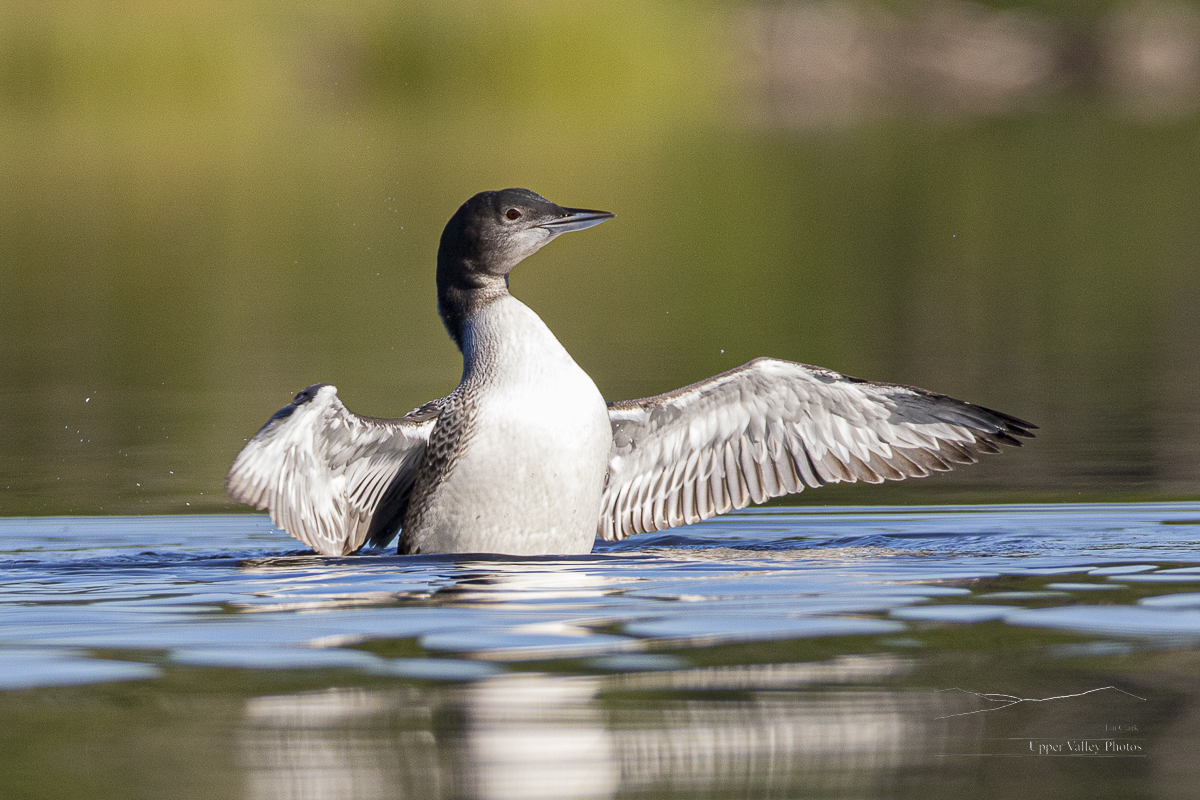
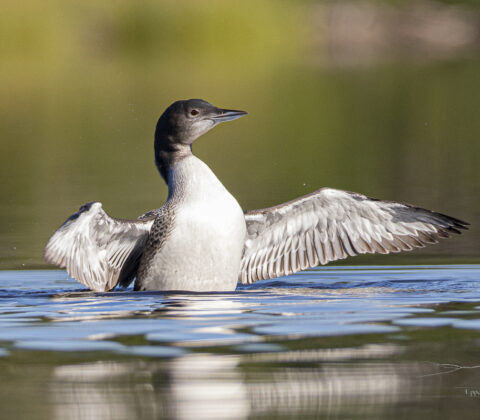
Loon Chicks Now Eight Weeks Old
Thanks to everyone who stopped by at the League of New Hampshire Craftsmen’s Fair. Nice to know people are actually reading the blog. My next show is the Capital Arts Fest, September 24 & 25 in Concord, NH.
Yesterday, I got a chance to check up on the Eastons. The chicks are now eight weeks old and seem to be doing well. They’re big – nearly as big as their parents. Their feathers have grown in and their bills have elongated. They’re diving and foraging for themselves, but still expect their parents to feed them. They’re getting independent, for much of the morning the family was spread out over something like a third of a mile.
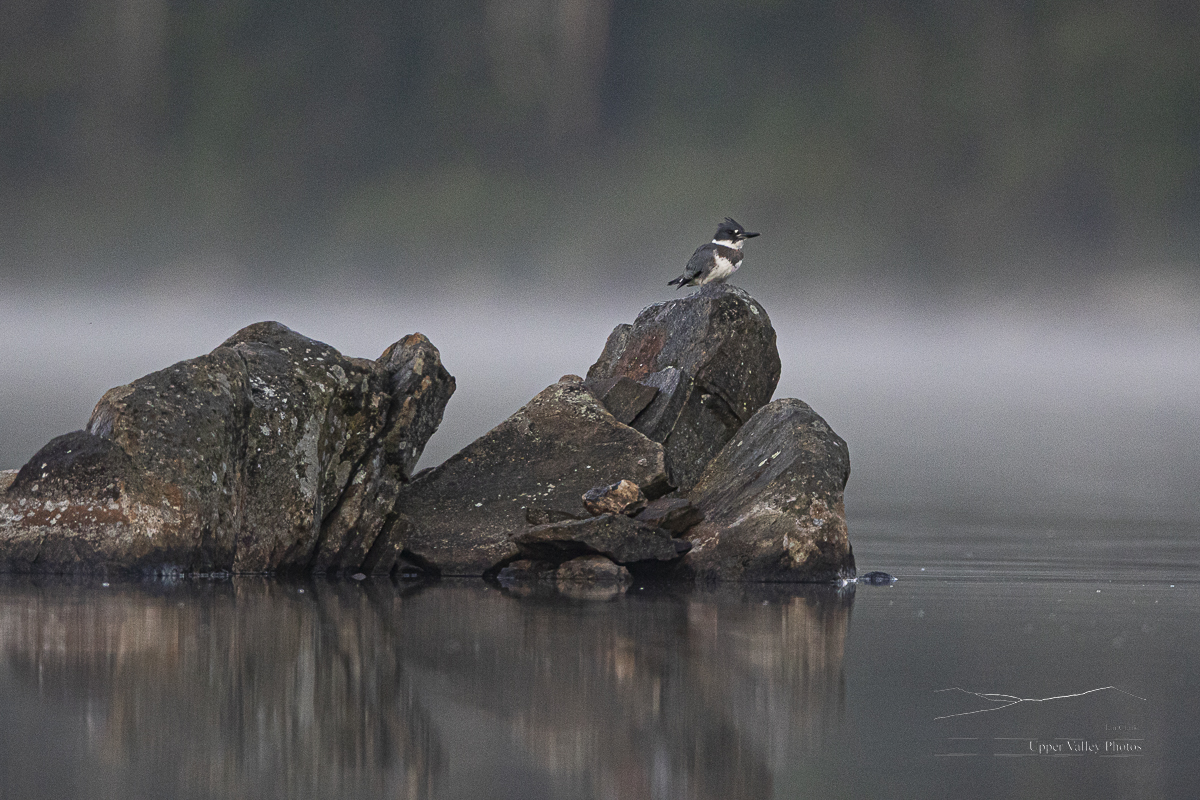
The morning started out with a beaver swimming by the family. The chicks were curious and swam to intercept the beaver. The beaver passed just a couple feet in front of them before circling back and slapping. Both parents rapidly arrived on scene. The parents keep a good eye out under water as the family retreated.
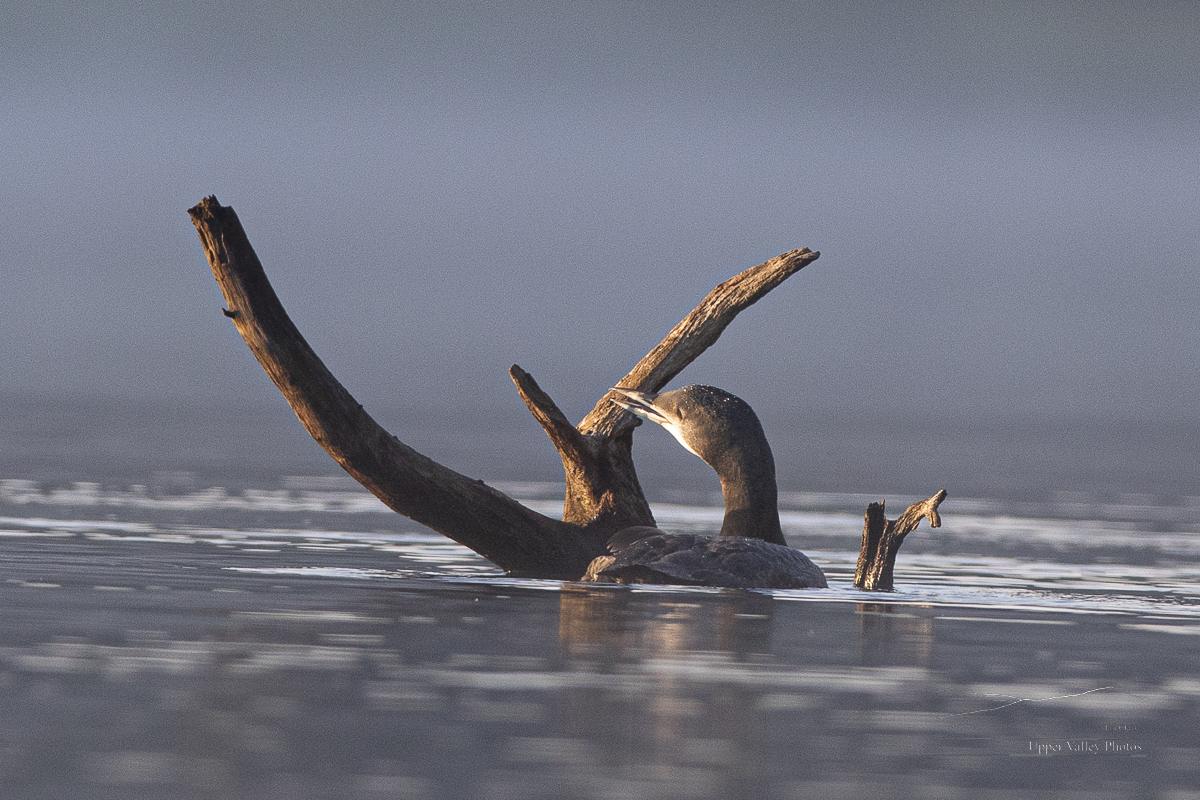
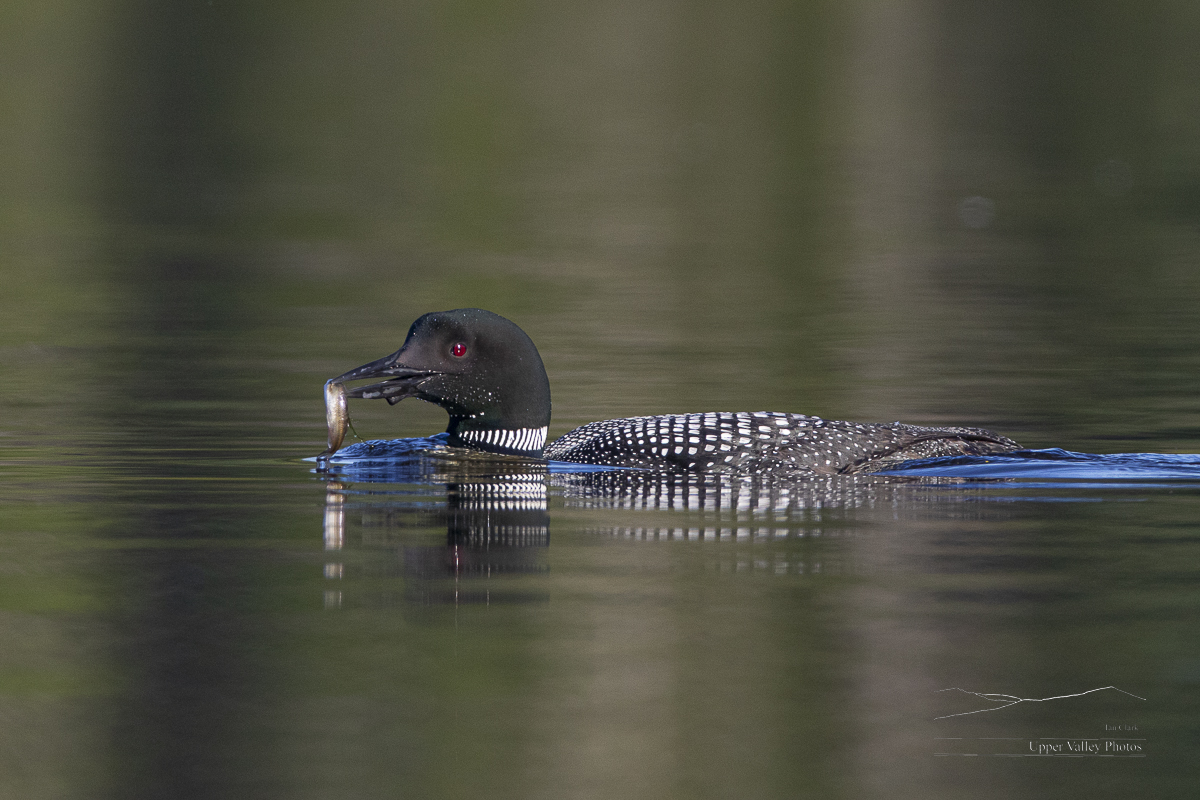
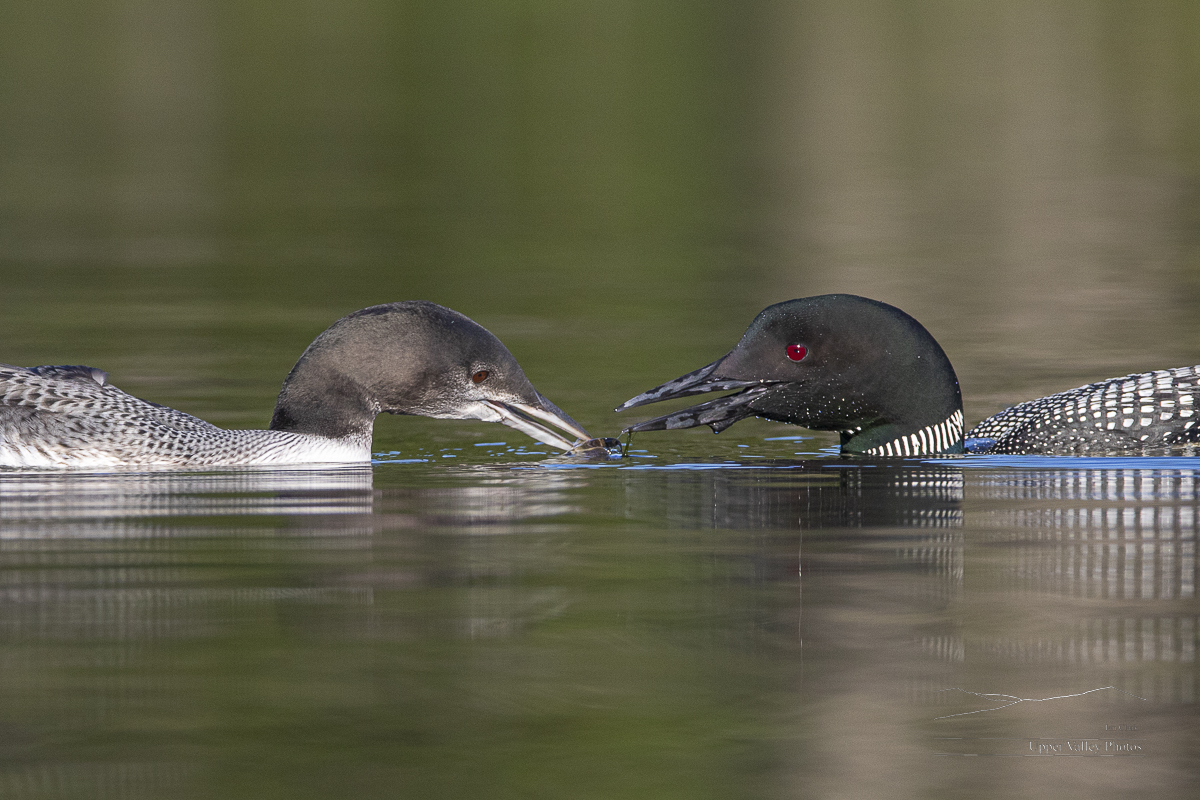


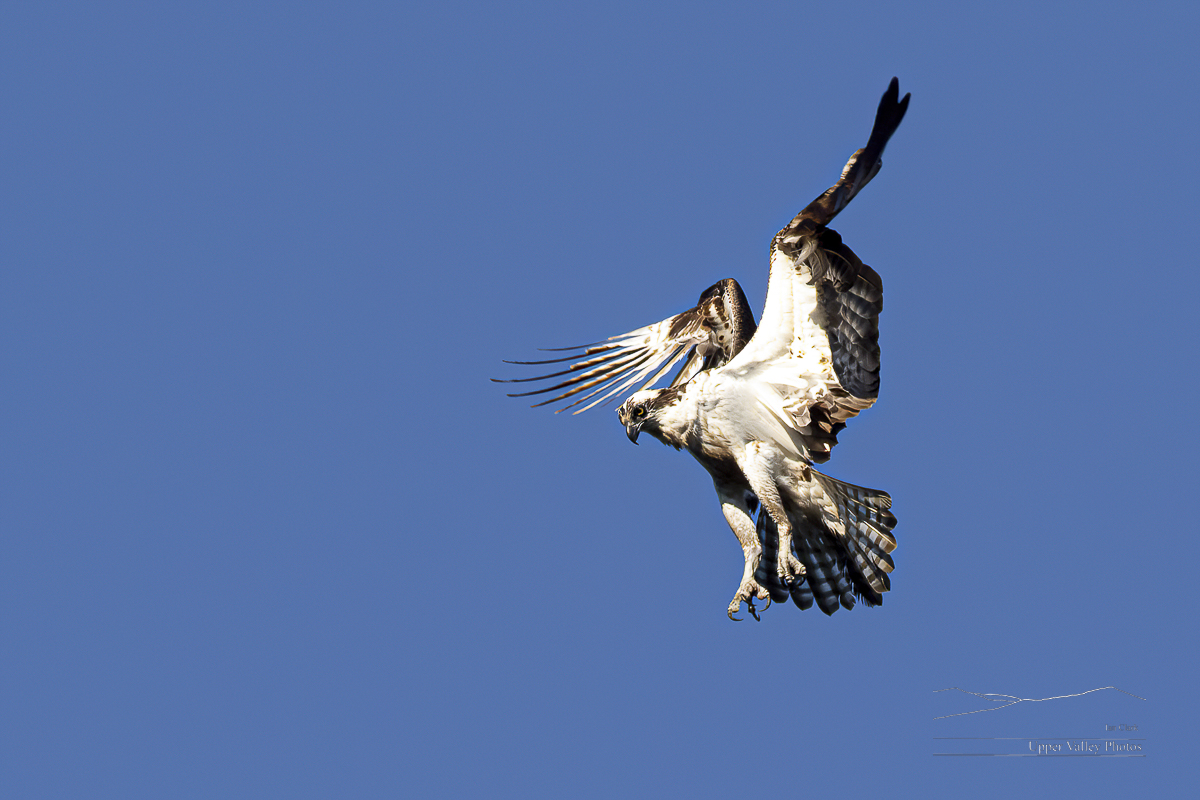
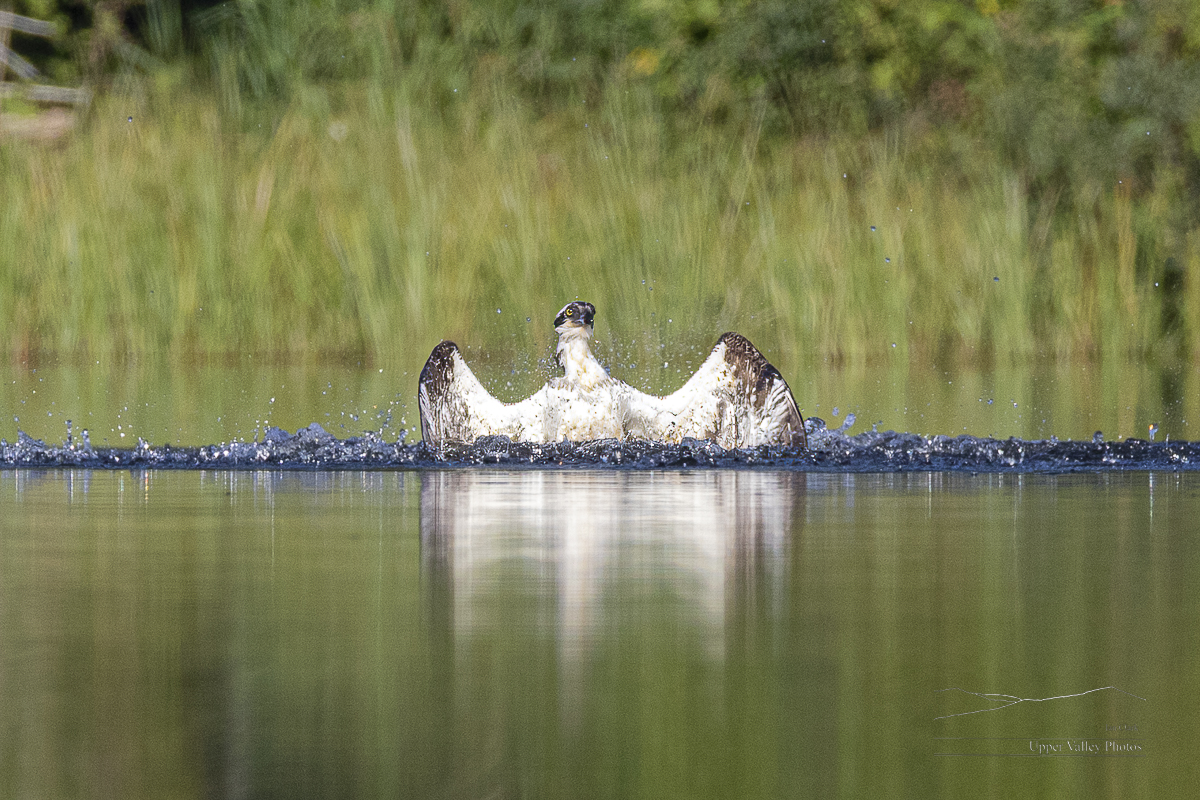

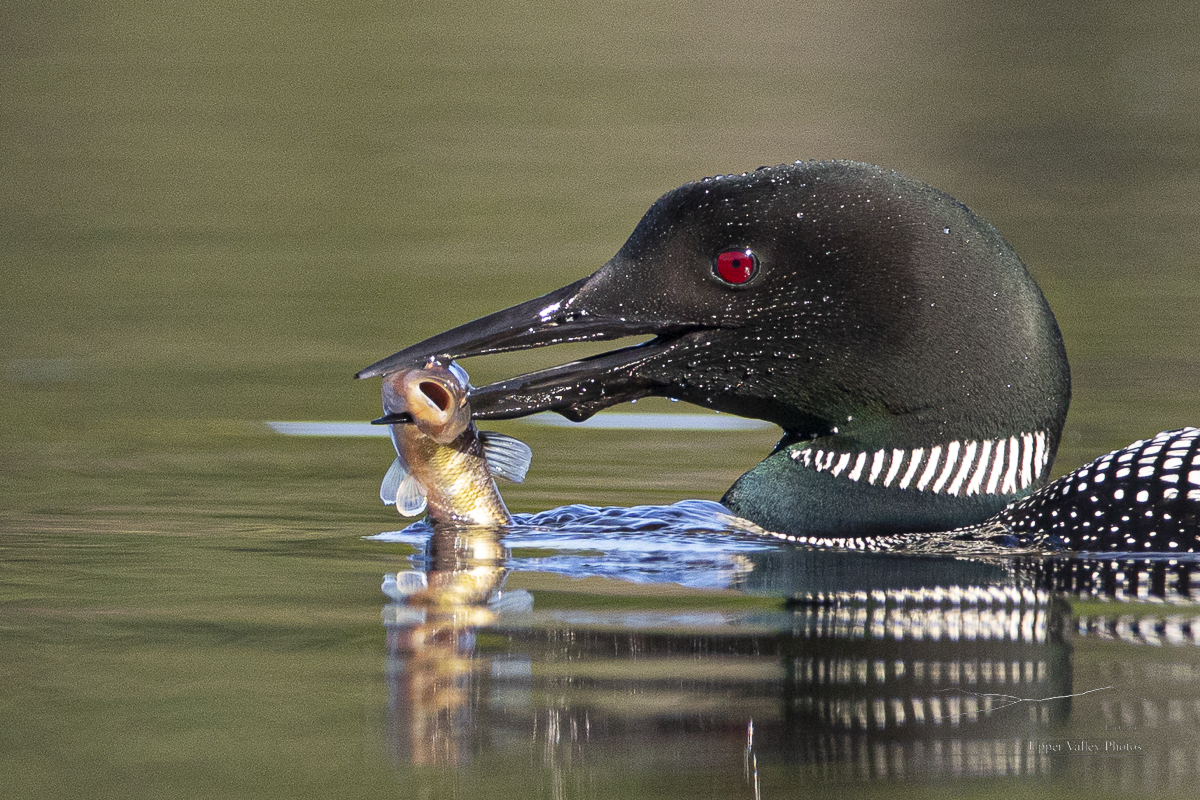
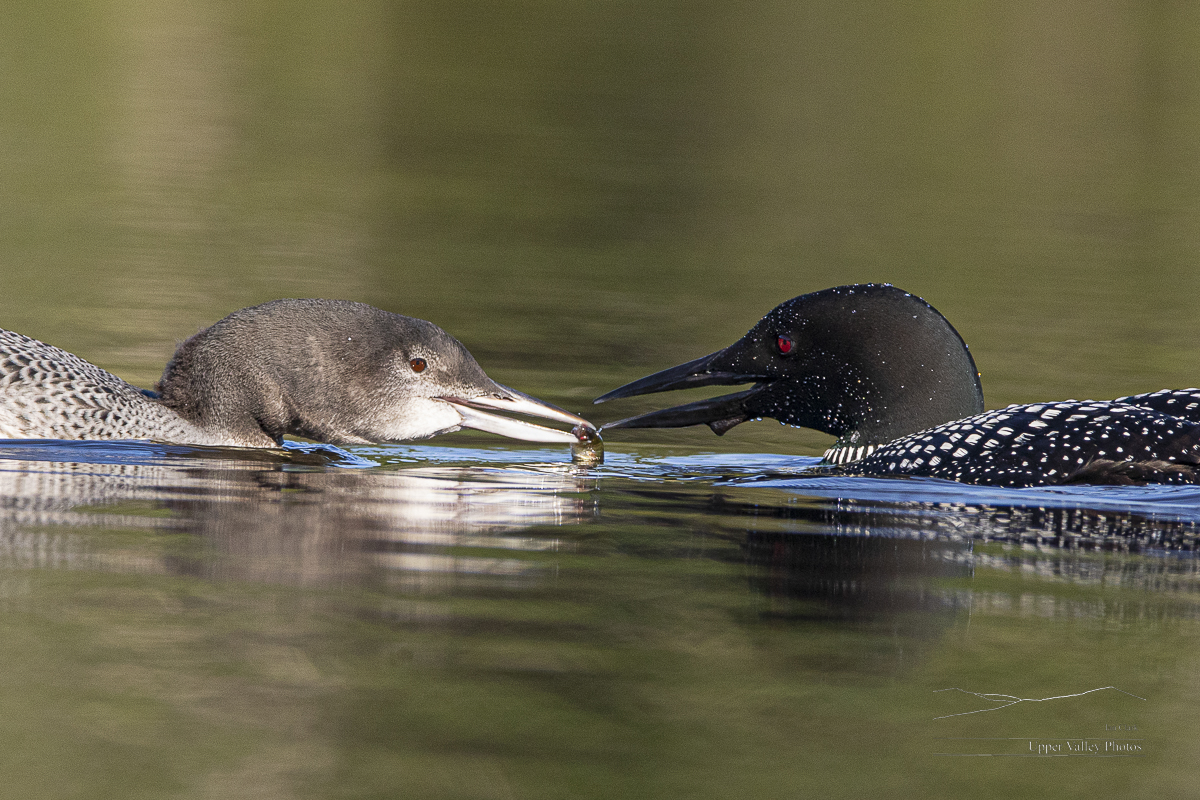

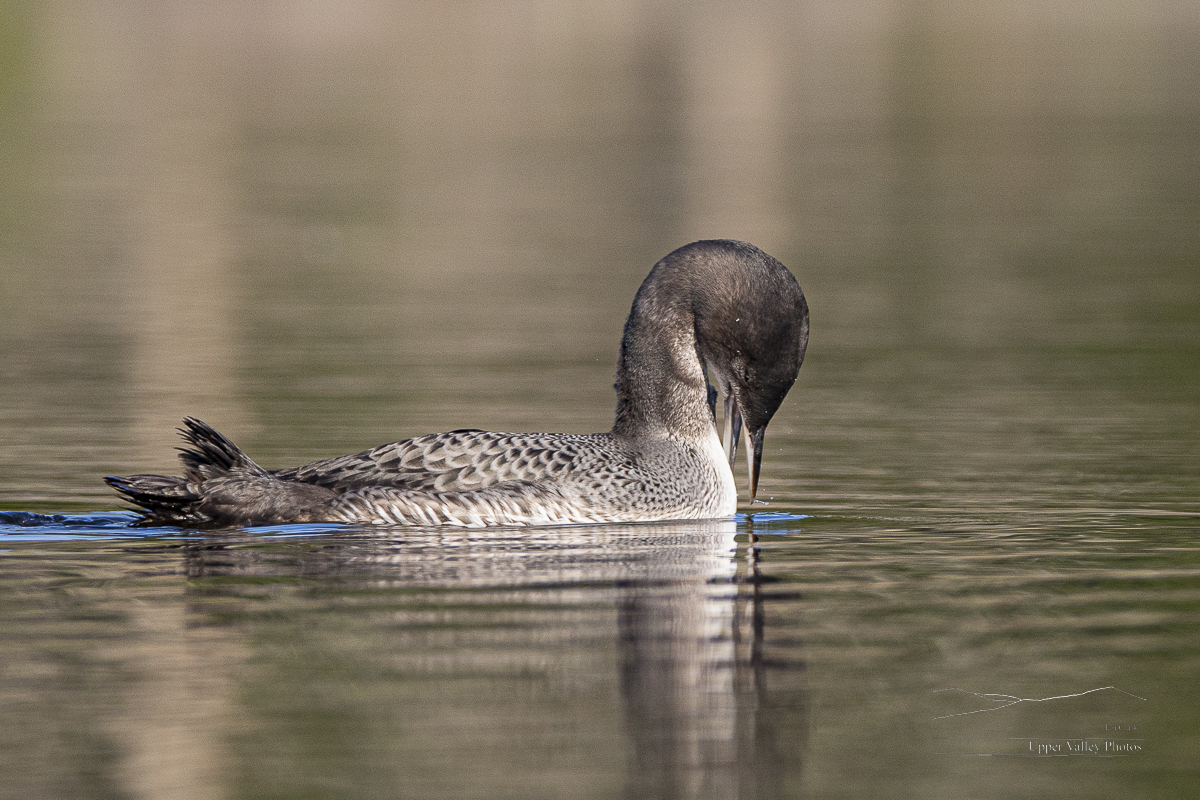



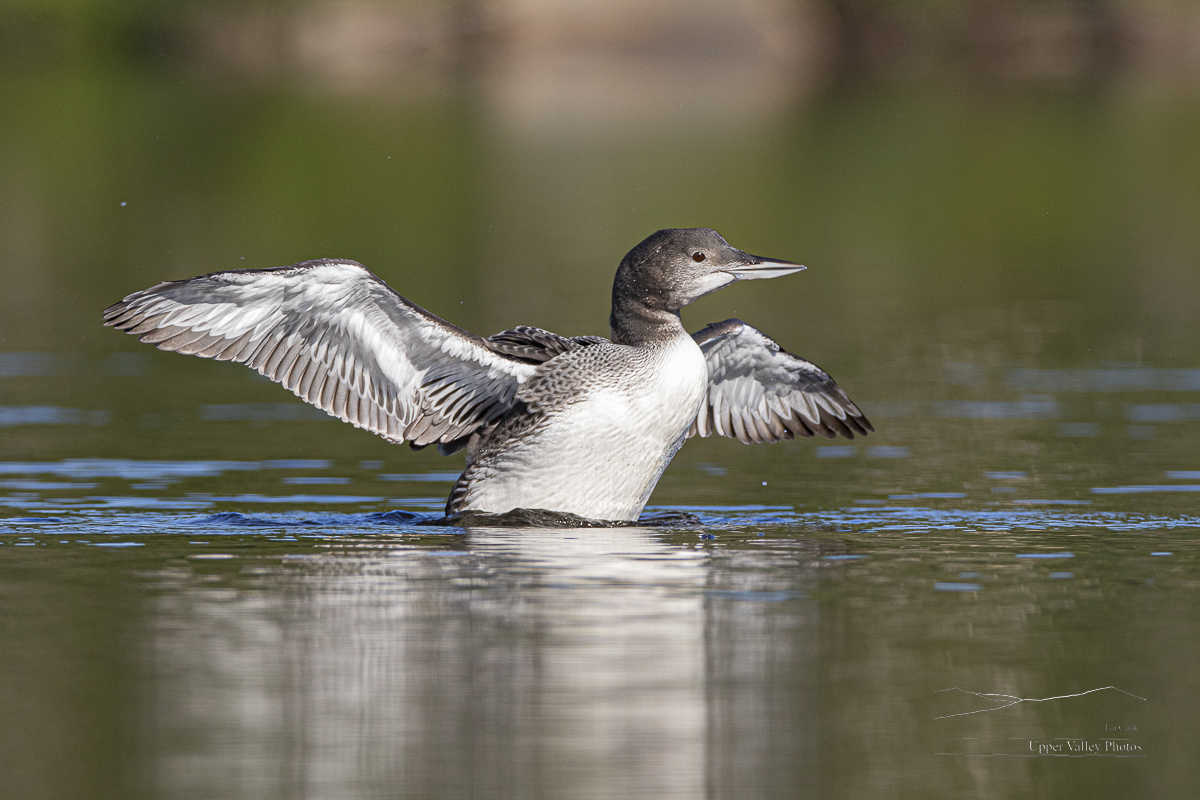
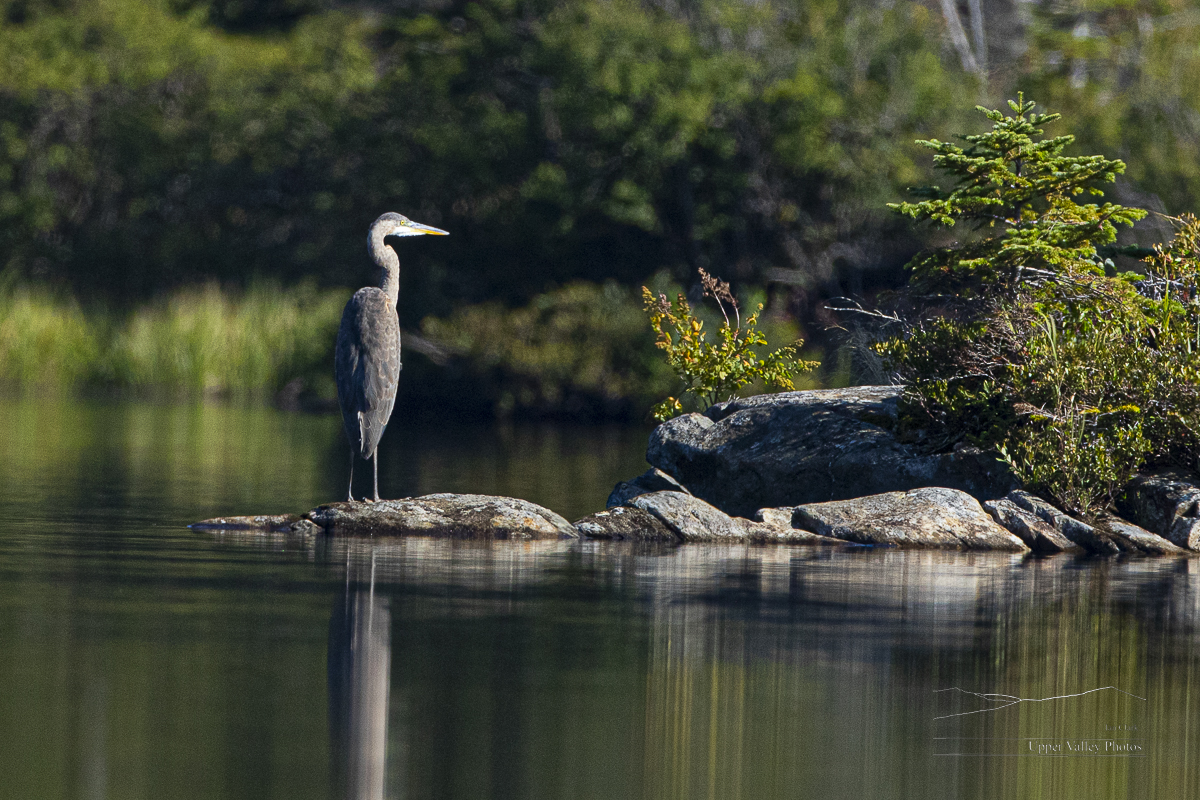
I’ll get out to check on our other families as promptly as I can, stay tuned!
Loon Chicks at Five and Six Weeks
Two of our loon families chicks are now six weeks old, the other family’s chick is five weeks. Let’s check in to see how they’re doing, as well as seeing what a few other critters are up to.
I’m going to miss posing next week, I’ll be down at the League of New Hampshire Craftsmen’s Fair in Sunapee. I’ll have lots of new prints and cards, I’m in booth 725, stop by and say hello.
And, yes, yes that bee hovering above the swallow from my last post did survive to buzz another day. Apparently, I should have added that to the caption…. Surprising how many people were concerned for the bee…
The Weston’s remaining chick (on the western pond I’m watching) is doing well. There was an intruder in the neighborhood again, the parents were alerted and searching for him. I didn’t see any interaction with the intruder and the chick made only brief appearances while mostly hiding in the brush. There were a few other animals around.
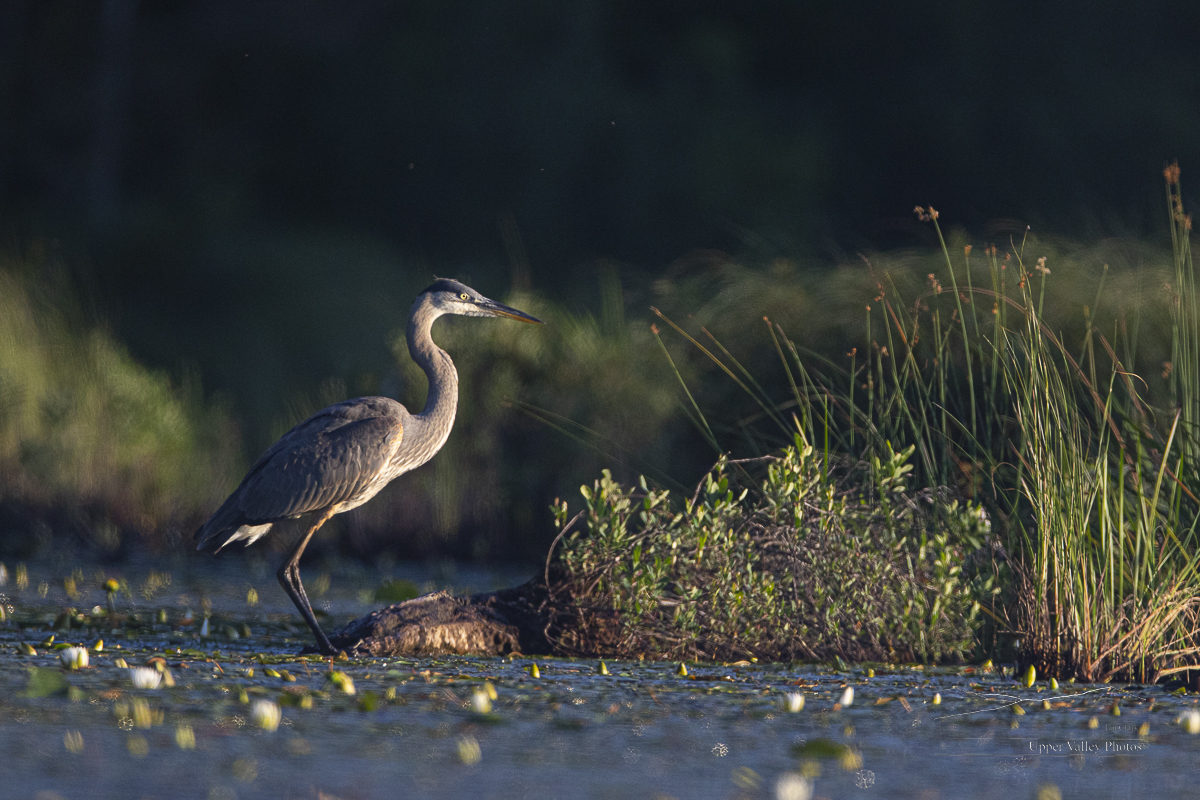
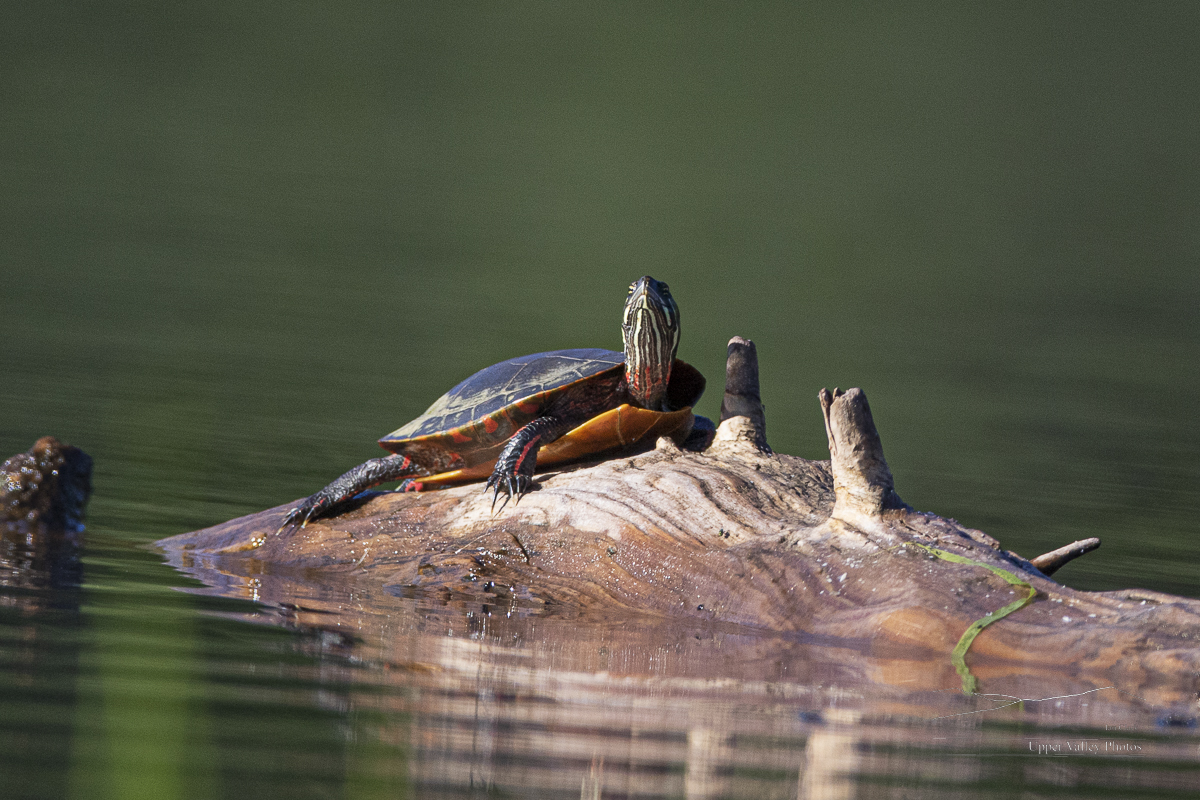
I made three visits to the Eastons before getting good conditions for photography. The first two mornings were peaceful, this morning they faced an intruder.
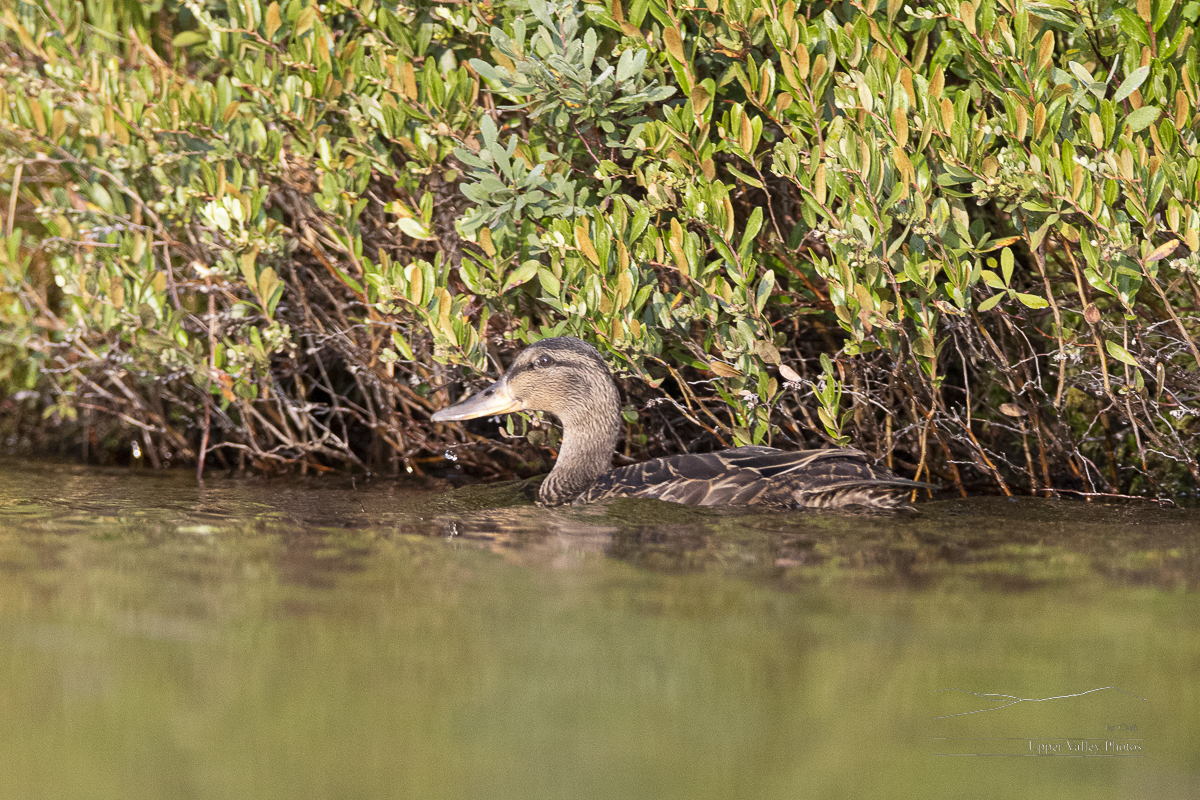
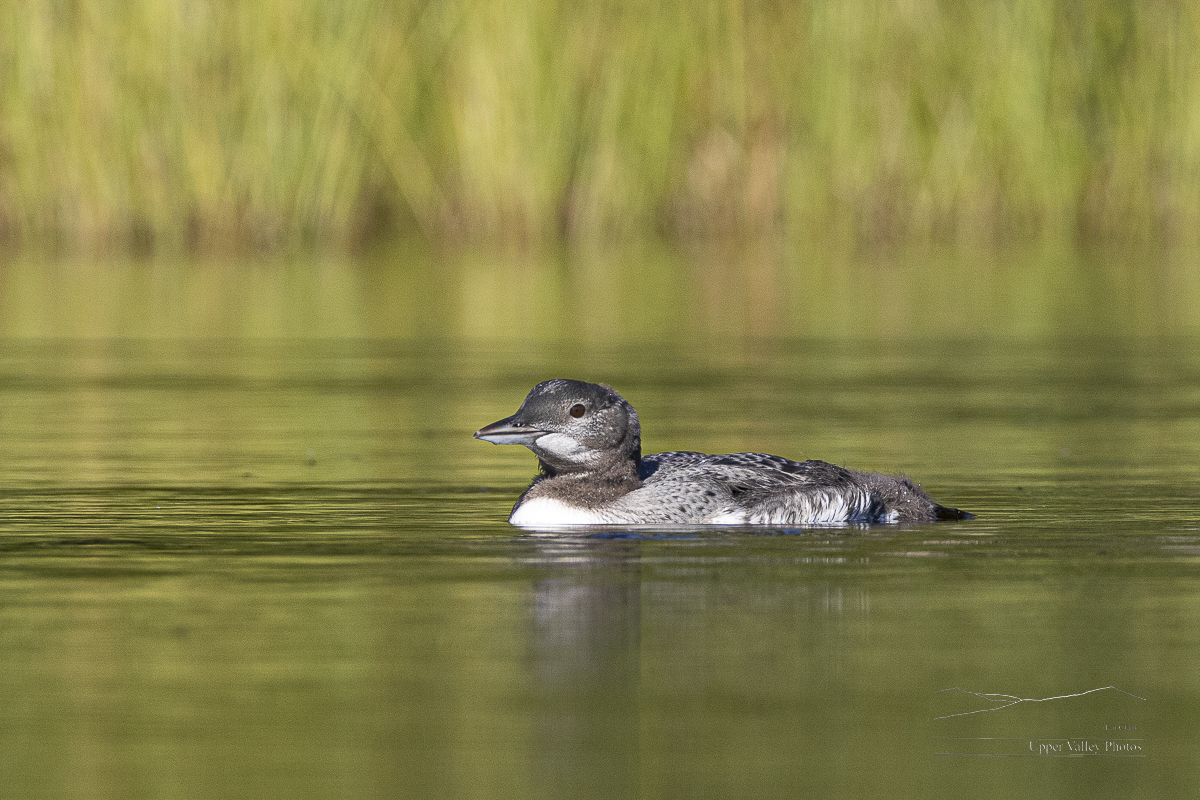
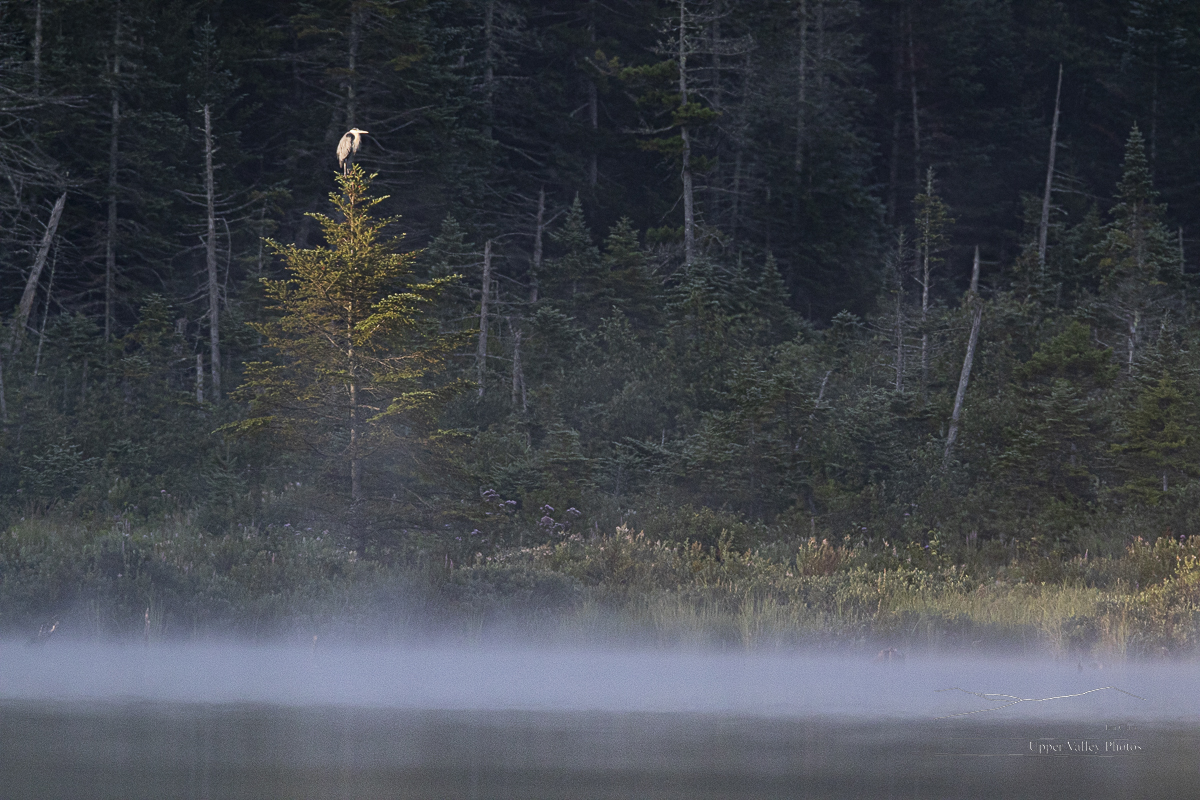


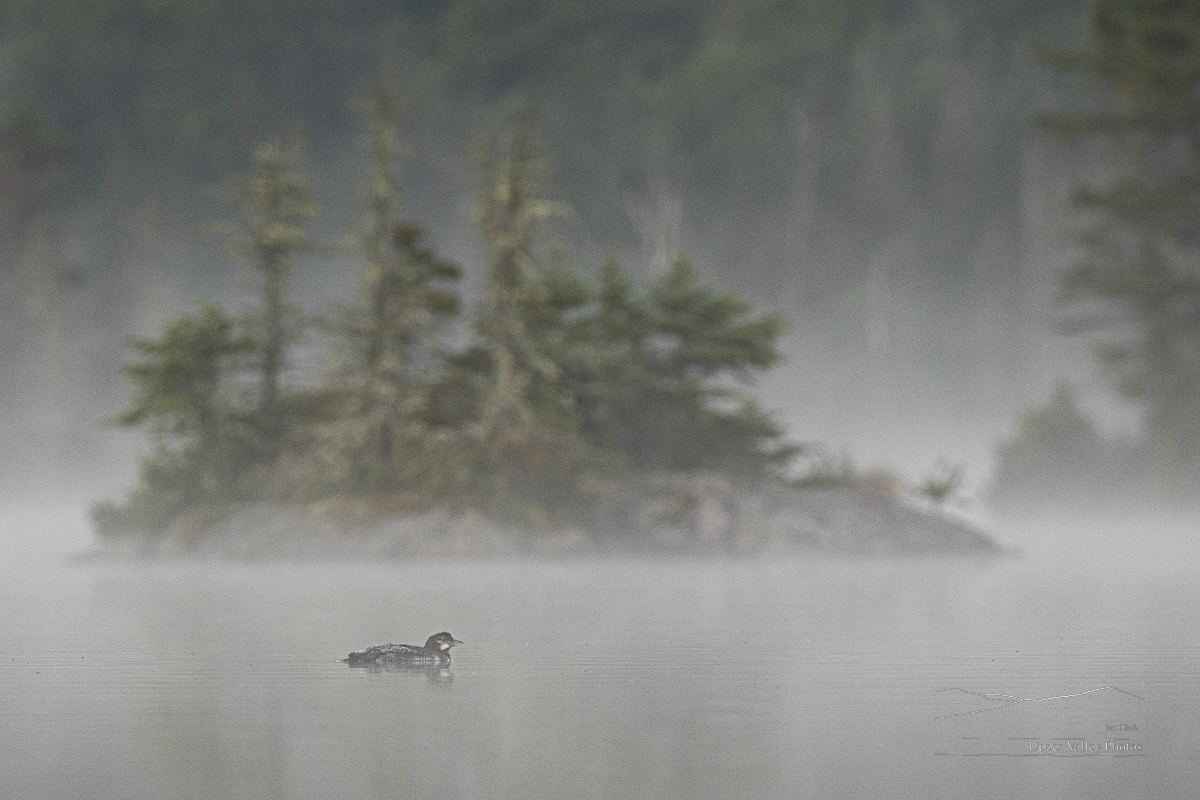
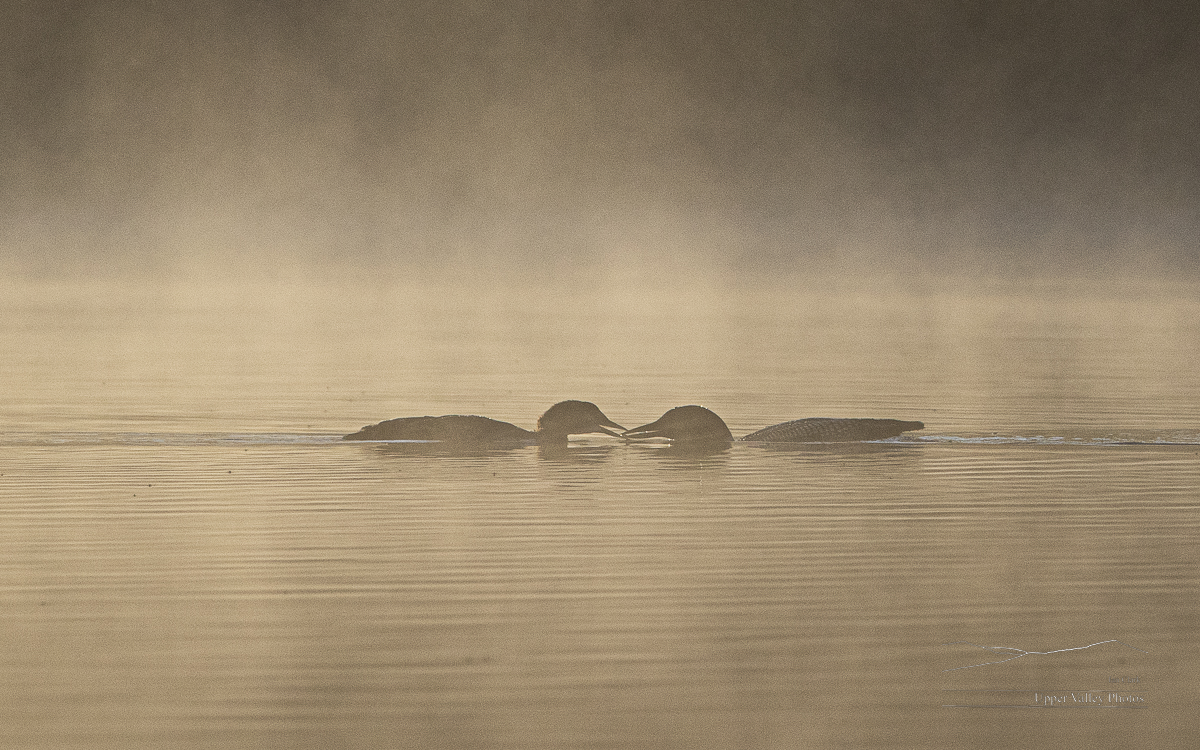
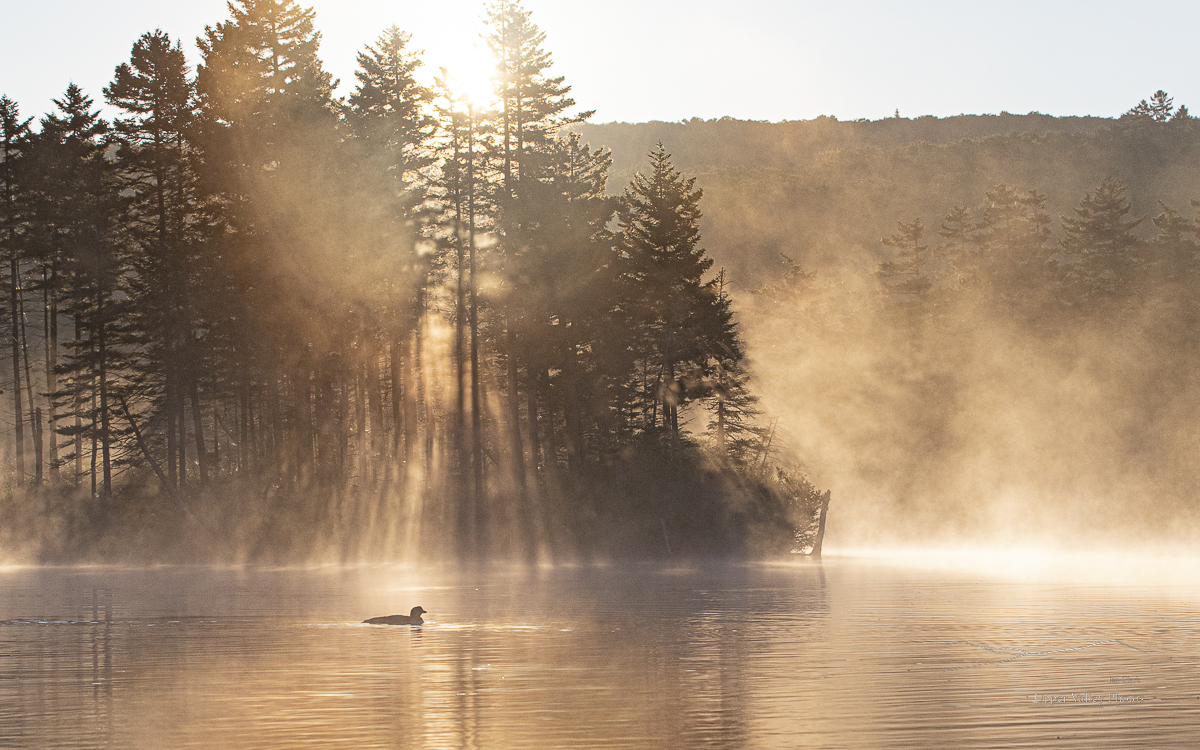
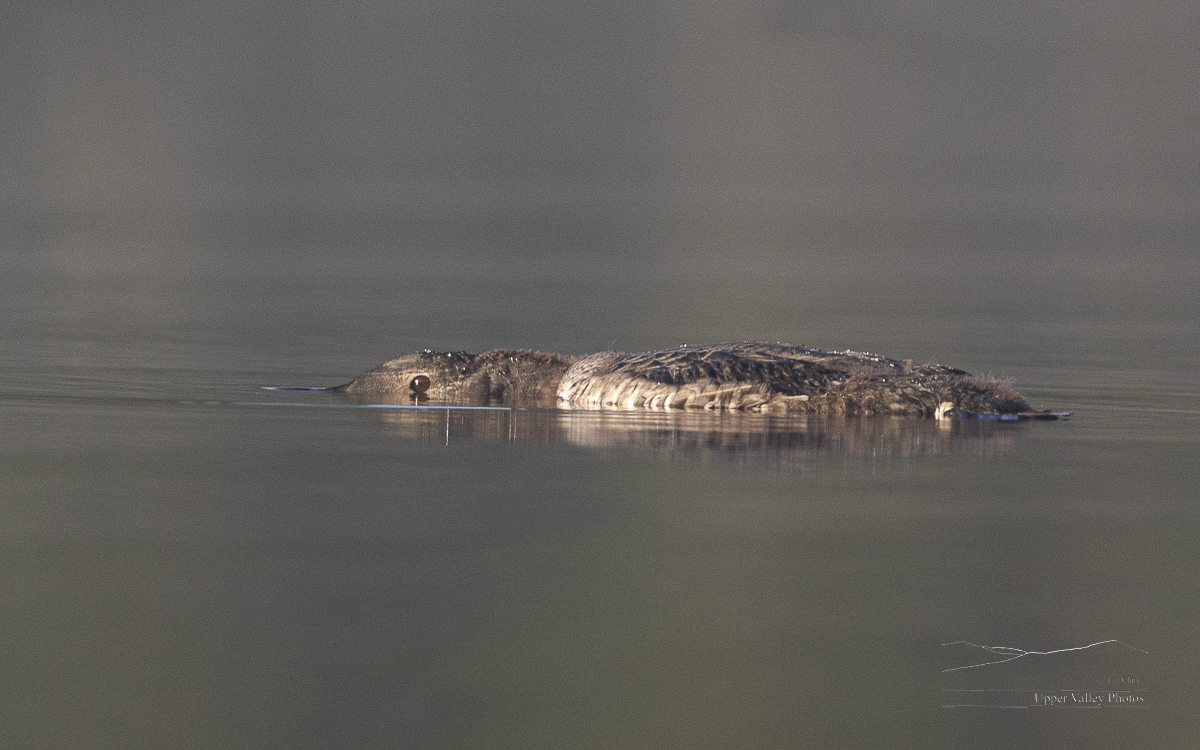
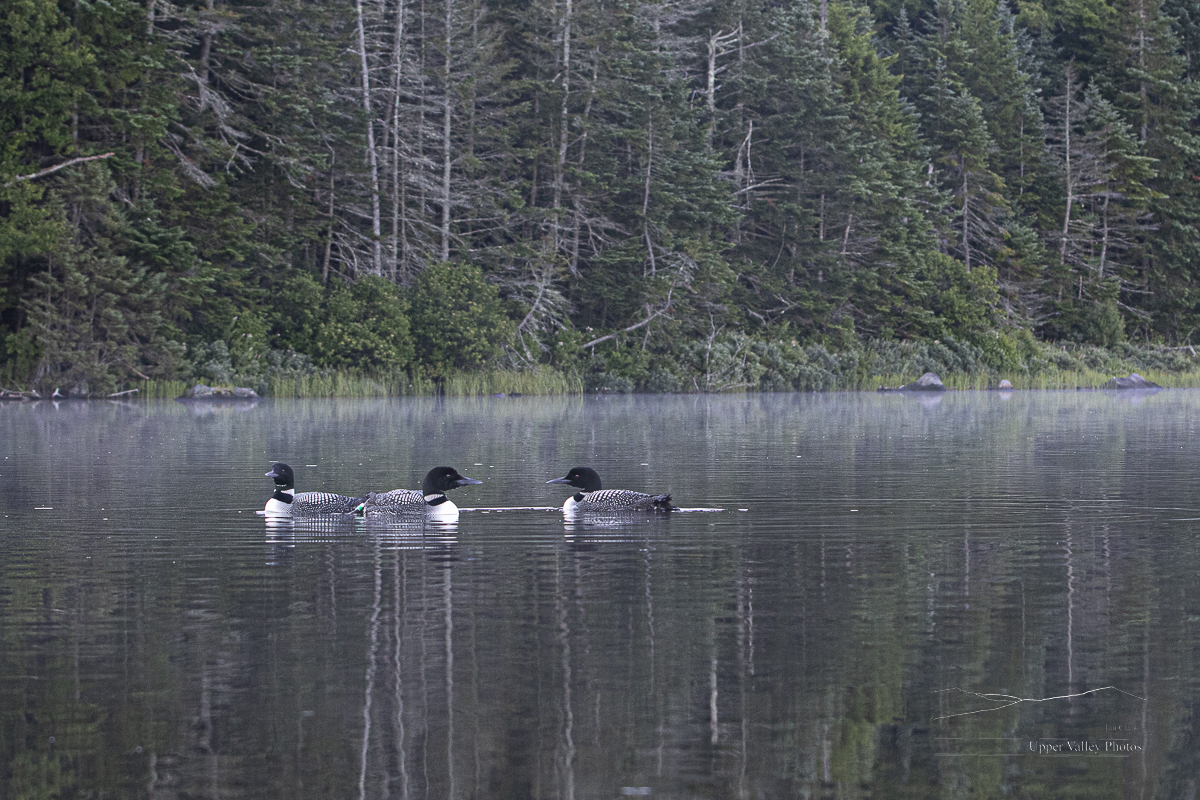
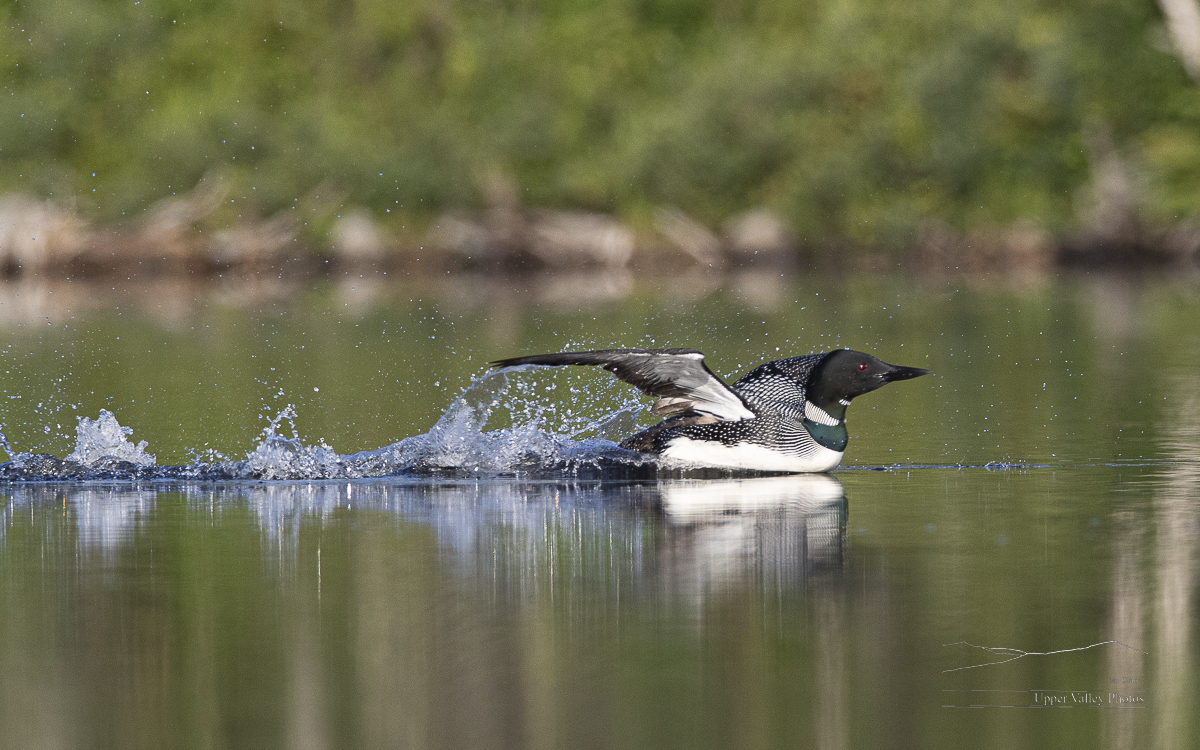
“


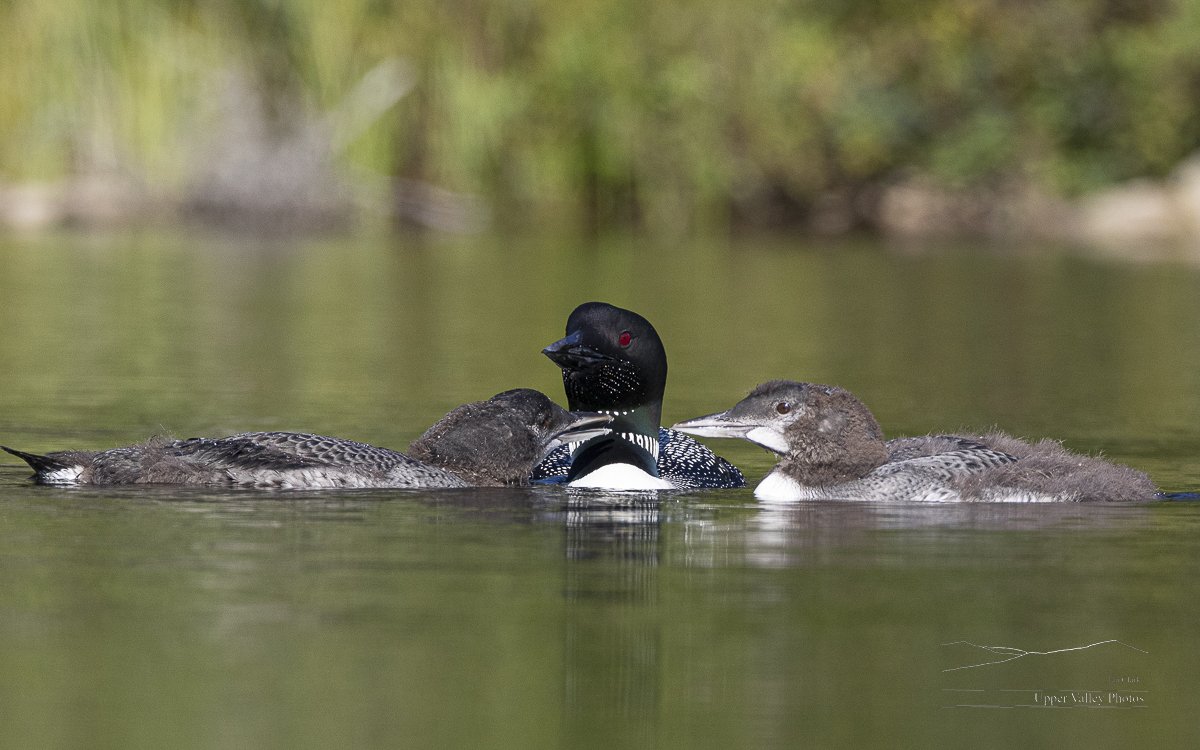
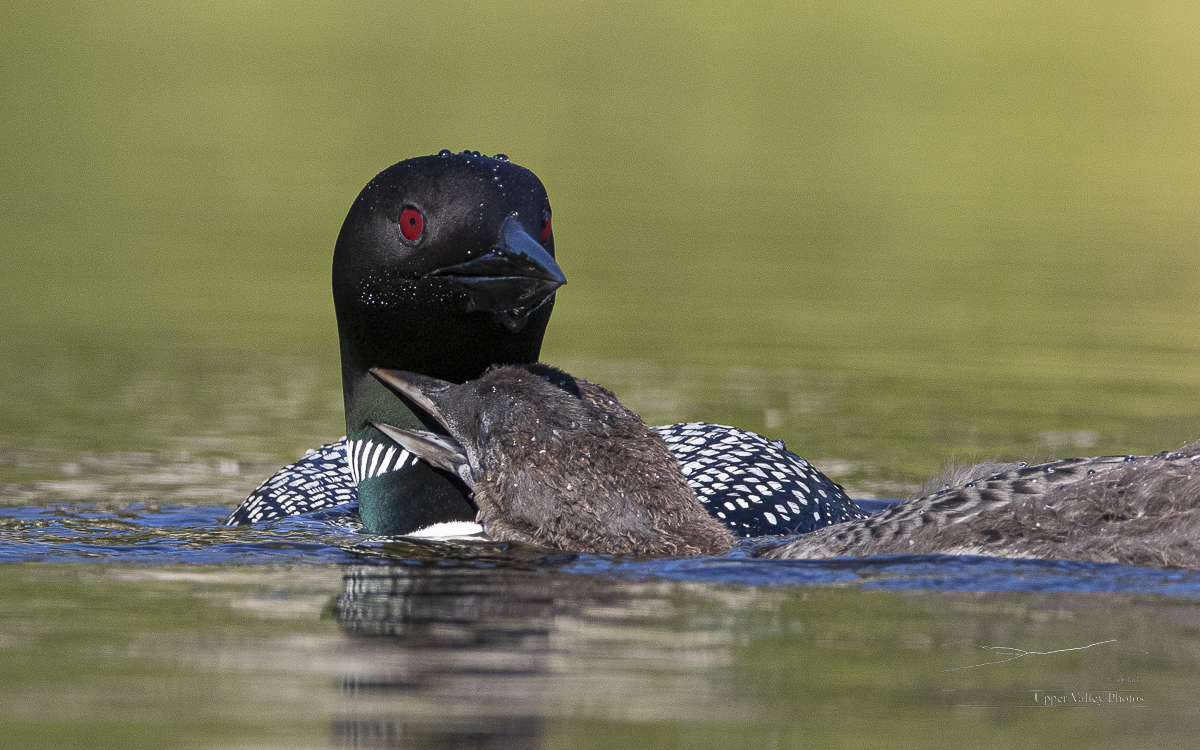

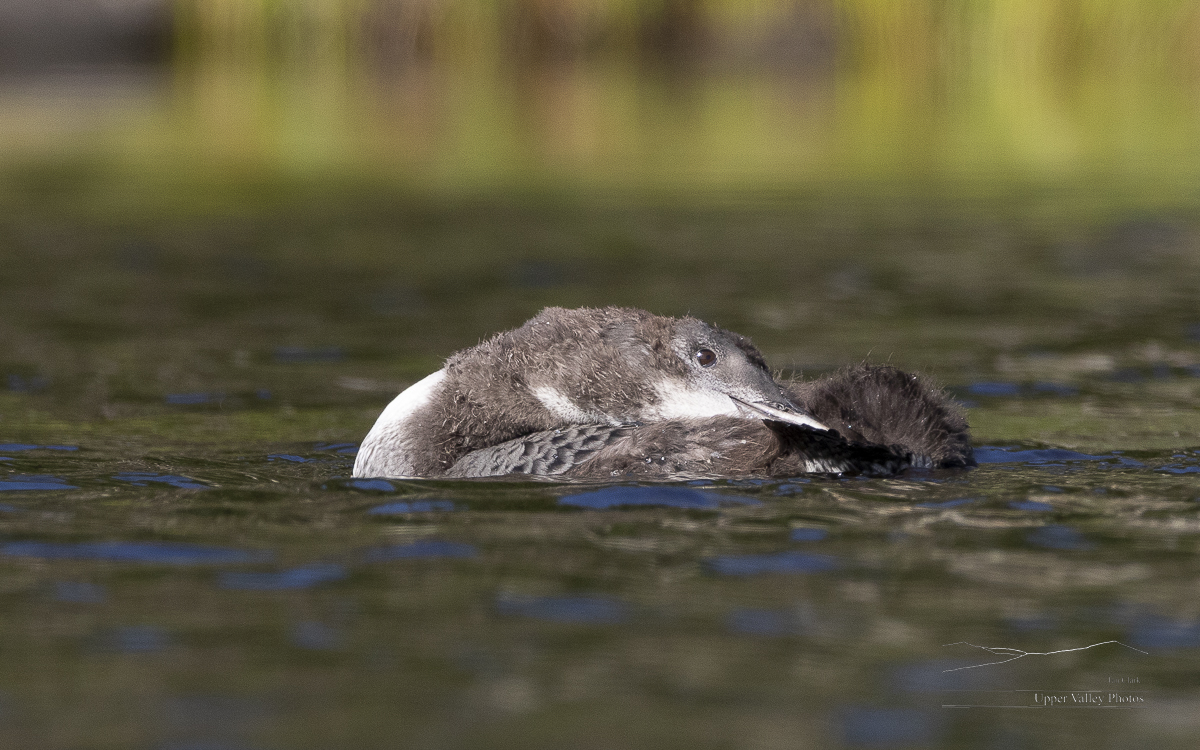
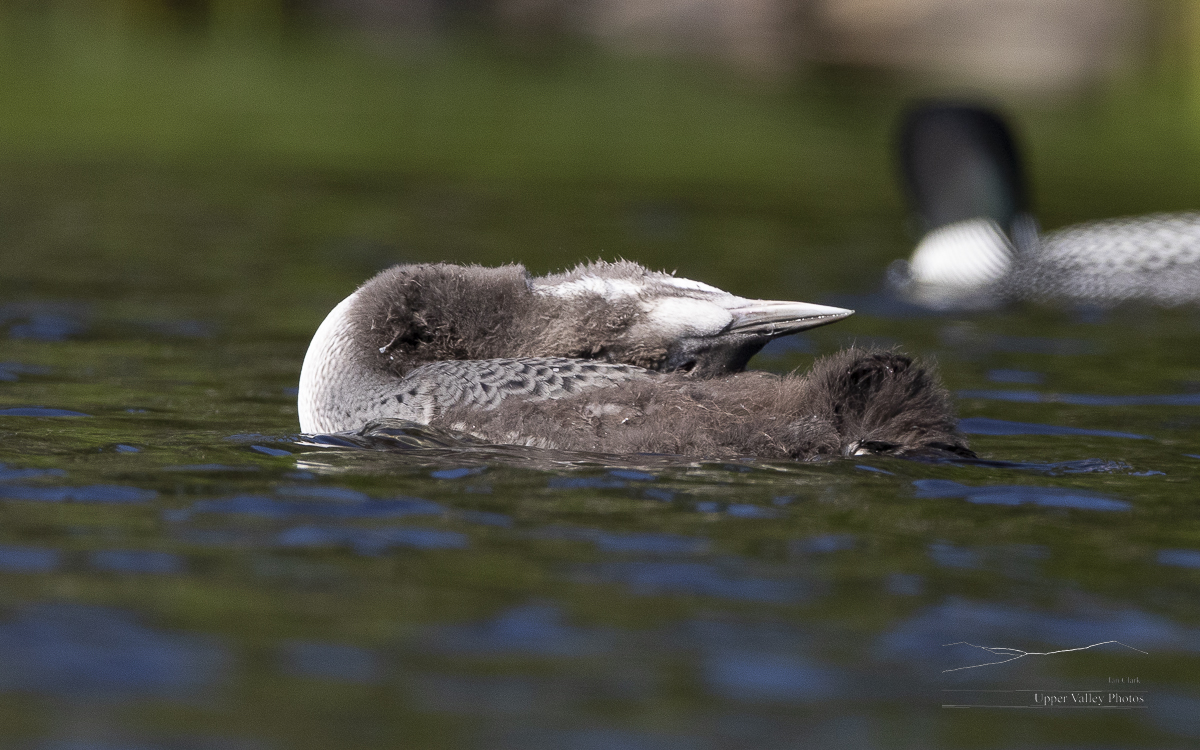
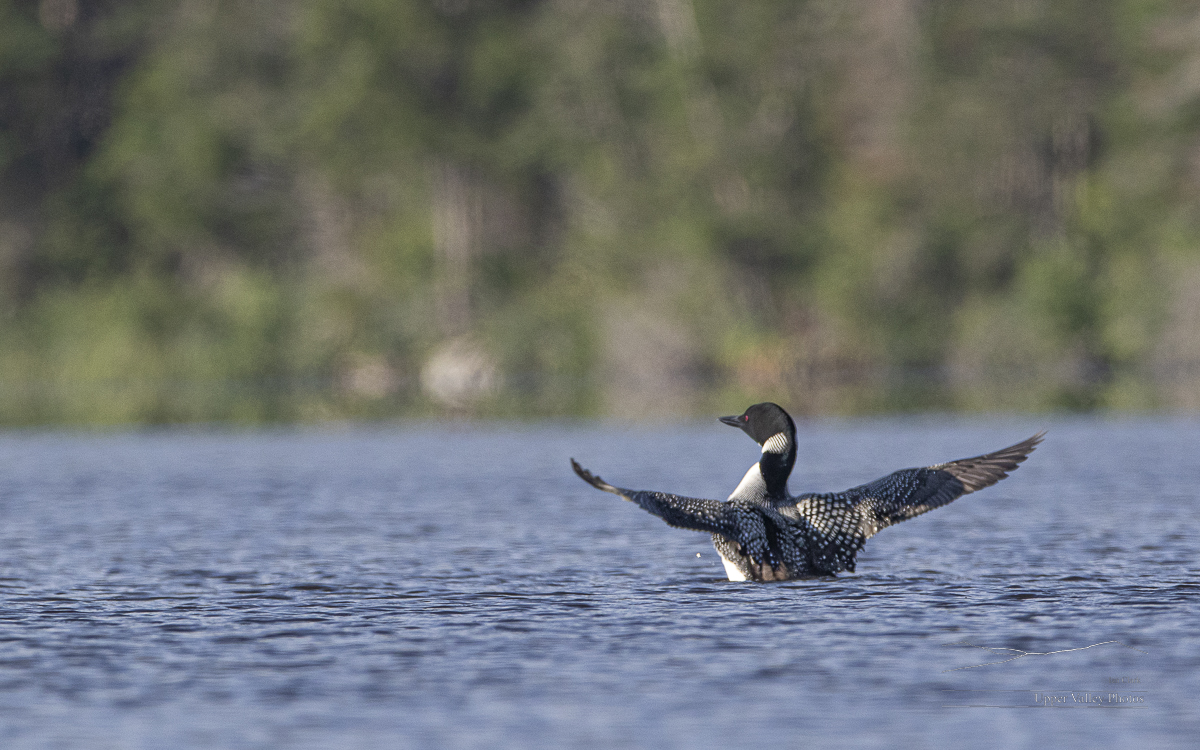
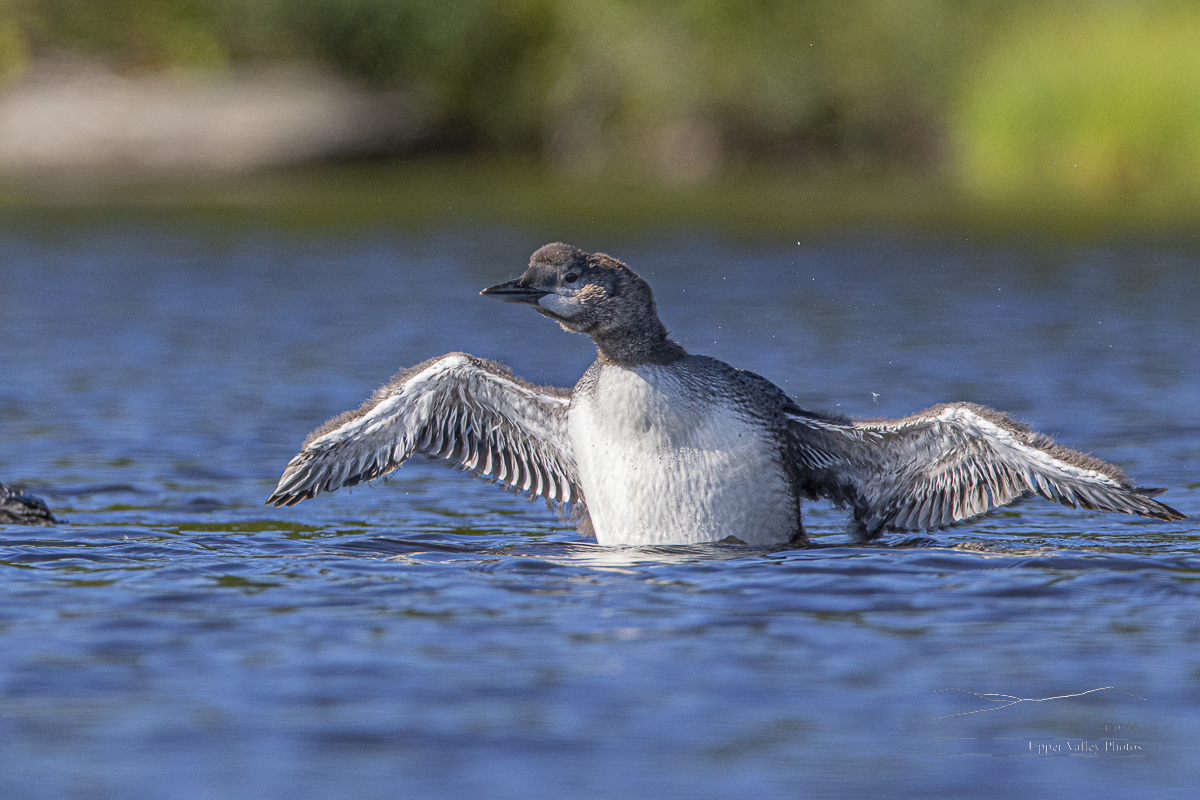
The intruder stayed at the far end of the pond for the remainder of the time I was on the pond. I’m looking forward to getting back up to visit them again.
If you like my posts, please feel free to share them on your social media with the really annoying buttons on the left (they shouldn’t be showing up on mobile devices).
Loon Chicks At Four And Five Weeks
The loon chicks to my east are five weeks old this weekend. All four on both ponds, the ‘Eastons’ and the ‘Middletons,’ seem to be doing well. The pond to my west, the ‘Westons,’ has sad news, the parents have lost a chick.
Our bluebirds’ second brood is ready to fledge. Wednesday afternoon the adults started calling to the chicks to leave the box. Thursday they were more insistent. Friday they sounded impatient. Saturday morning, two of the four chicks left the box. This morning their are still two chicks in the box. Mom and dad have stopped calling, they’re busy feeding the two that fledged. The two in the box are looking out the door, trying to get up the courage to make the leap.
The League of New Hampshire Craftsmen’s Fair is August 6-15, I’ll be there with lots of wildlife prints, cards and more. Other images are available through my web site, www.IanClark.com. It takes me some time between capturing an image and getting prints made. If you see a photo that you’d like in one of my posts, send me an email and I’ll bump that image to the head of the queue.
The Weston family couldn’t be found during last week’s census. They’ve been under pressure from intruding loons all spring. They’re on a small pond, not being found in 90 minutes of searching was worrisome. I love how people watch out for ‘their’ loons, I heard from folks who live or have camps on the pond, worried that they hadn’t seen the loons for a couple days. A couple that live on the pond set out Monday to have another look and found the adults and one chick hidden in a remote part of the pond, a much better outcome than we’d feared. I visited Friday the pond Friday morning.
We’ll never know what happened to the missing chick. There are lots of threats, eagles, otters, coyotes if they get too close to shore and more. The intruding loon is also a likely suspect.
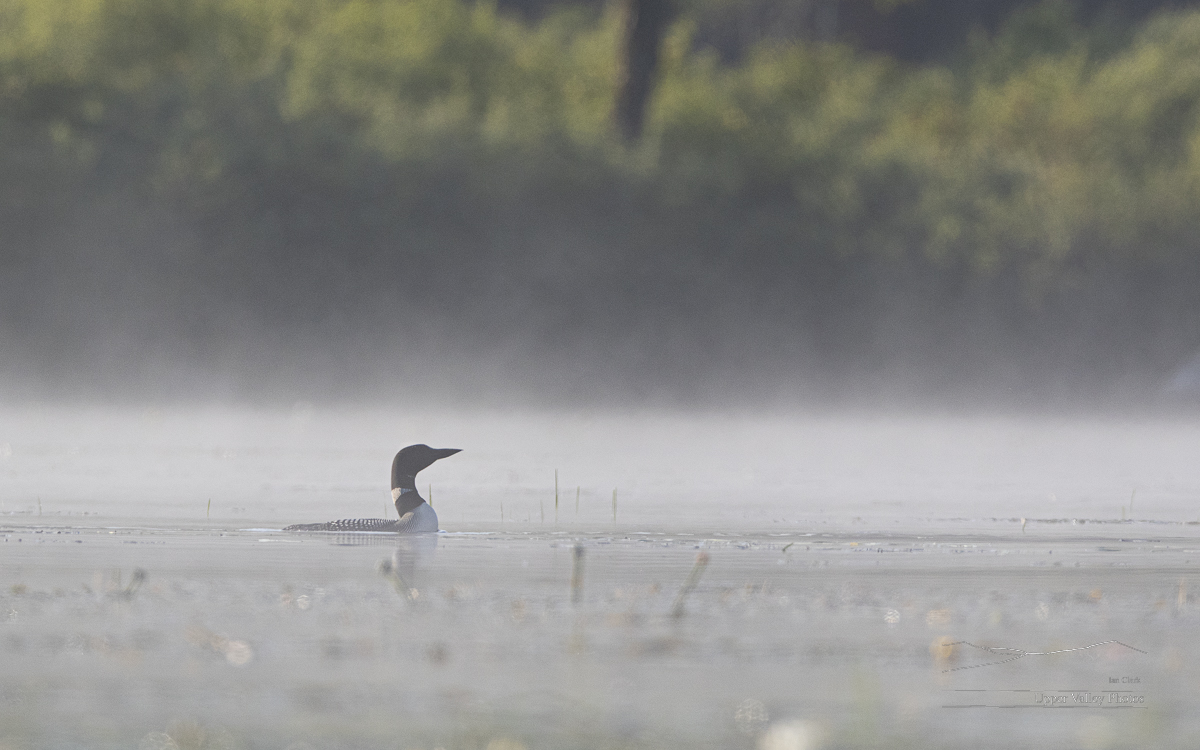

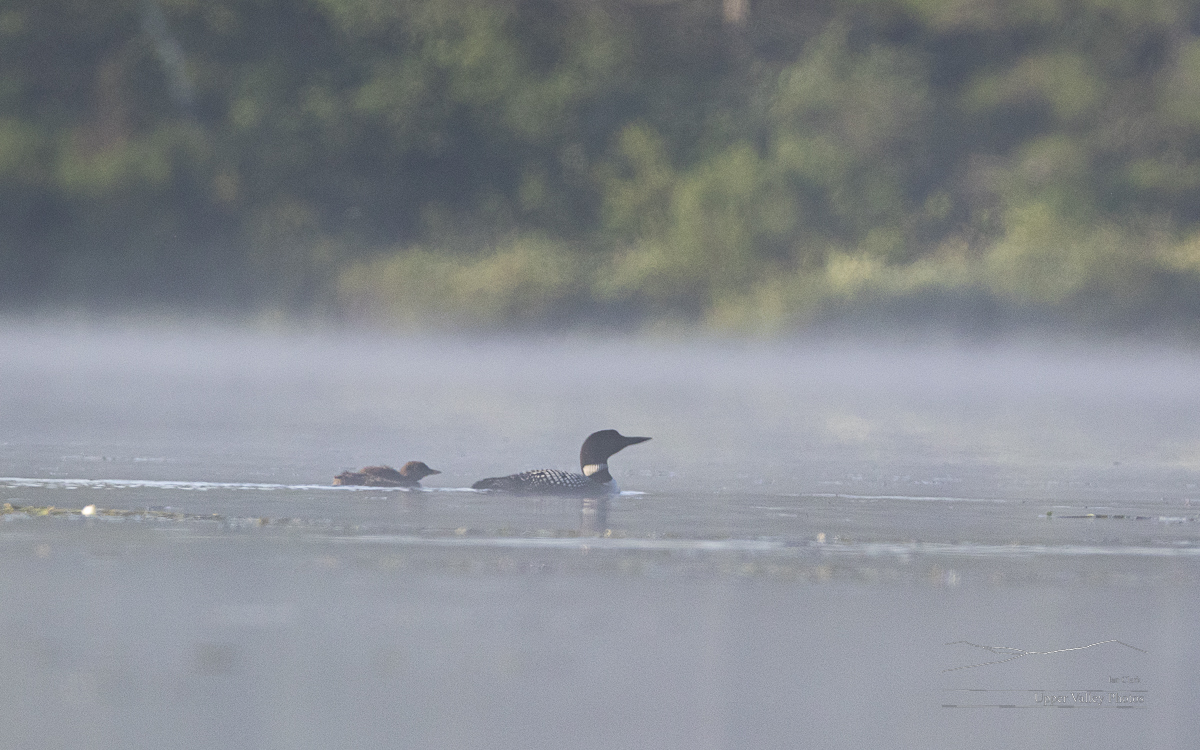
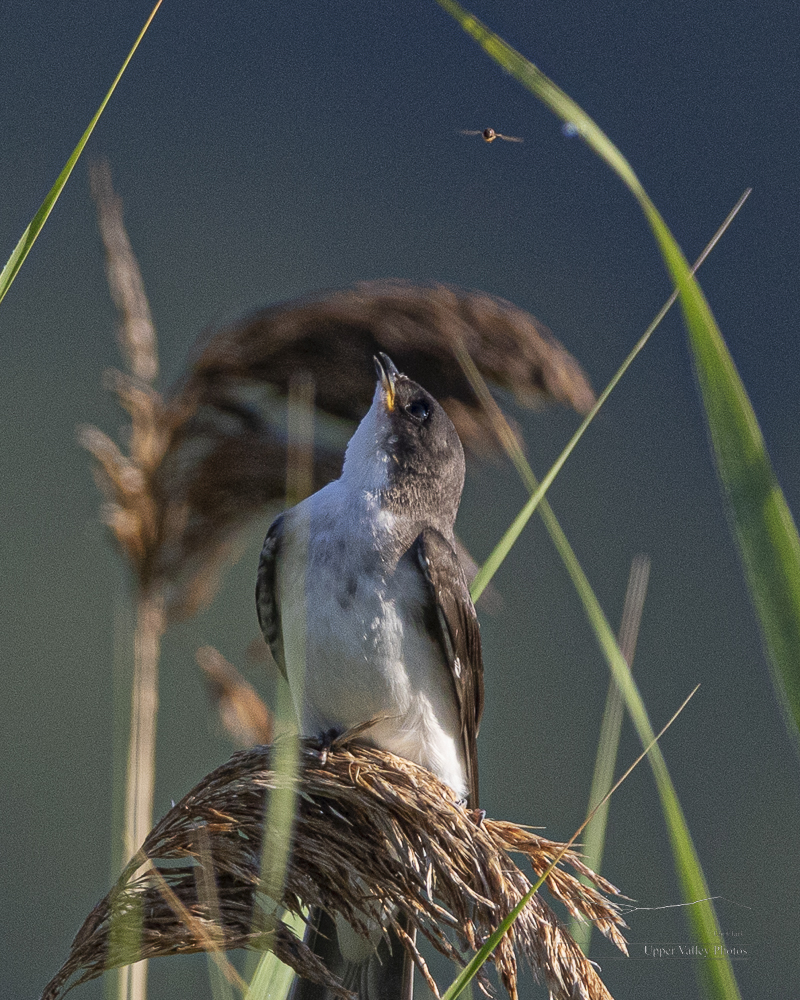
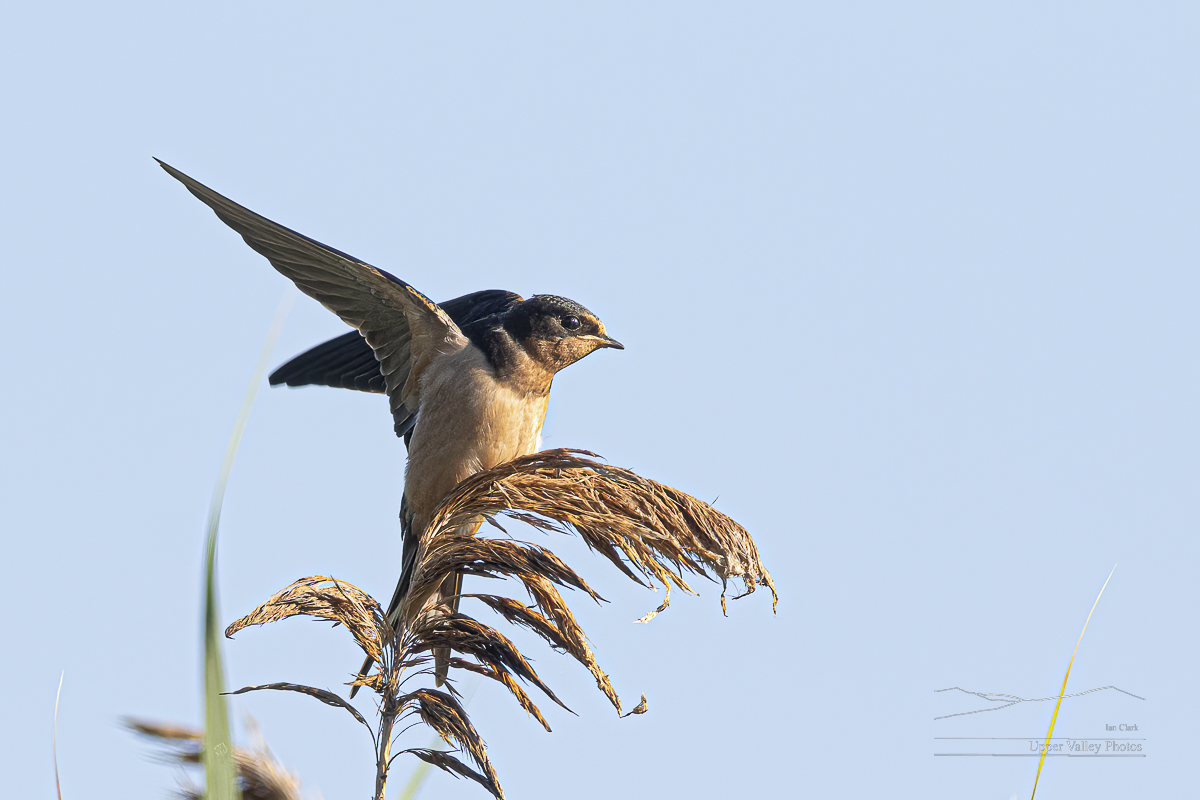
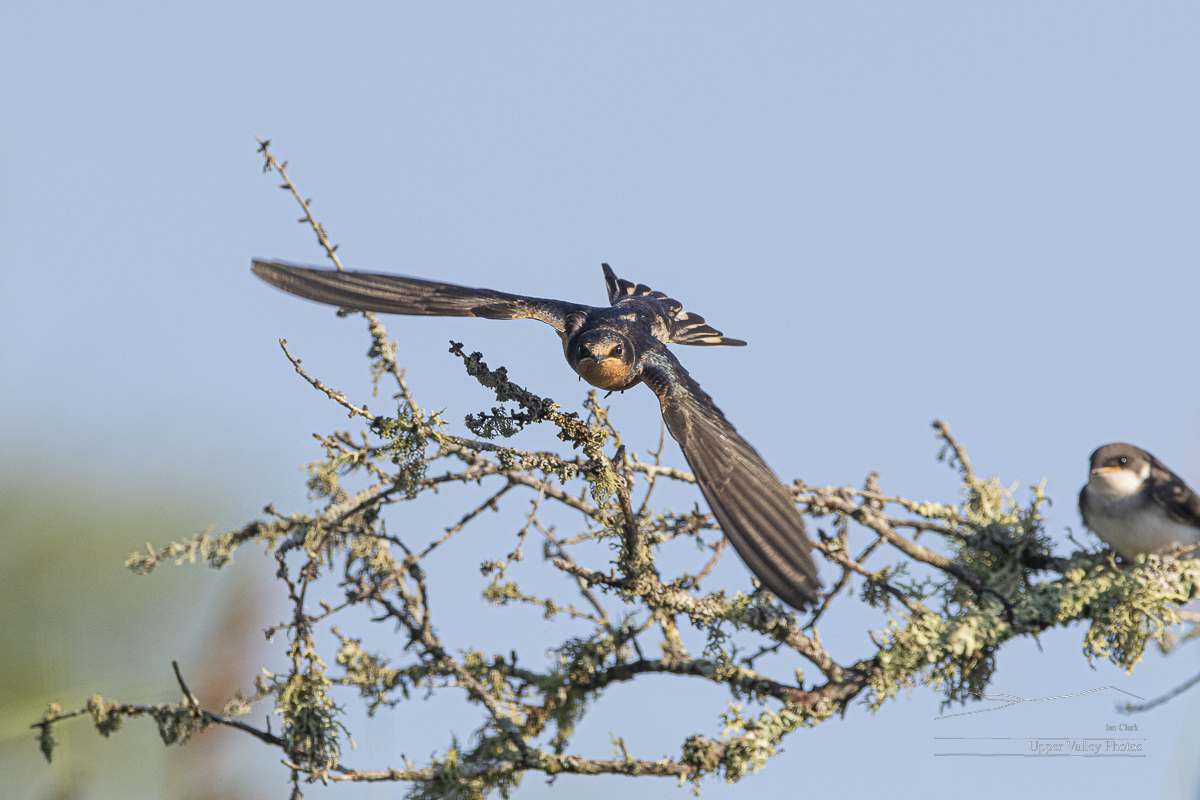
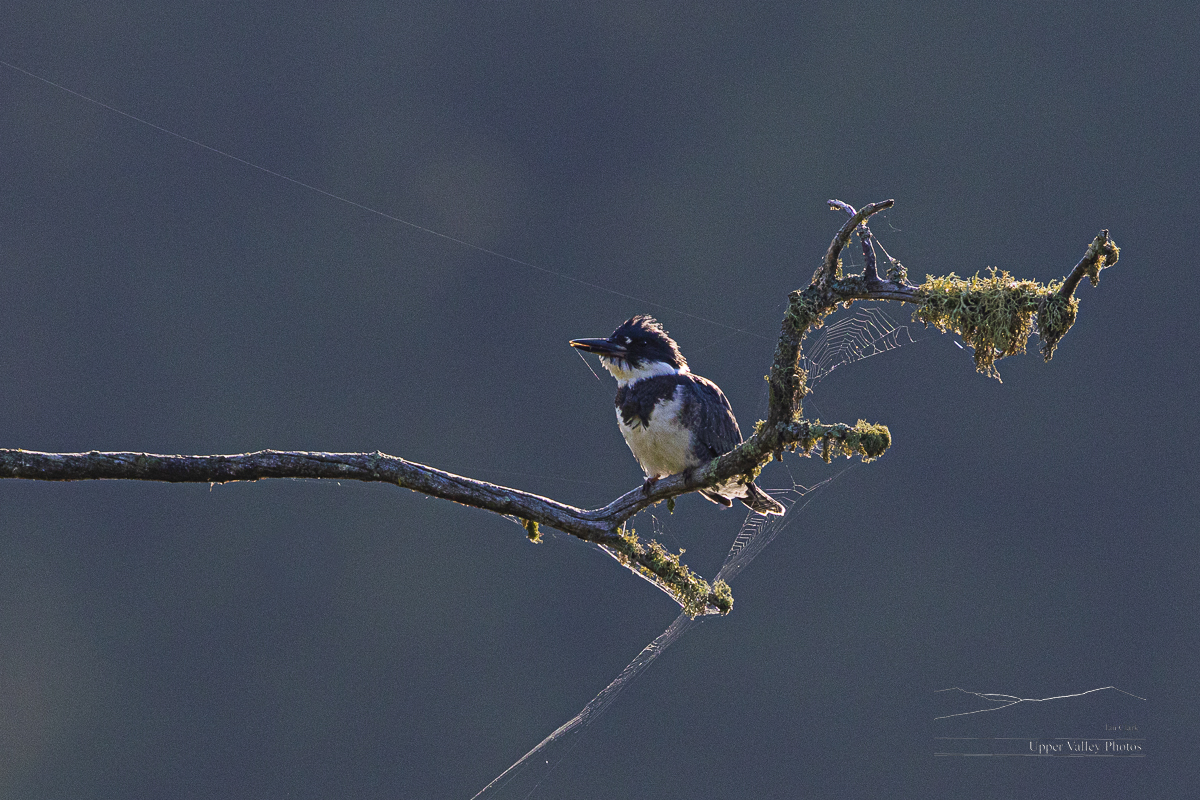
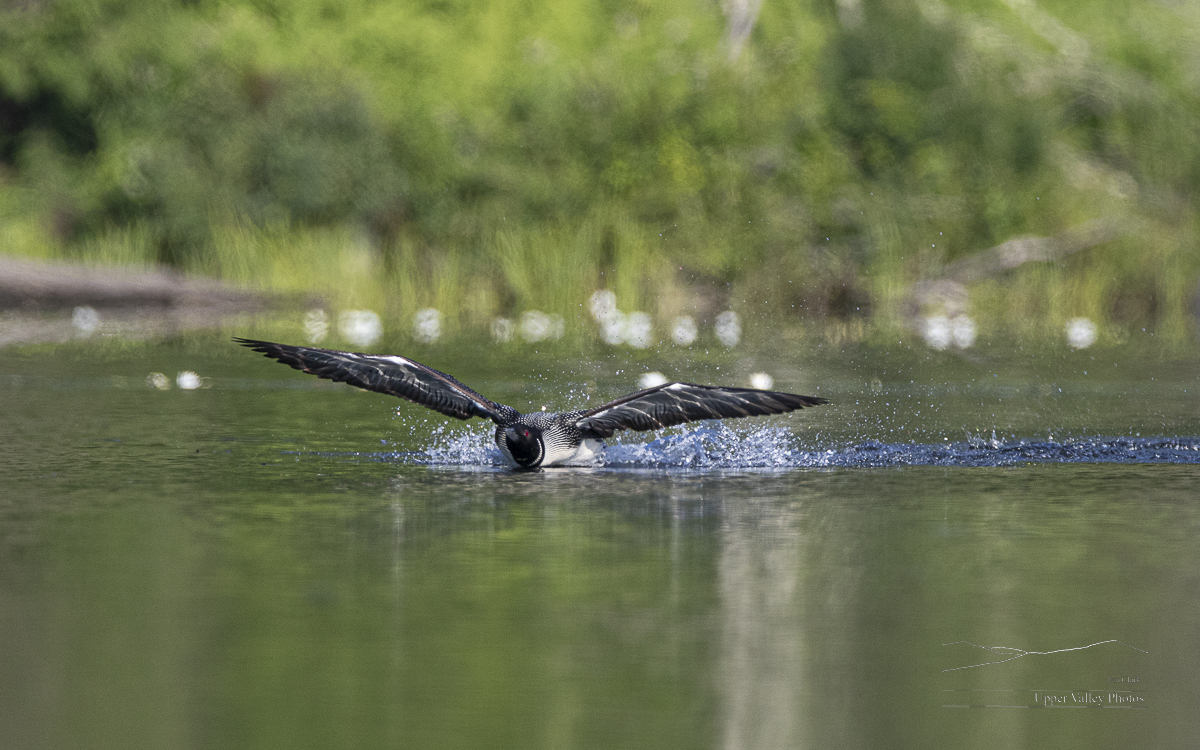
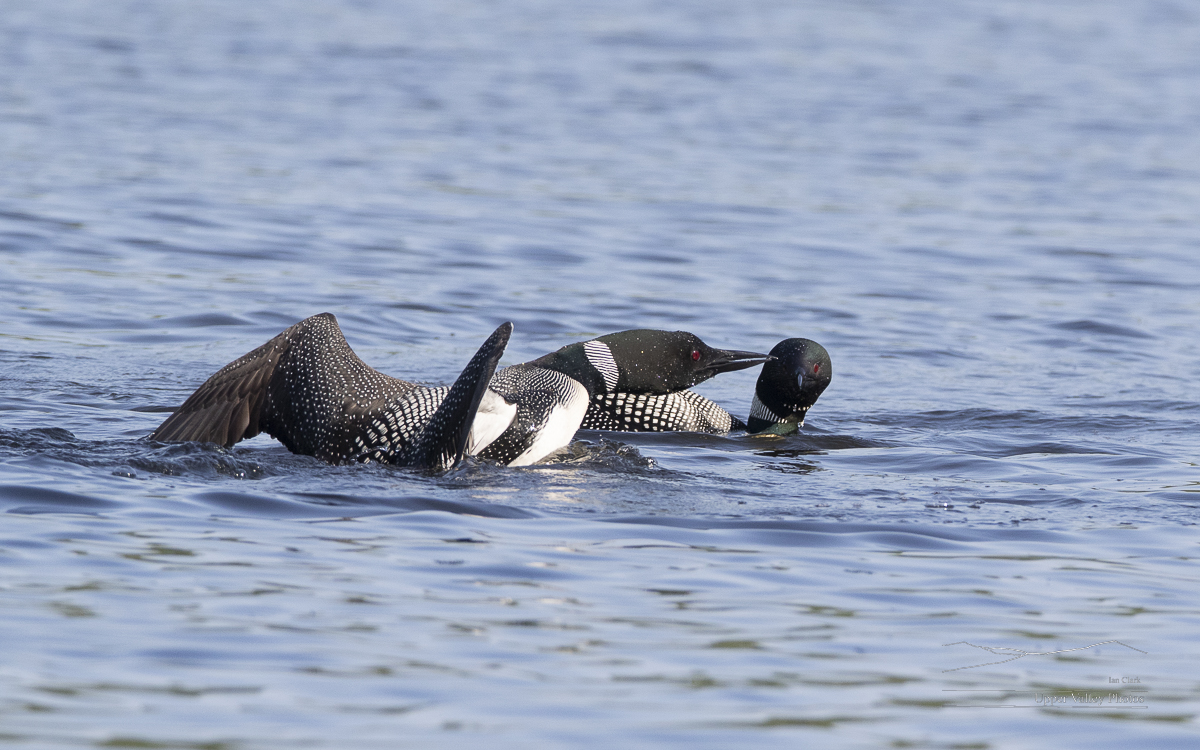

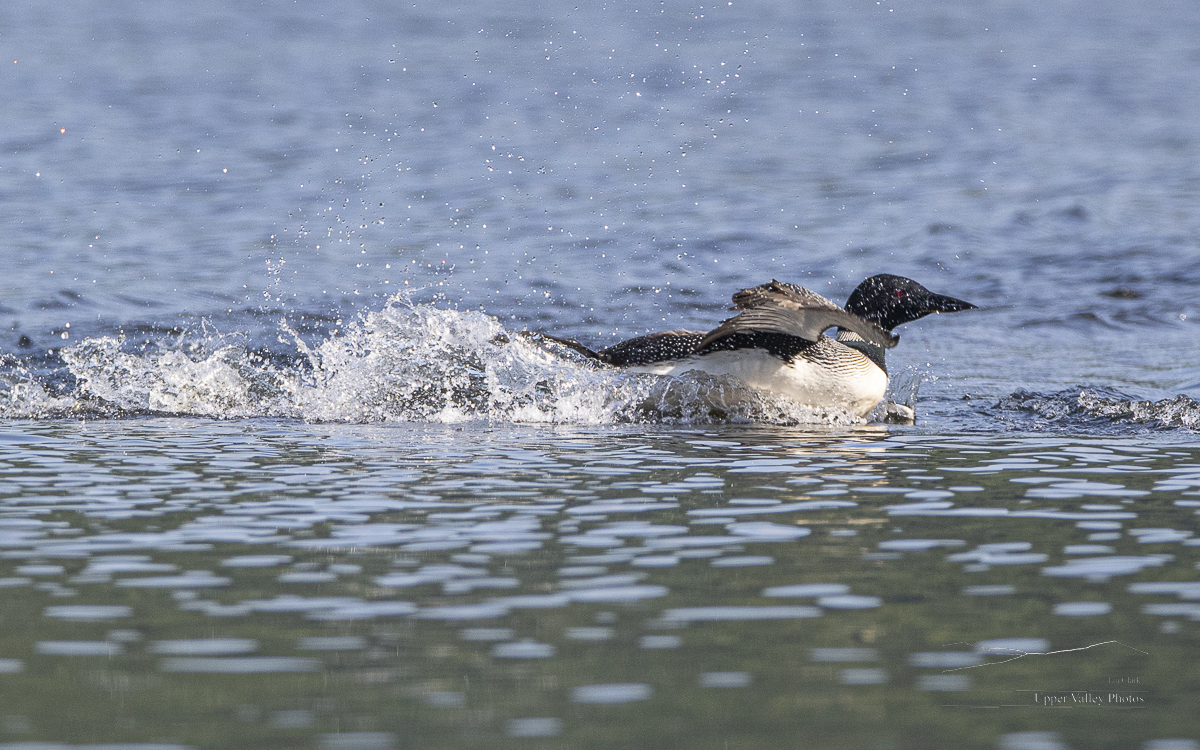
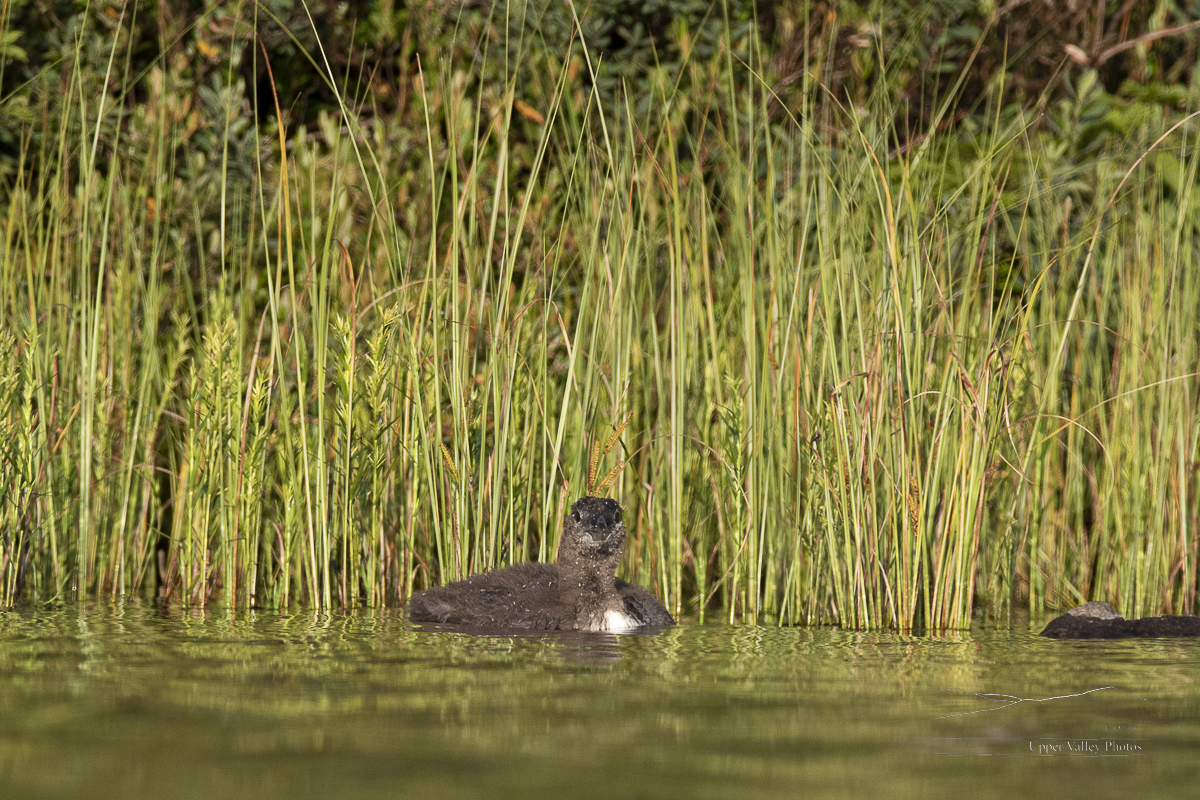
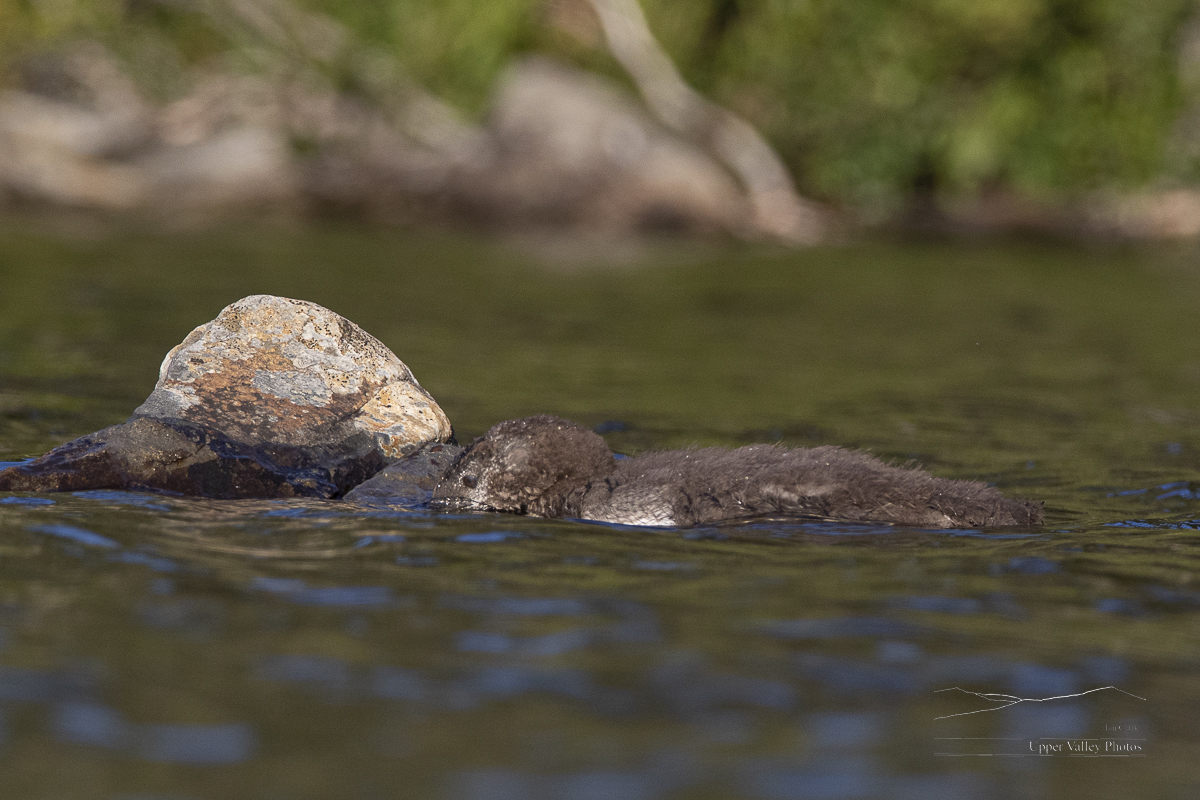


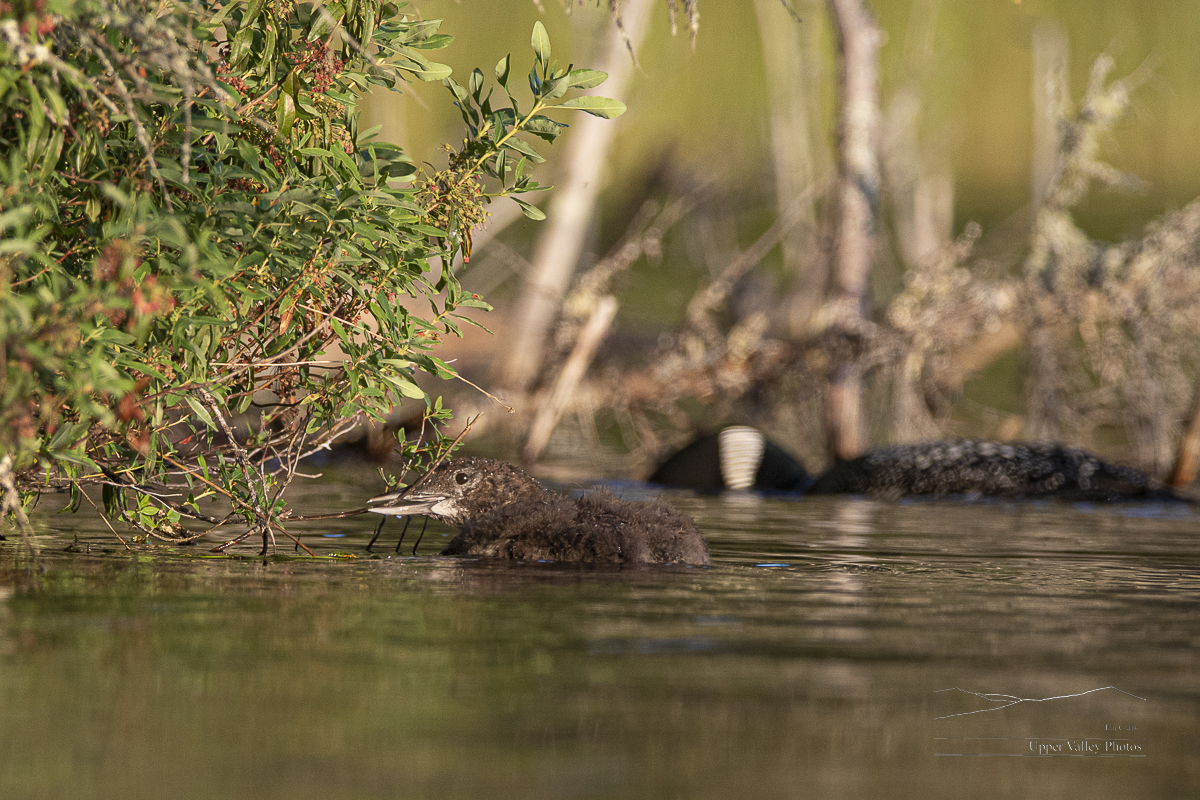

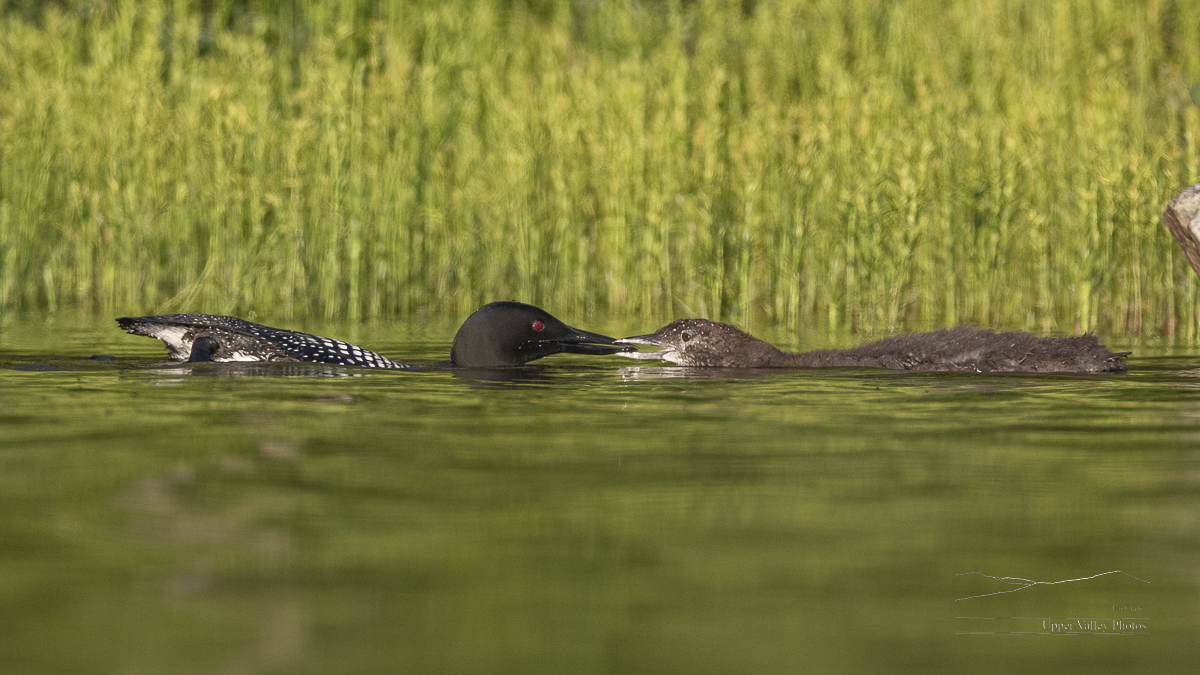
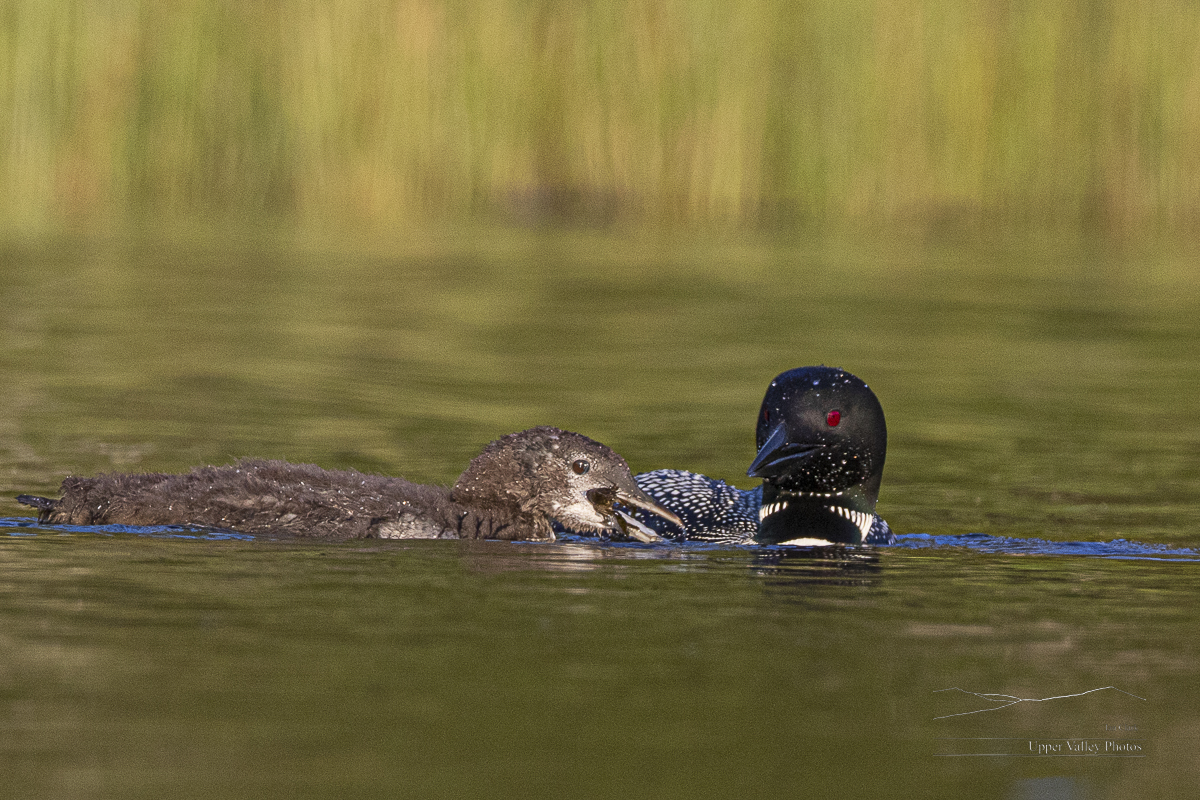
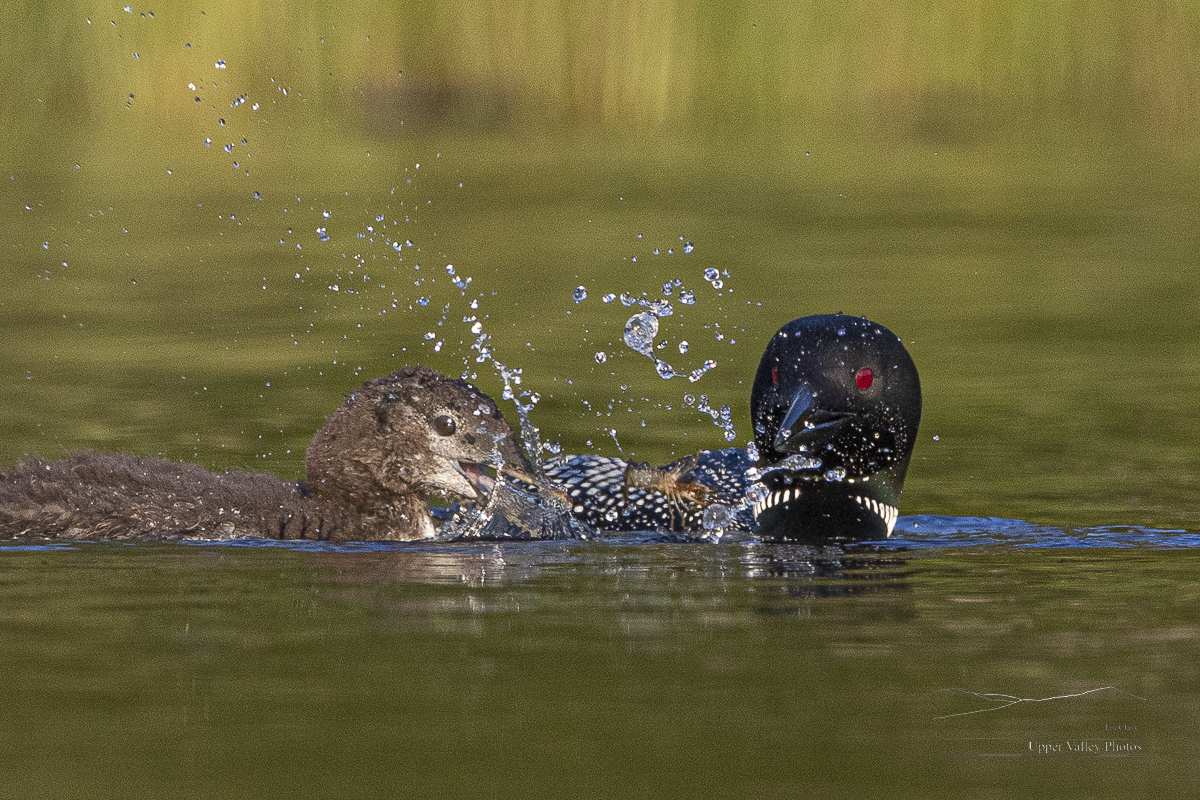

Know someone who might like my blog? Please share it with them or on your social media.
Loon Chicks at Four Weeks And More
Sunday morning was a beautiful time to pay a visit to the Eastons – the loons in the eastern most pond I visit regularly. The chicks were four weeks old this weekend. Both seem to be doing well.
Our bluebirds have four chicks in their second brood, they should fledge this week. There are at least three chicks from the first brood still around. The like to hunt from the roof of the house, they come and go past my office window regularly.
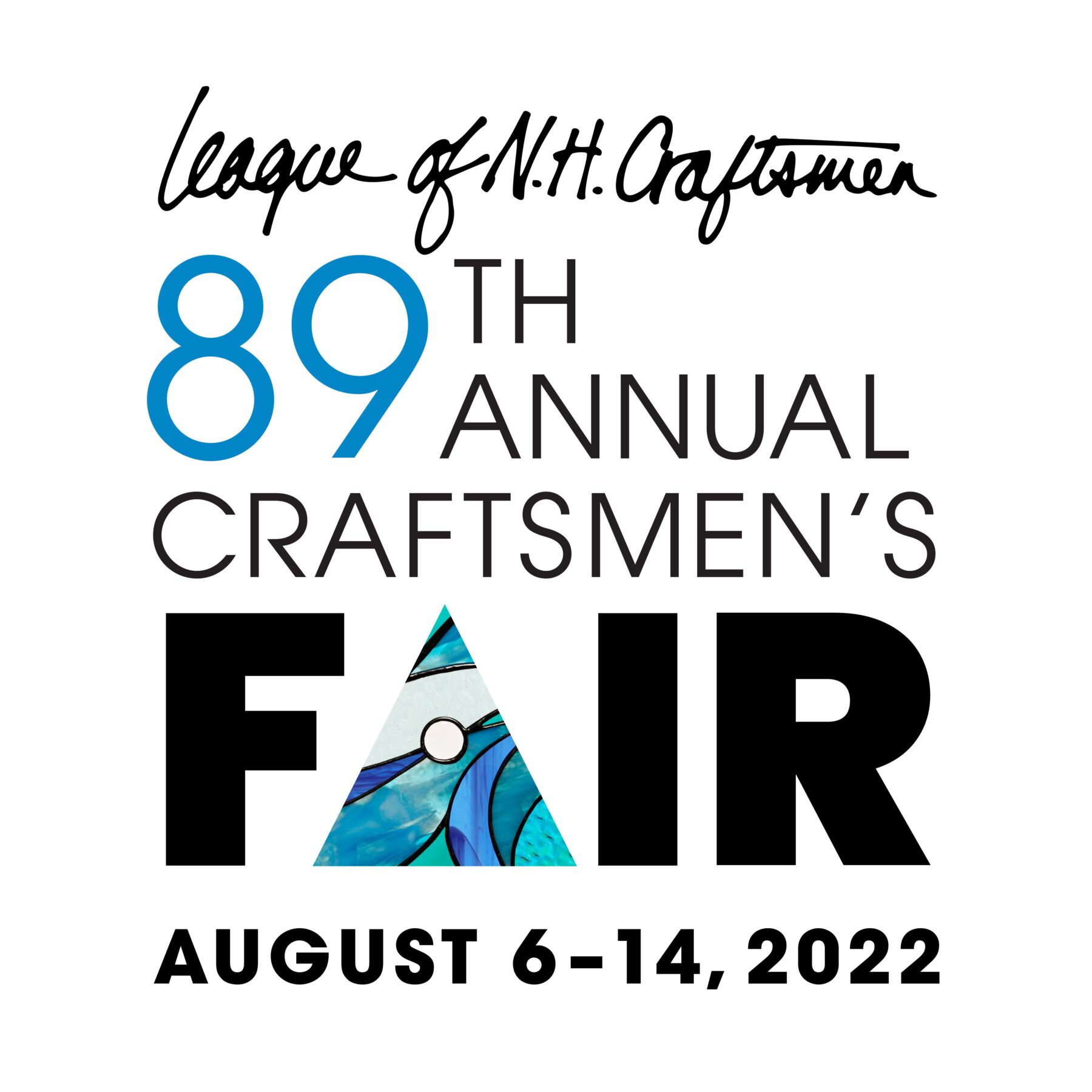
The loons had another visitor before dawn.



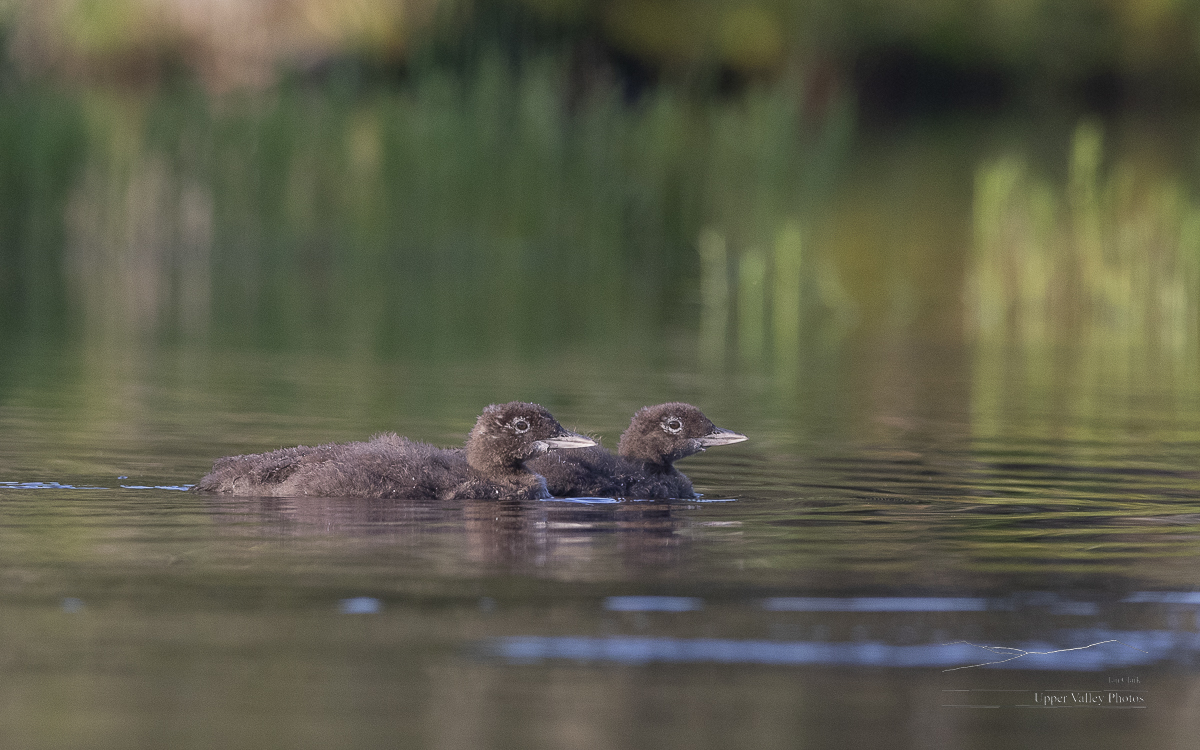
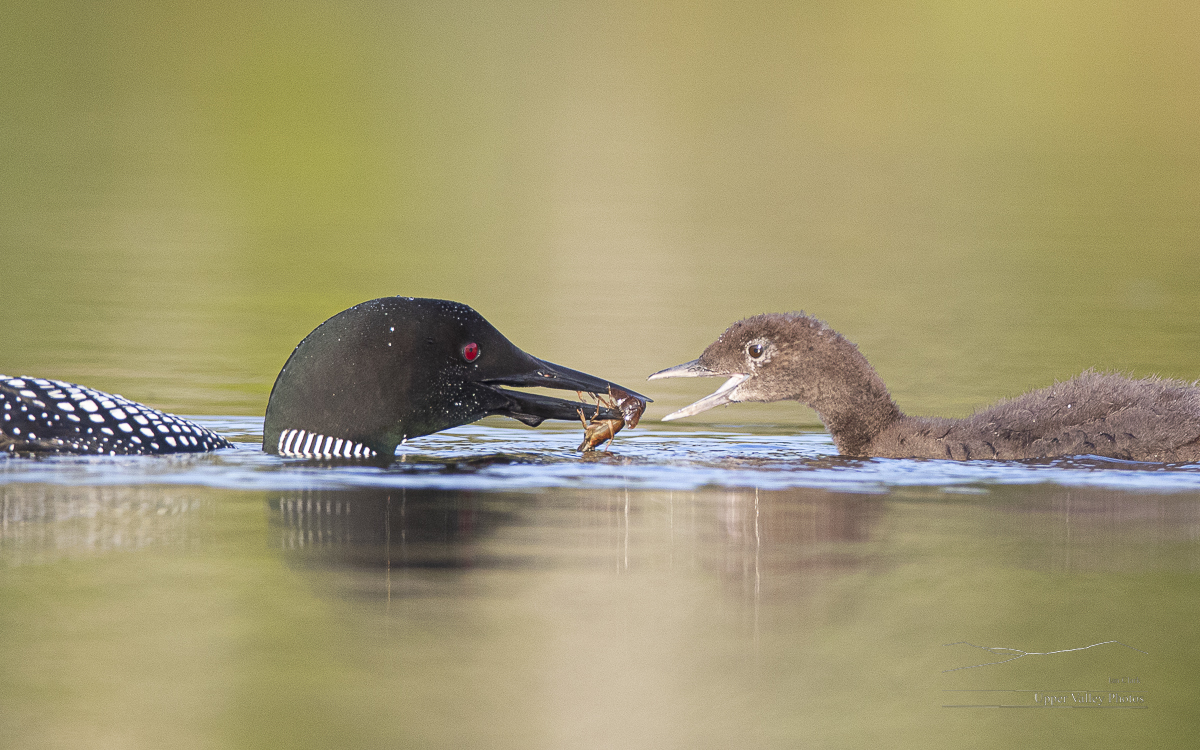
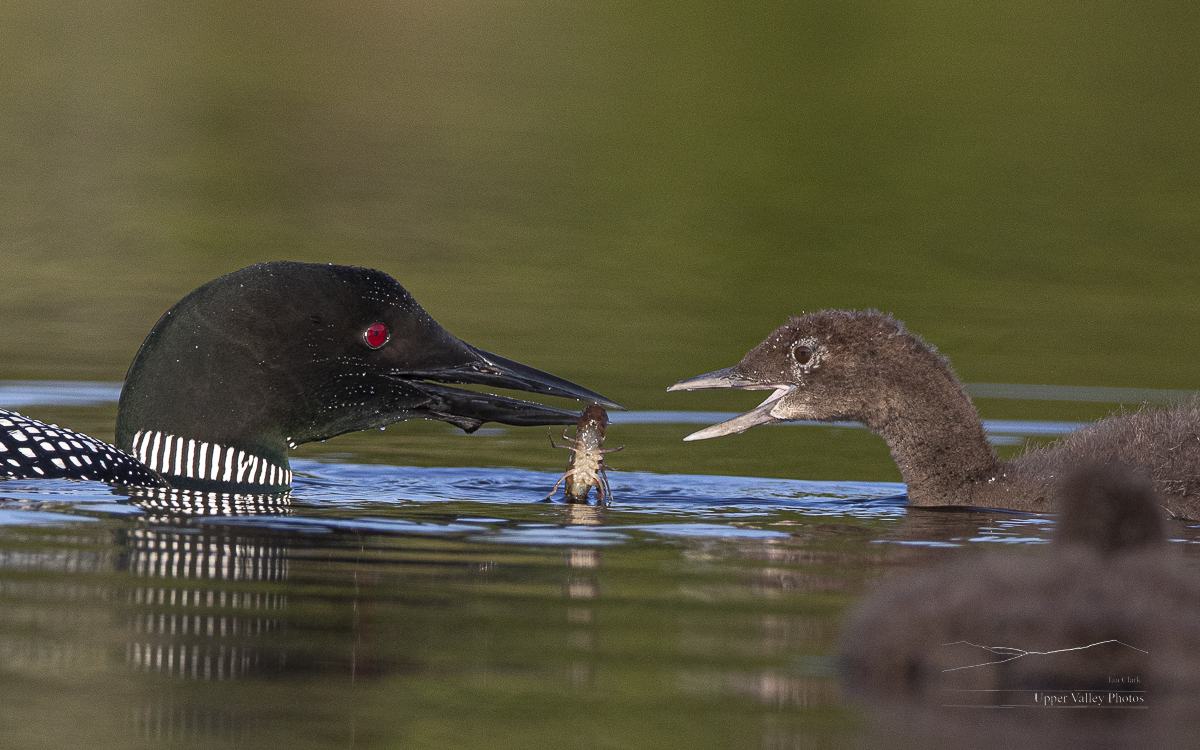
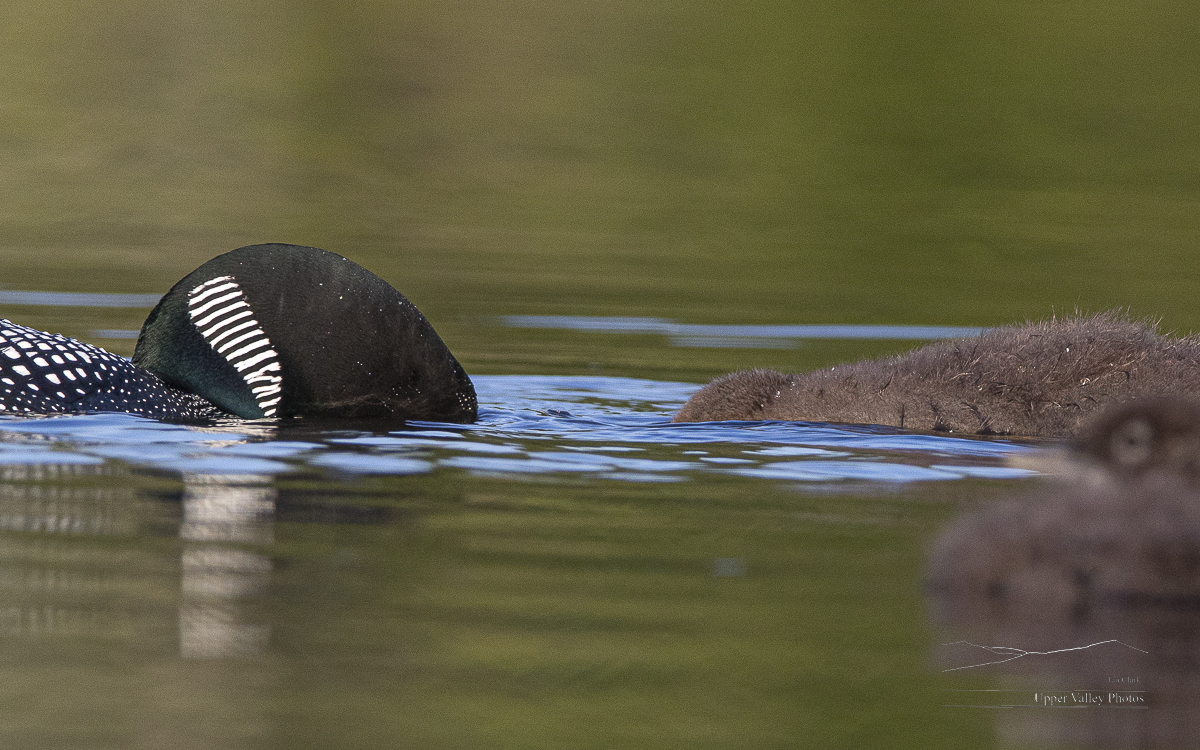
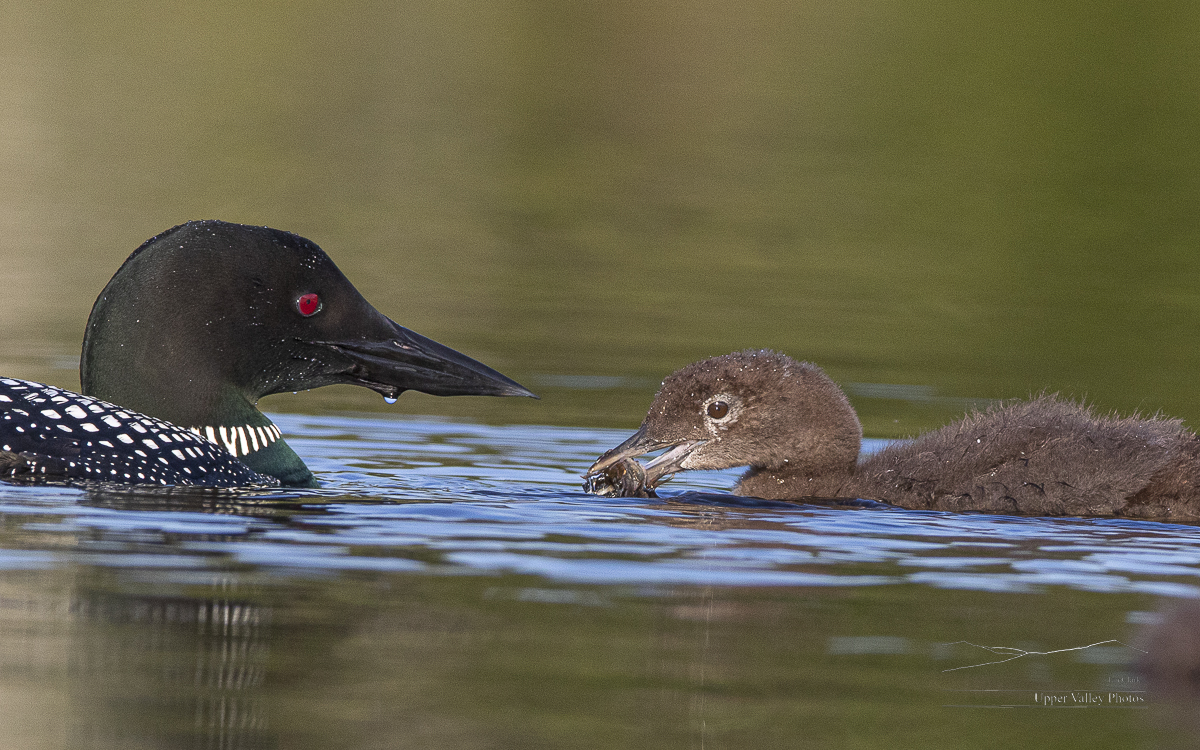
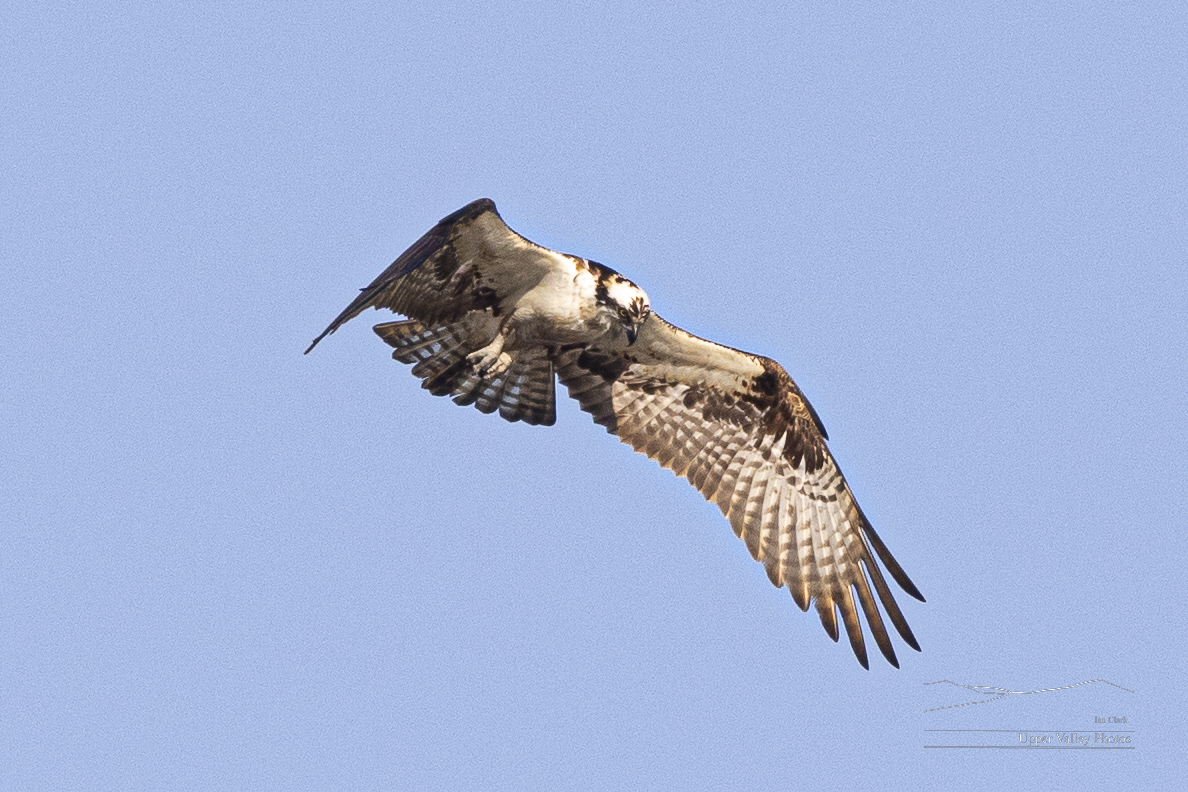
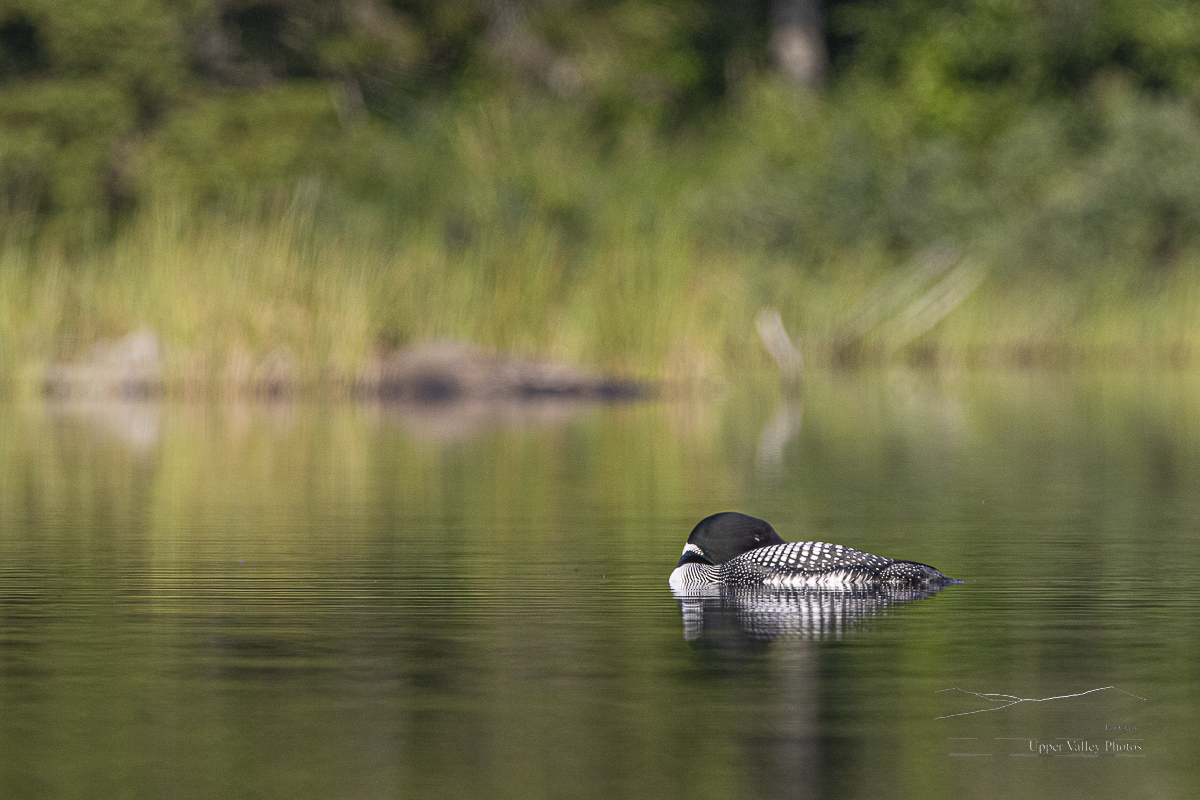
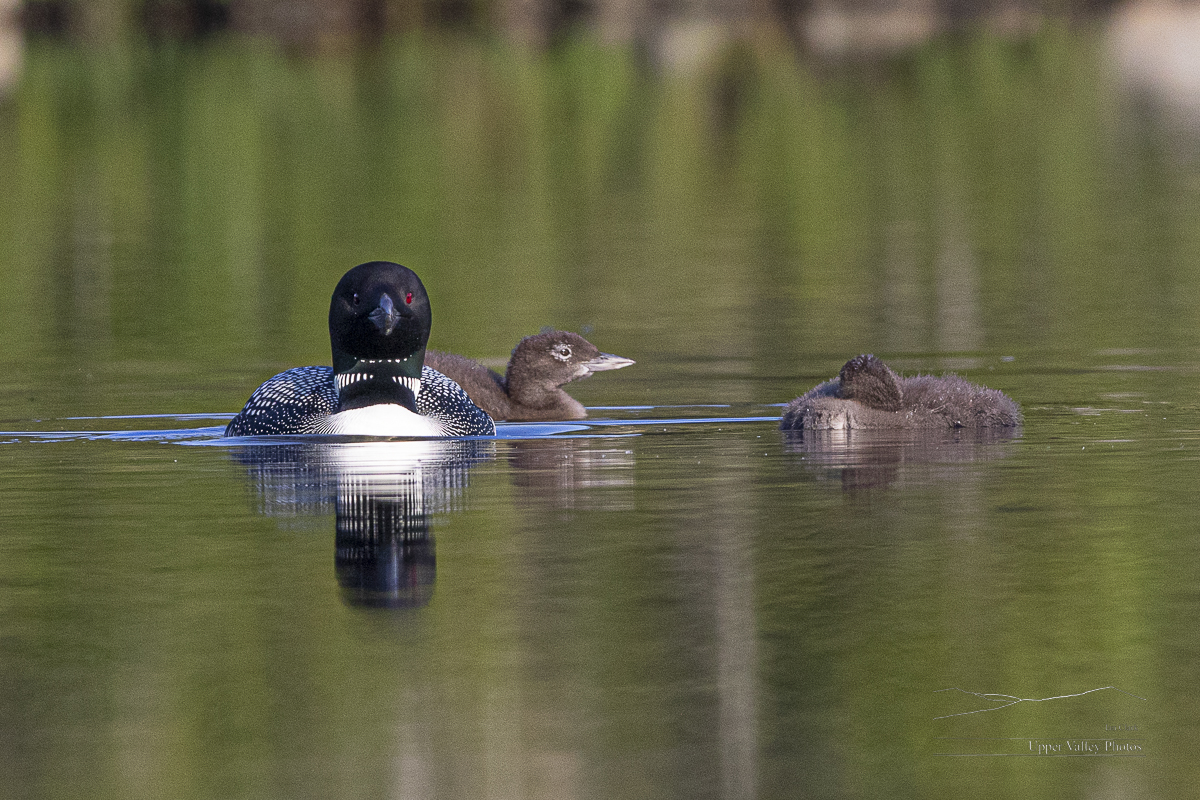
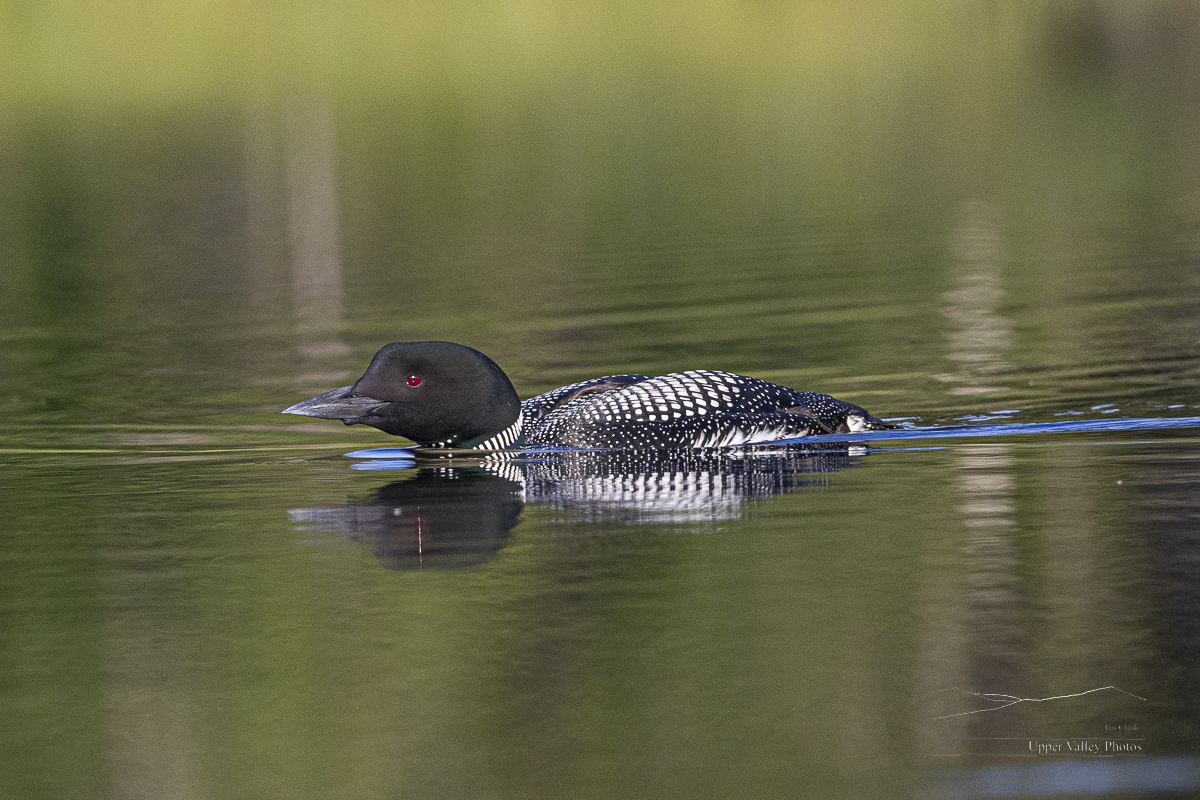


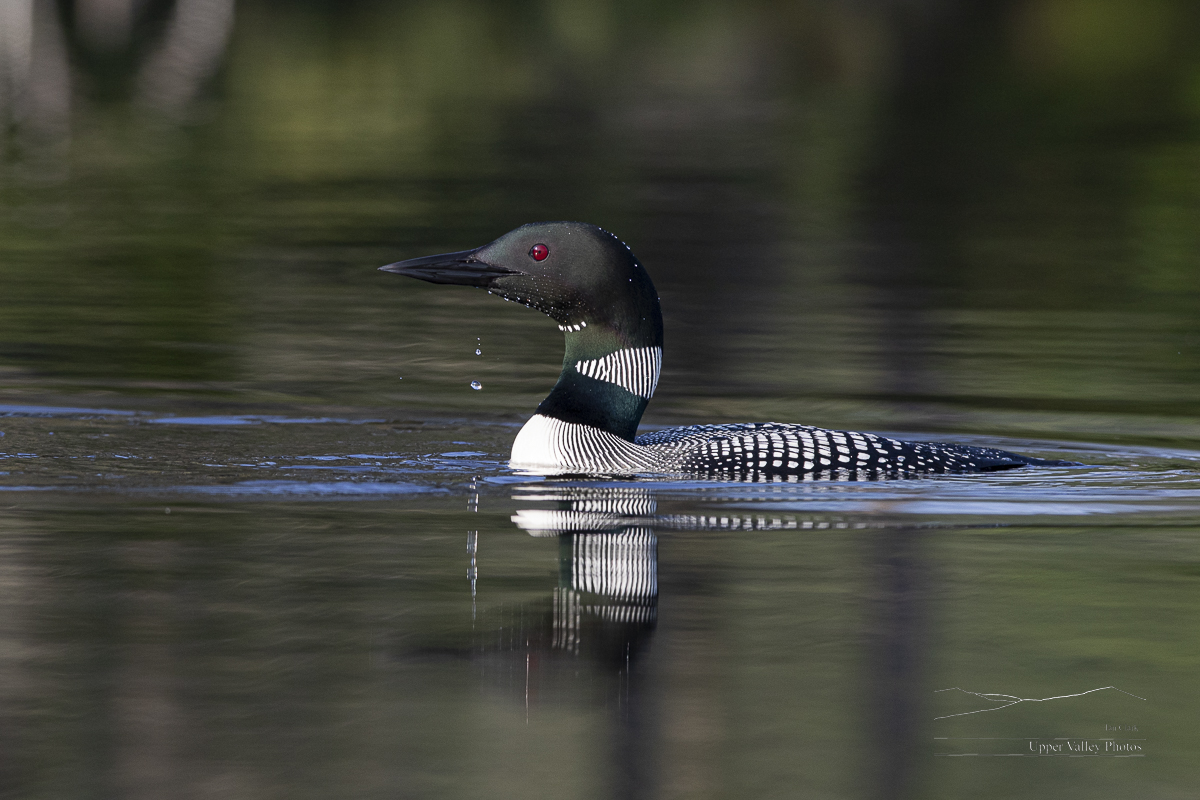
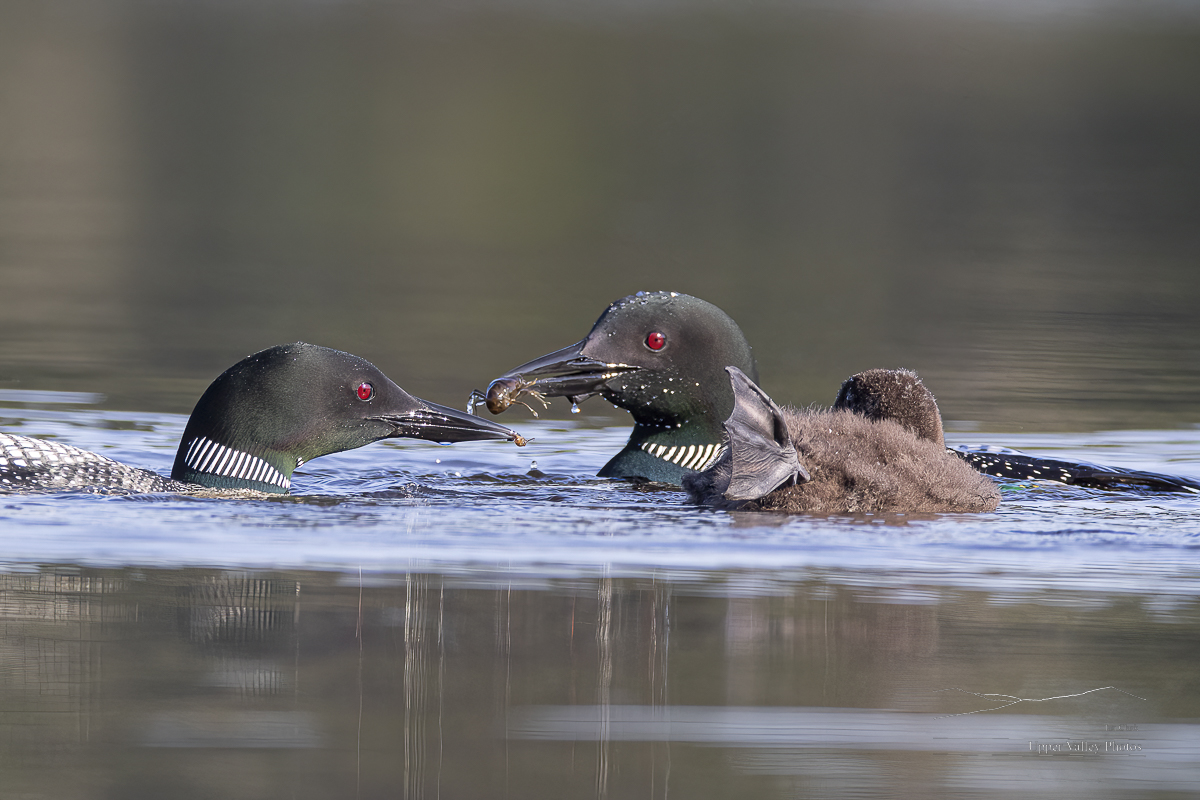
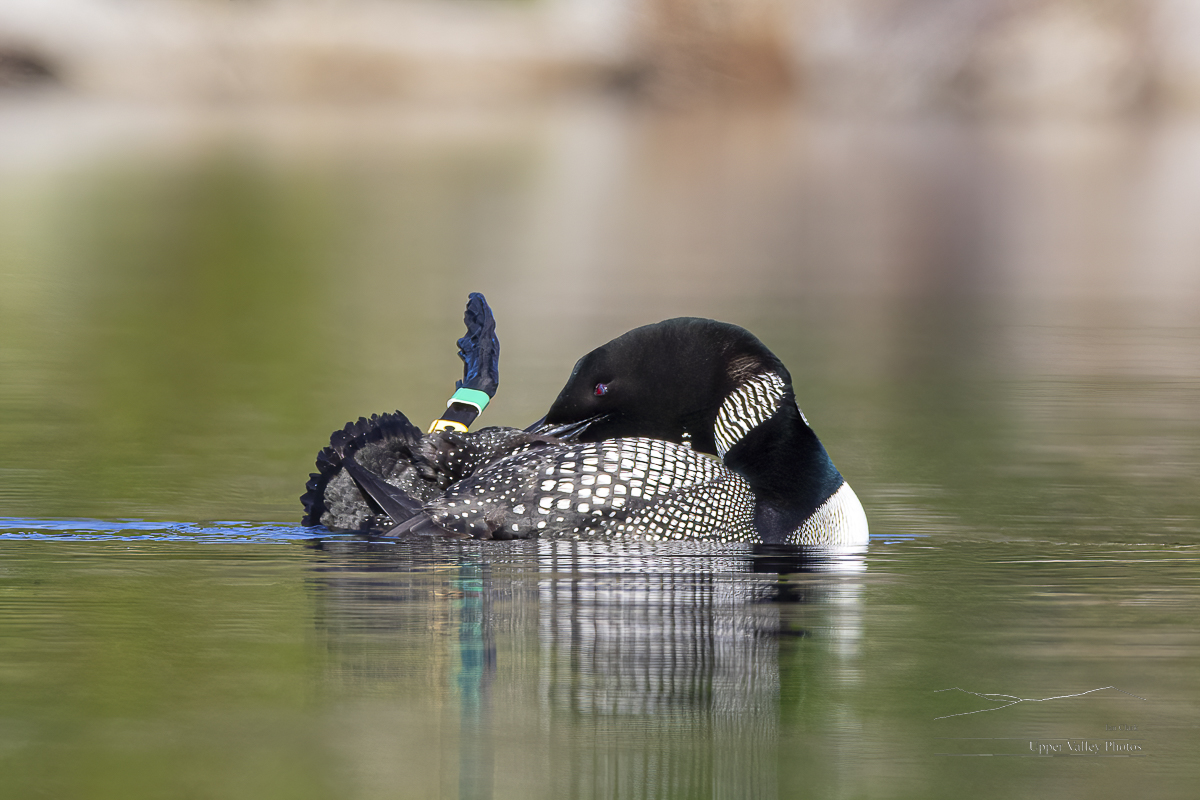
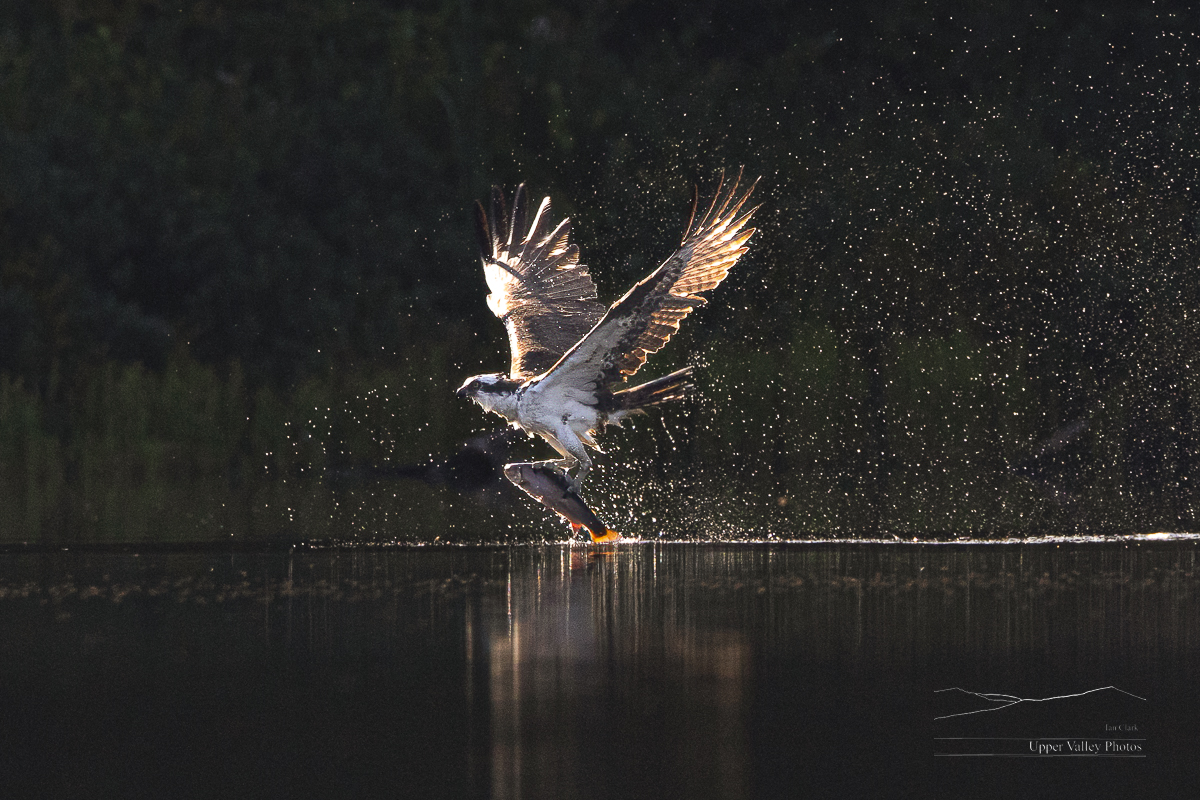

Loon Fight For Territory
Today was another beautiful day to get out to check on the loons. I headed to the pond where the chicks had yet to hatch when I visited Friday. This is the westernmost pond that I’ve been watching, so these birds are the ‘Westons.’
There was a single loon floating by itself near the boat launch, and a long way from the nest. This is the pond that has had intruders challenging the home team for the territory this spring.
A ways down the pond, I found the home team lazily foraging with two chicks.
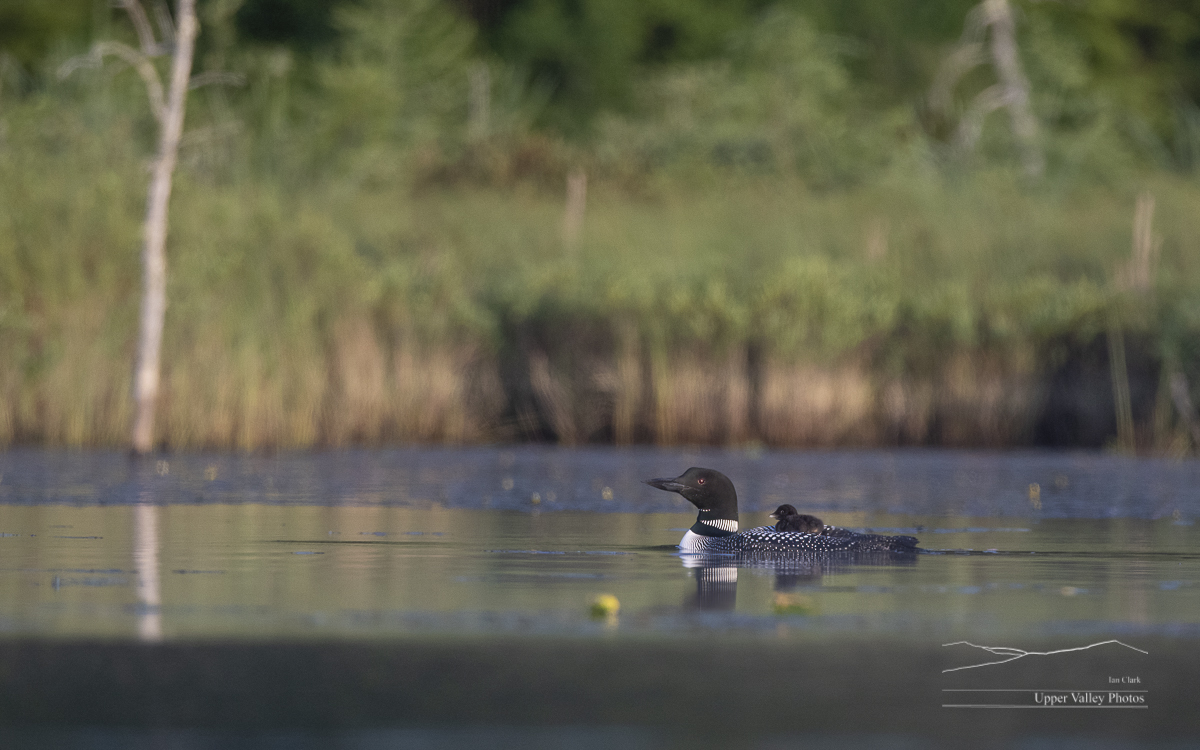
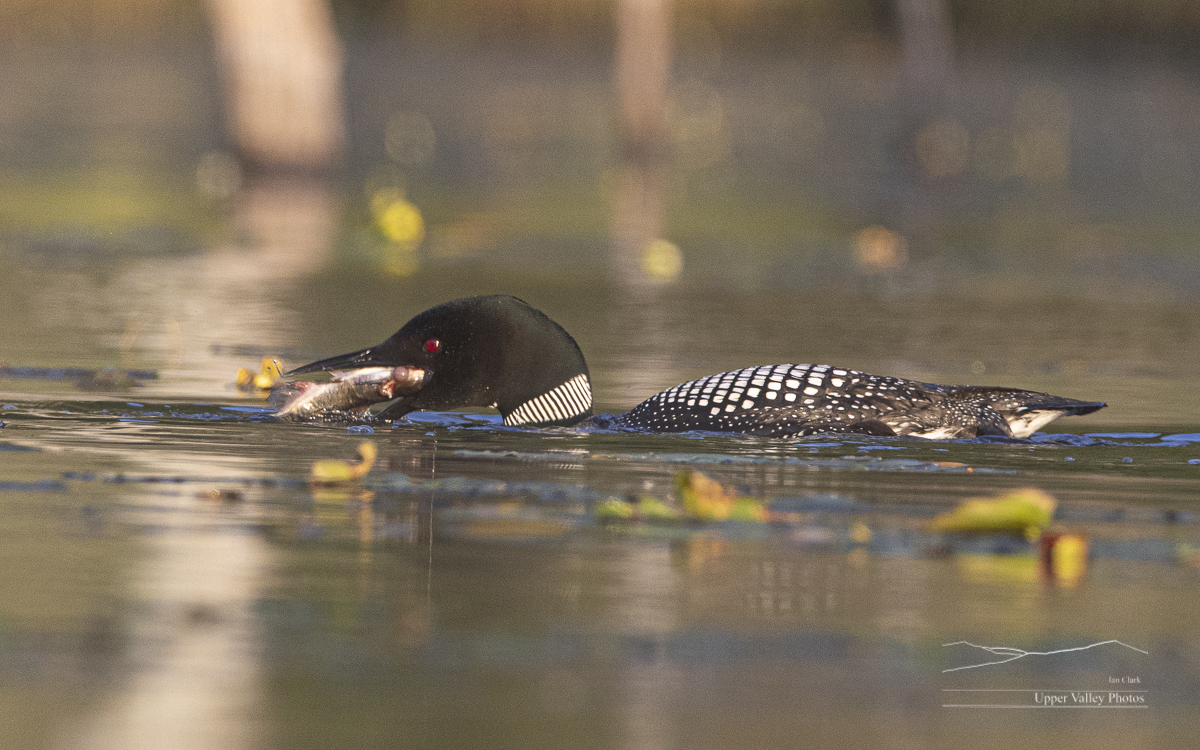
Our family drifted out towards the middle of the pond when things got exciting.
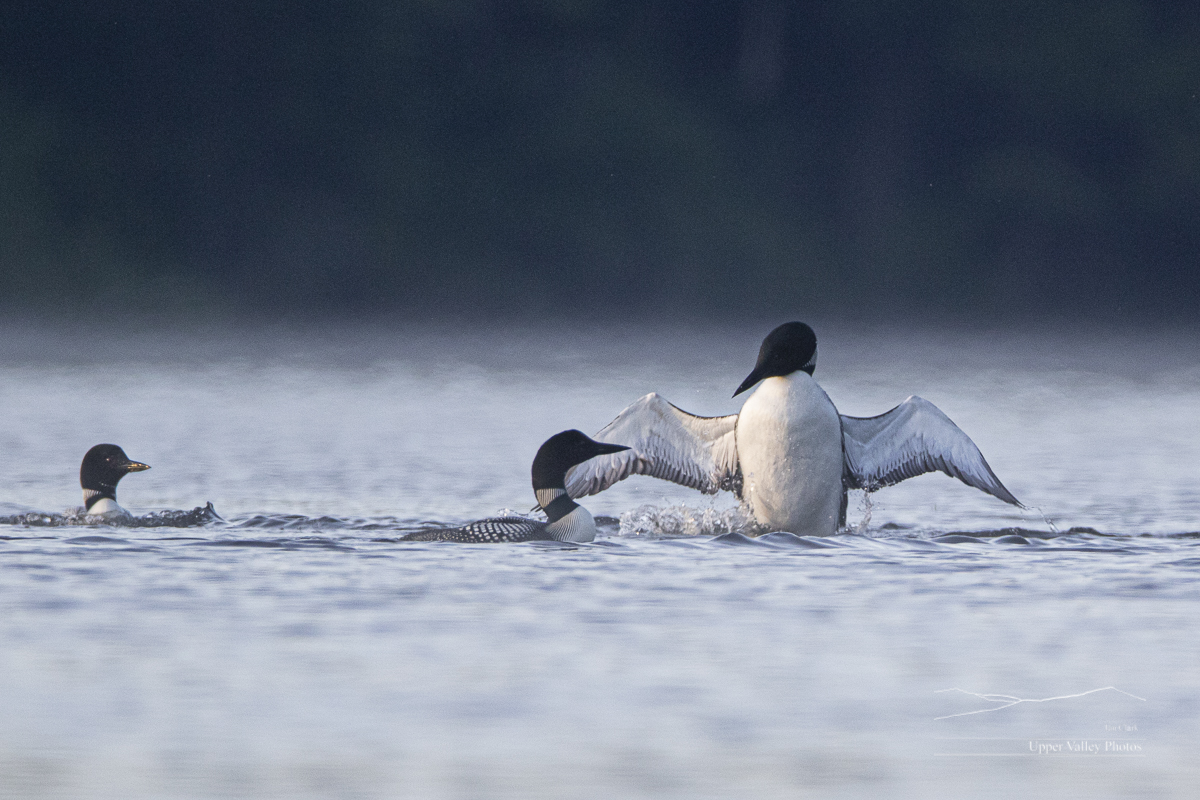
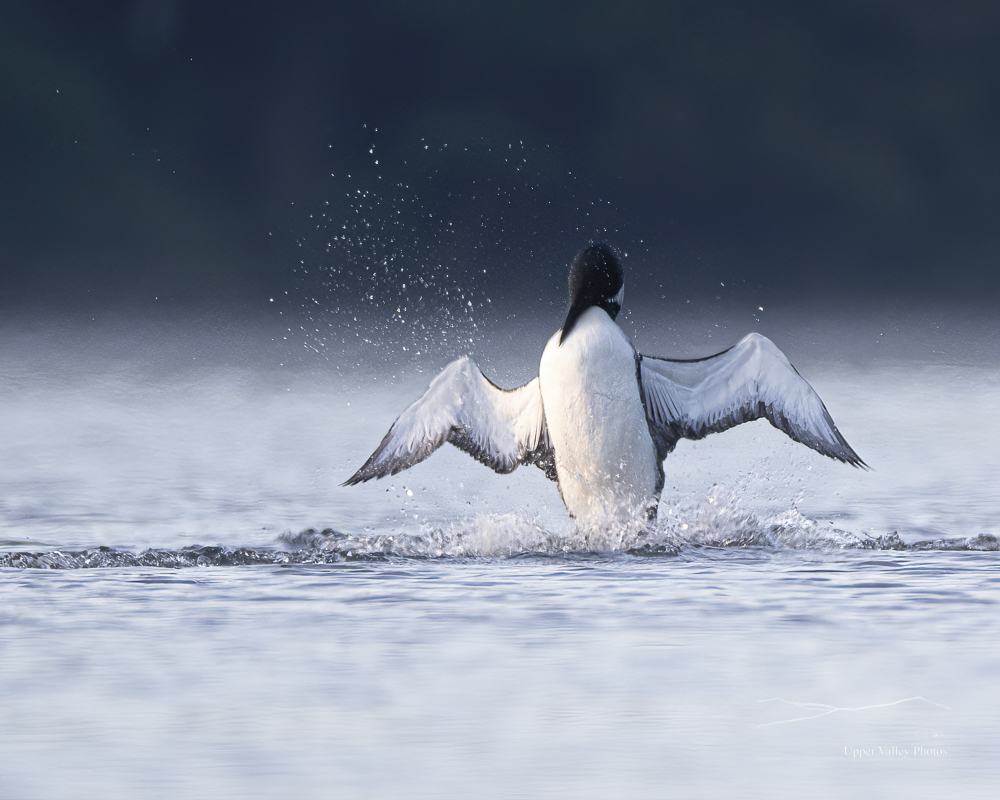
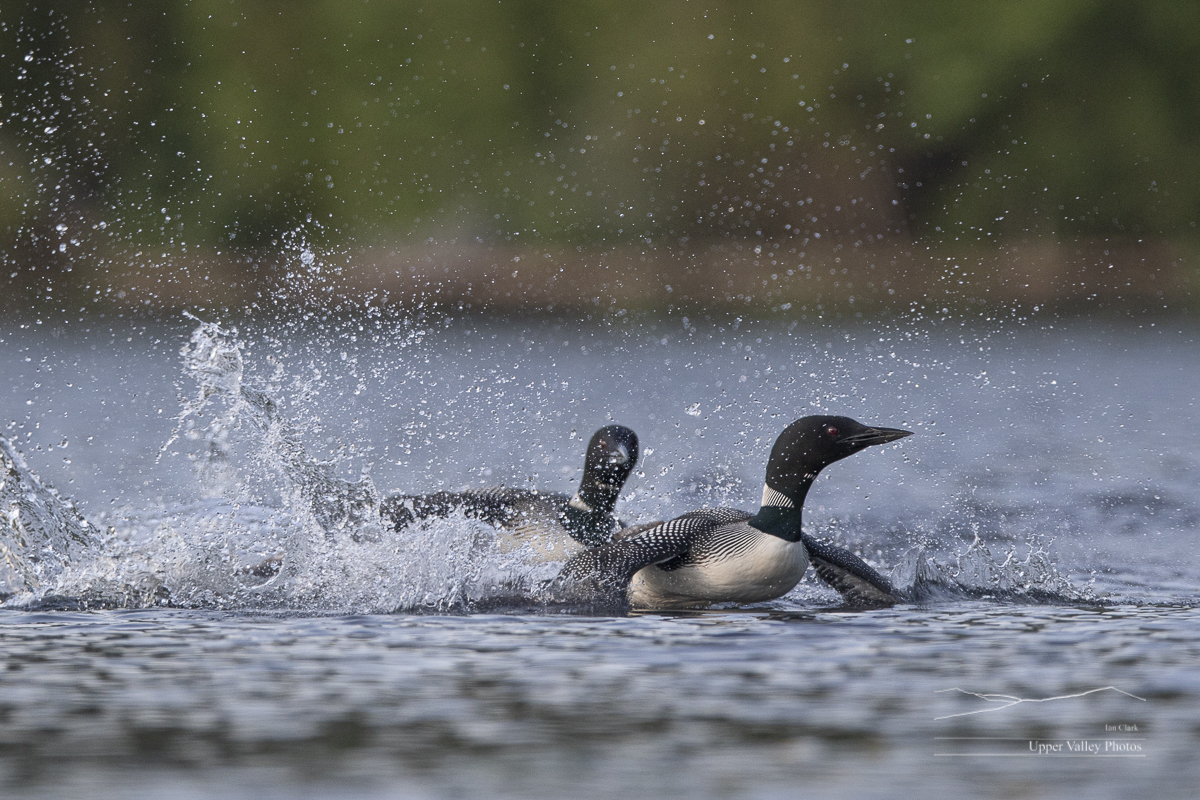
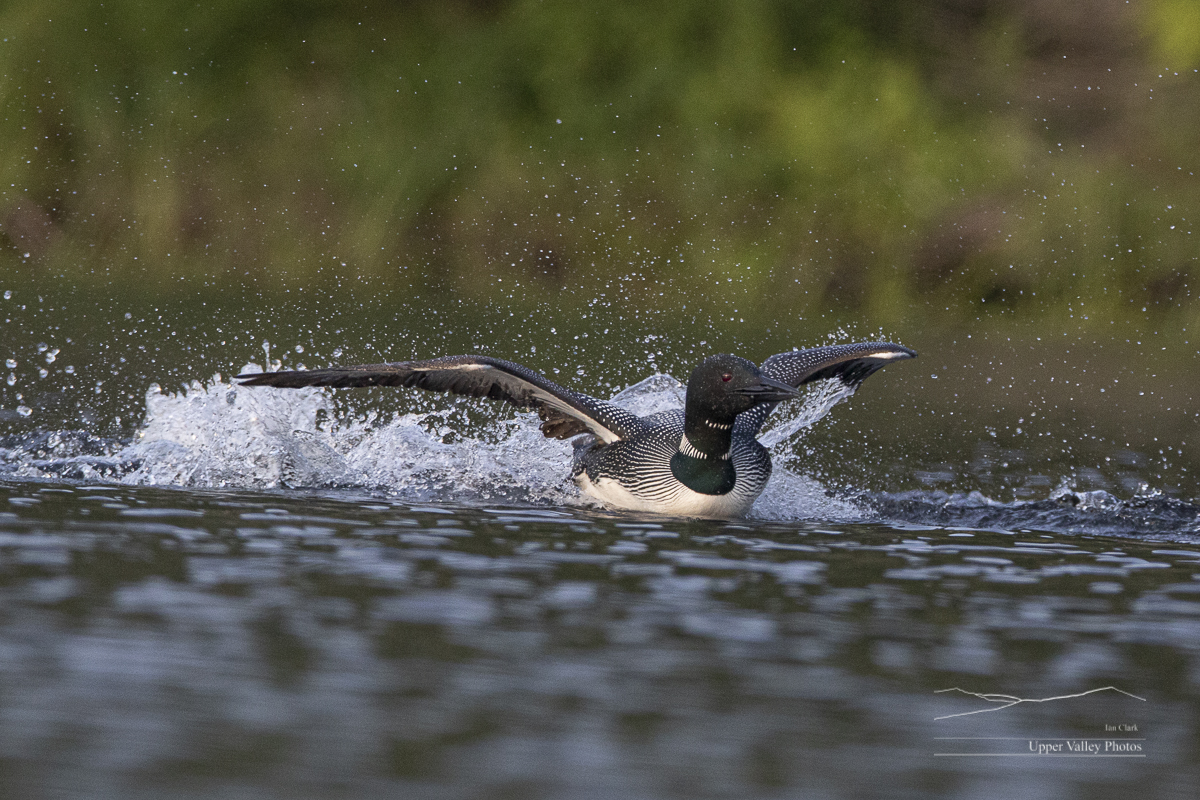
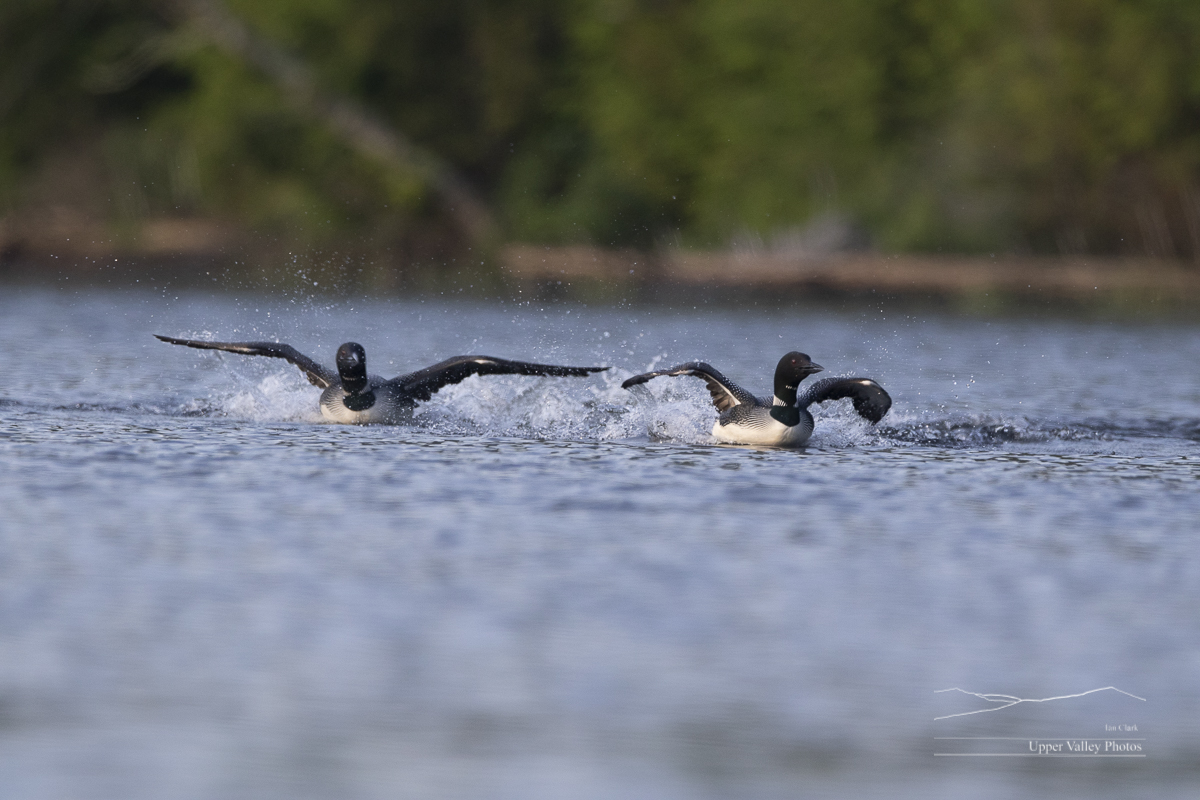
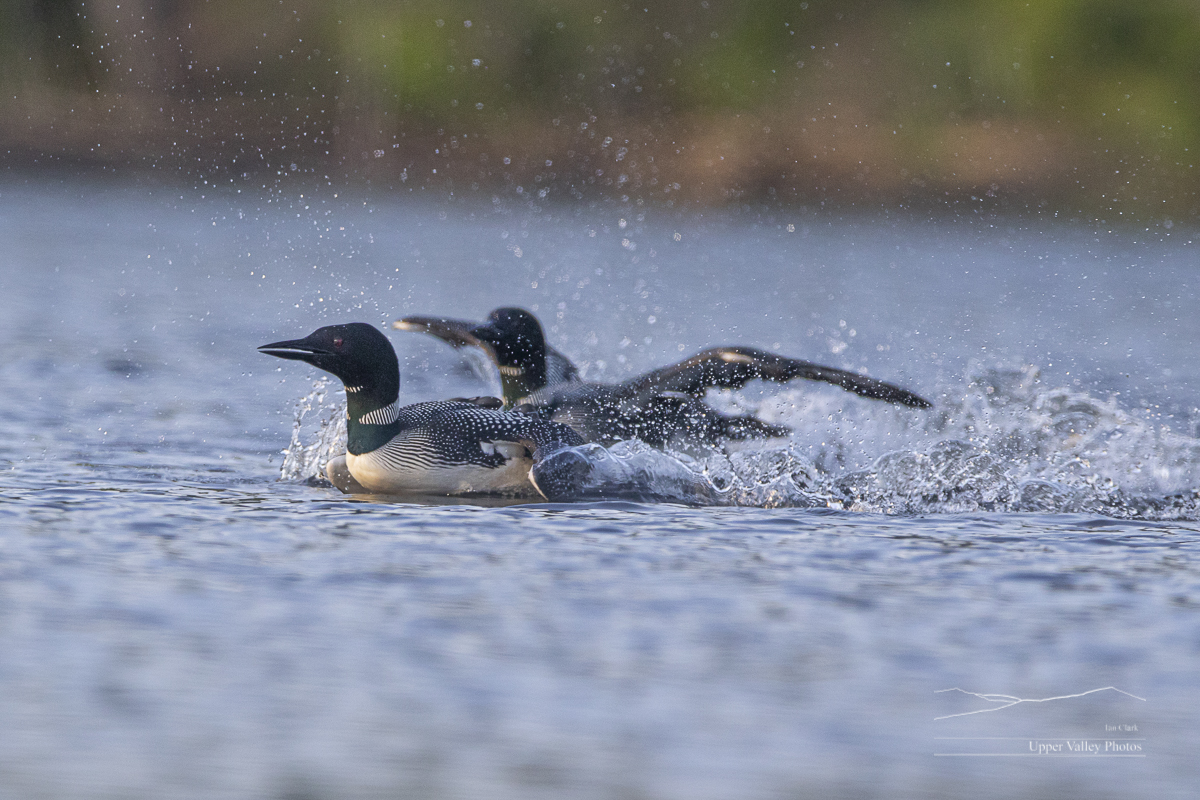

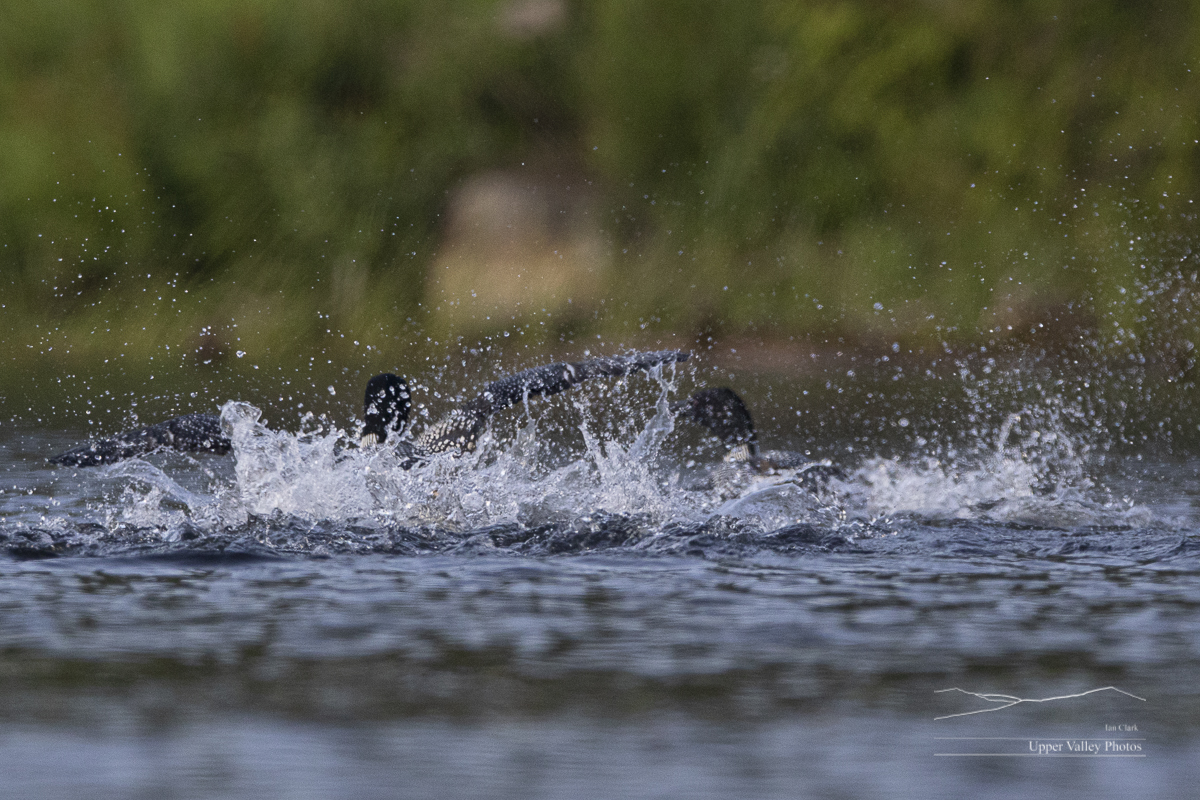
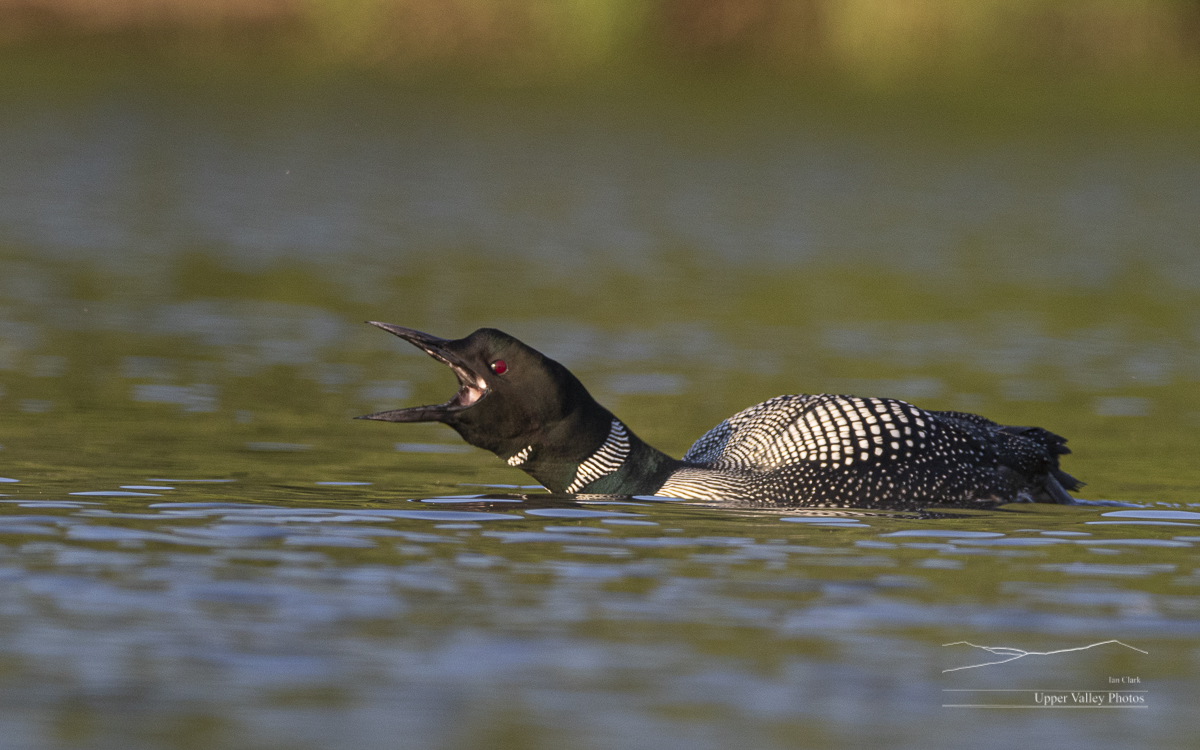
Loon Chicks At One Week
This morning was a perfect morning to be a loon on an Upper Valley Pond. Well, I can’t know that for sure, but it was a great day to be a loon photographer… The family I visited – I’m going to call them the Eastons – had the chicks hatch Friday and Saturday a week ago.
I’m trying to follow three families again this summer. Last year, I kept trying to sort out which family we were looking at by the number of chicks. That’s not going to work this year, the first two families each hatched two chicks. (The third is due… yesterday.) So, This family, that had the two chicks last year is now the ‘Eastons.’ The second family in the last post is now the ‘Middletons.’ And the family still sitting is now the ‘Westons.’ (I’ve learned the hard way to be circumspect about where I’m working. I’m now getting something like 10,000 visitors a month and not all of them have the loons’ best interest at heart.
Let’s take a quick peek to see how the Westons are doing.
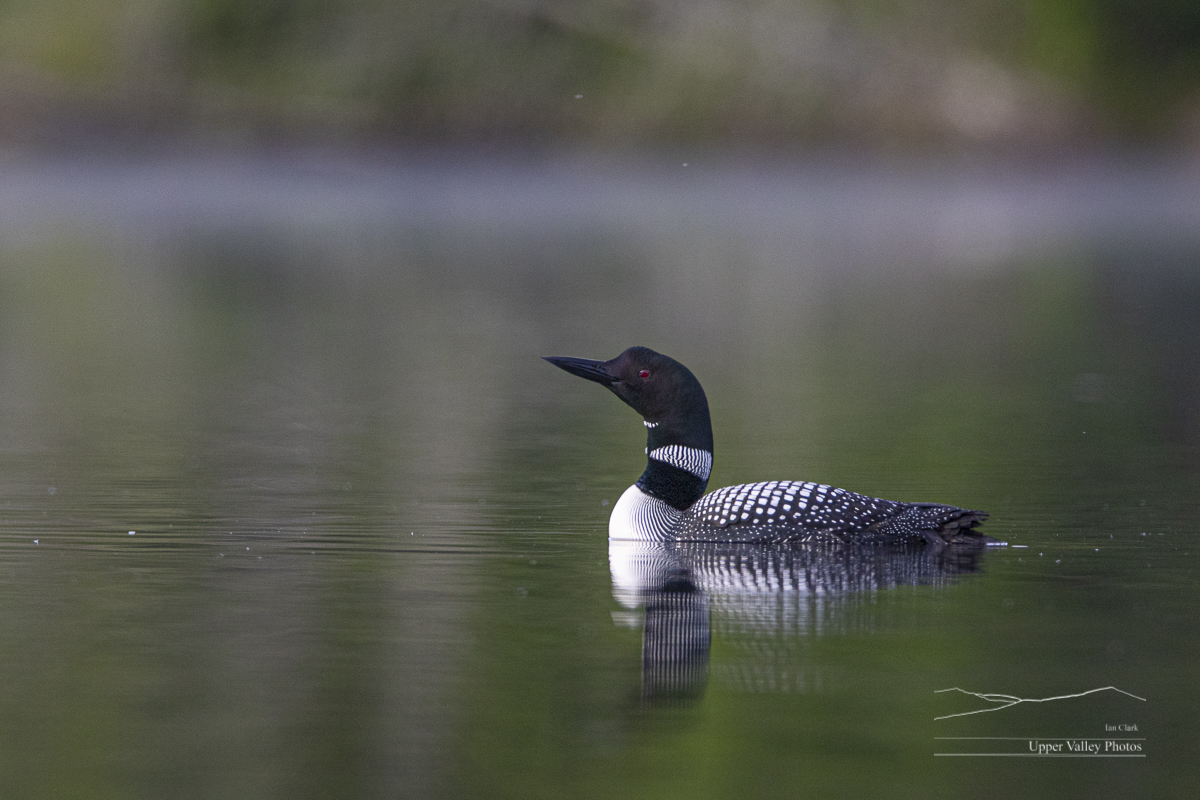
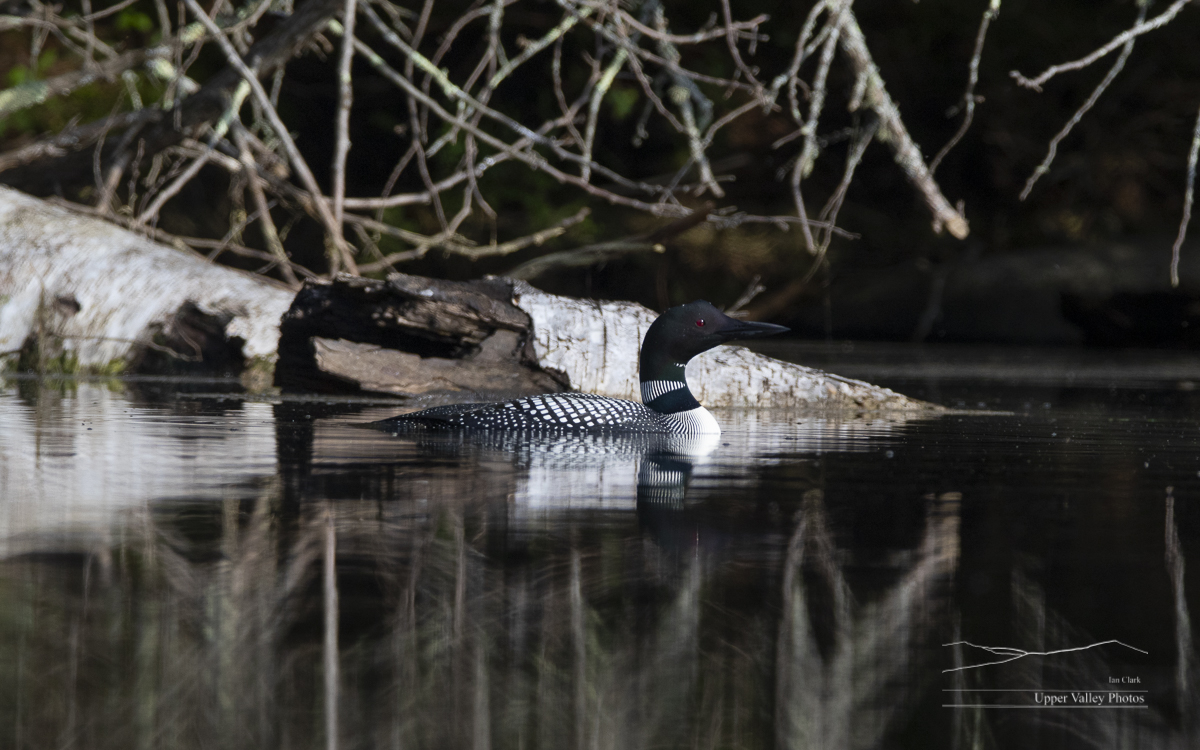

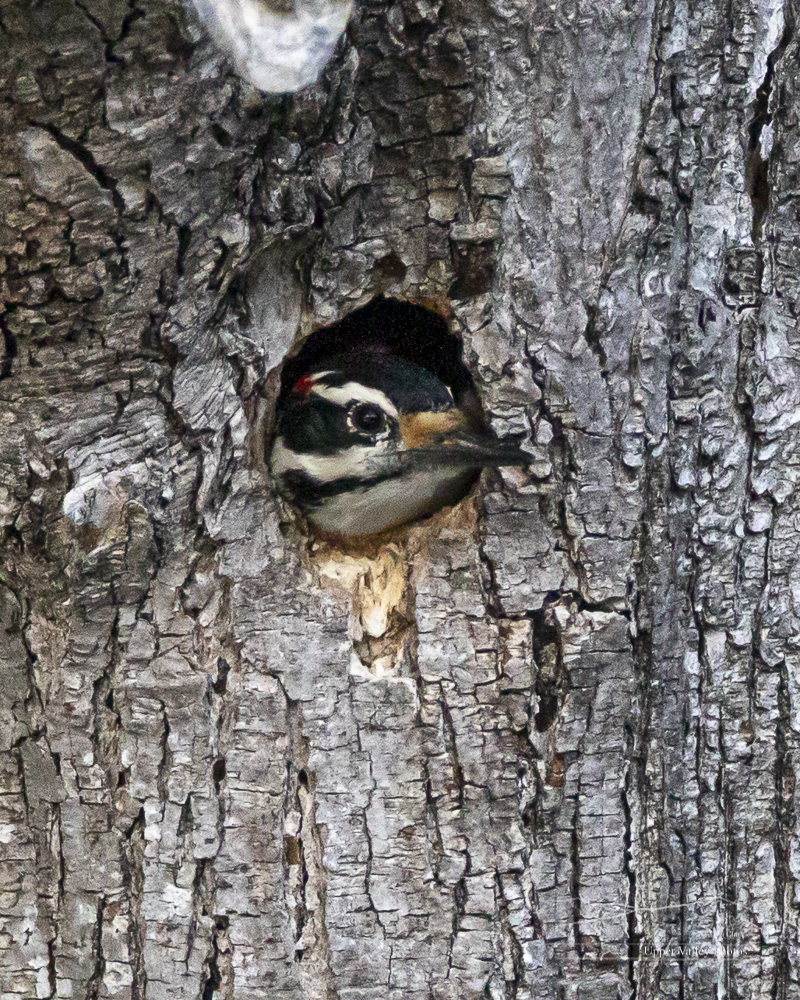
Moving east to this morning’s outing, one of the great blue herons on this pond usually gives me two nice photo ops a year. I think I collected one of them today.
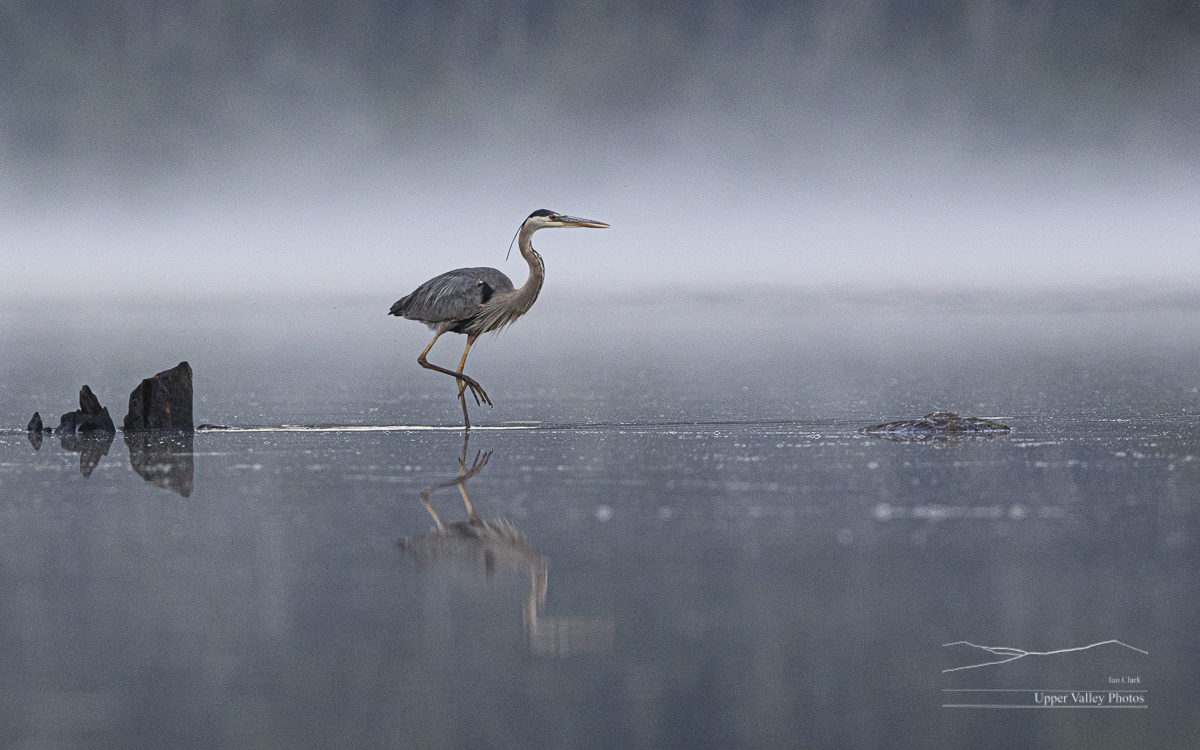
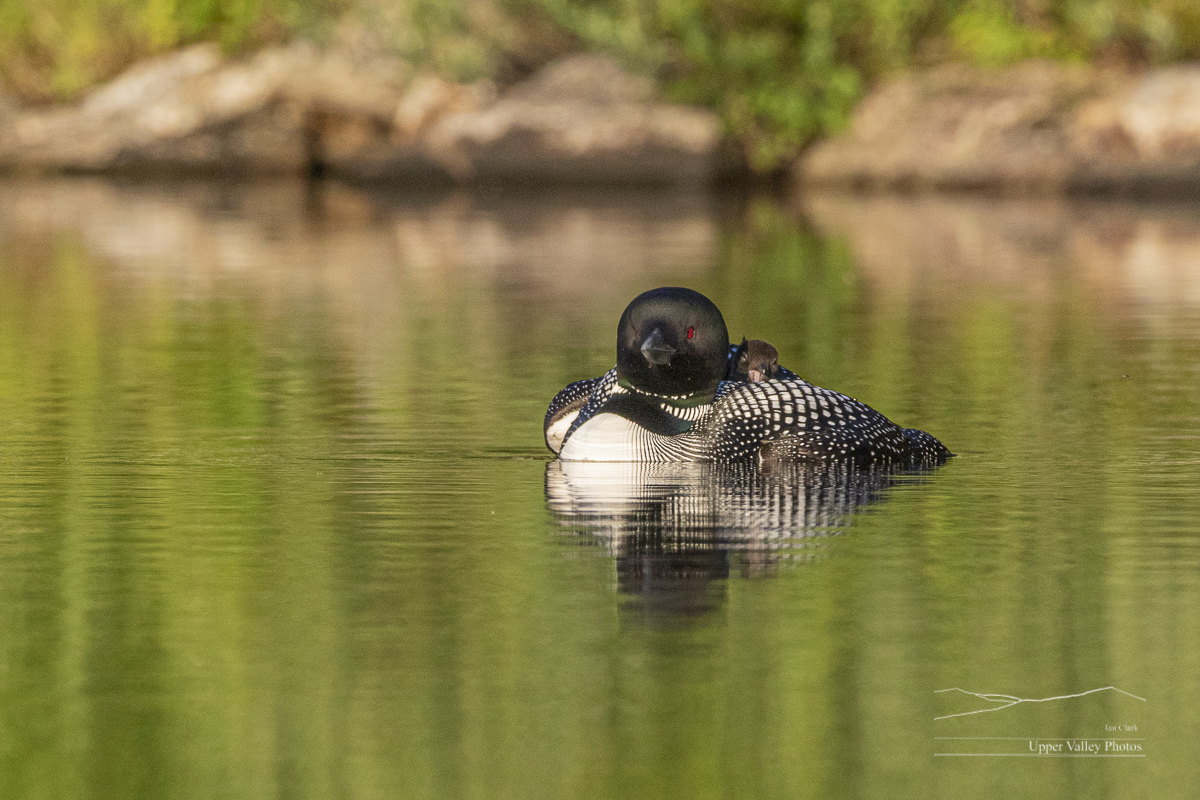
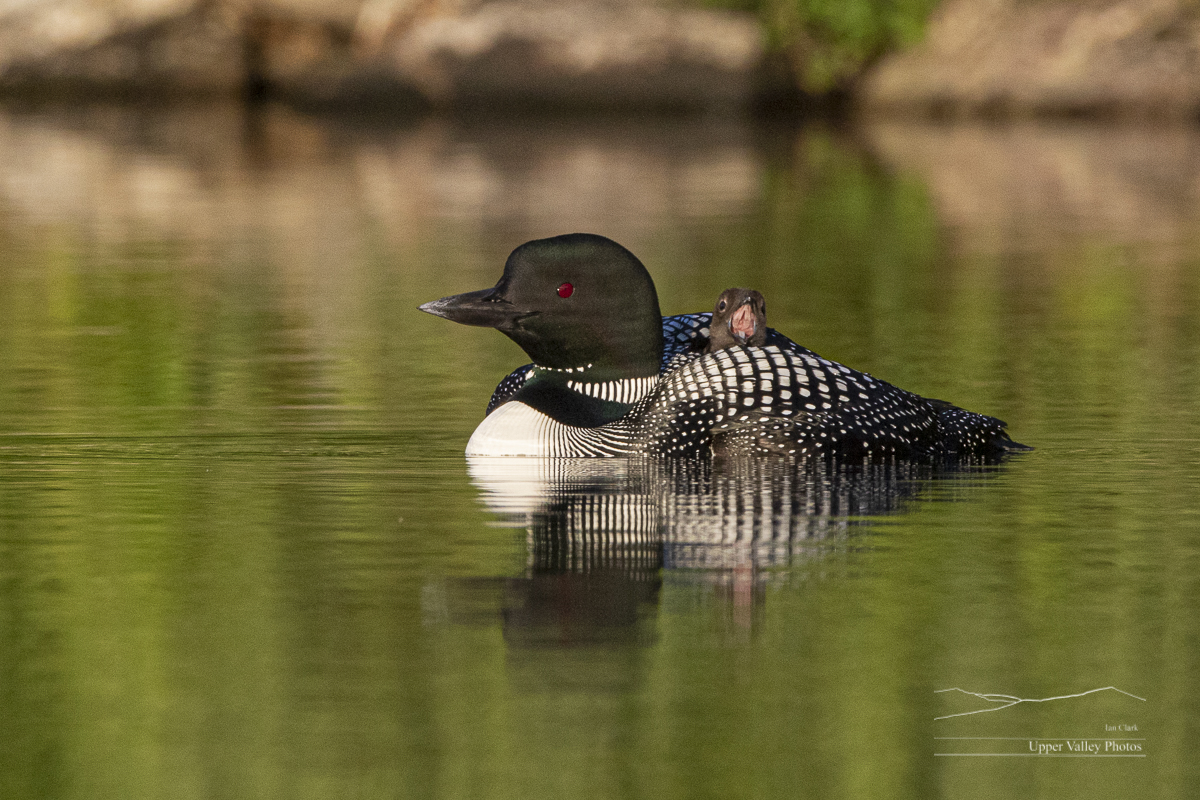
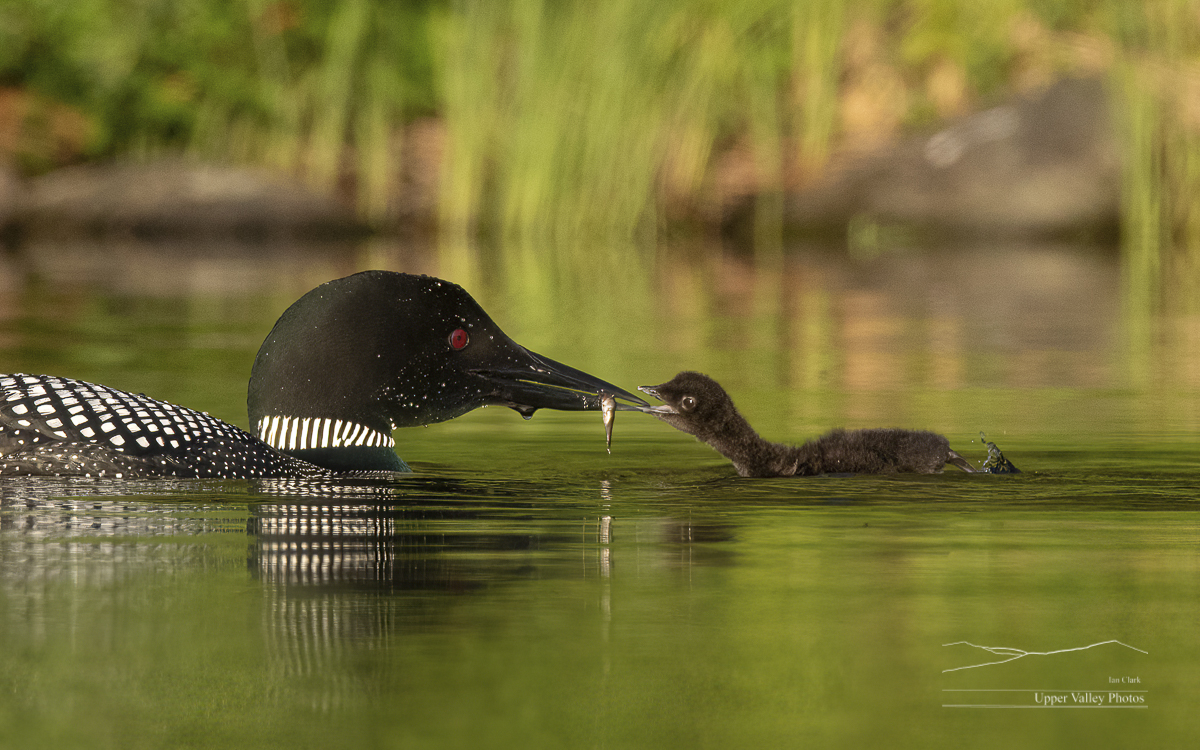
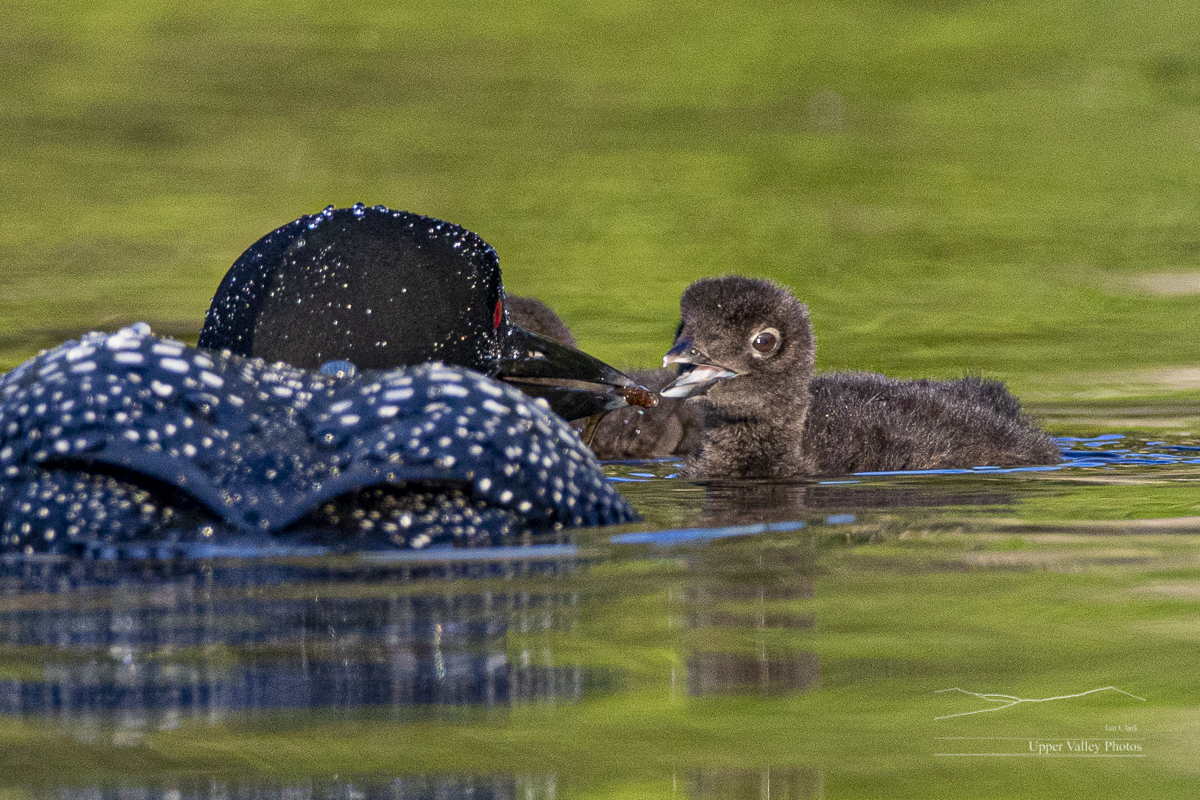
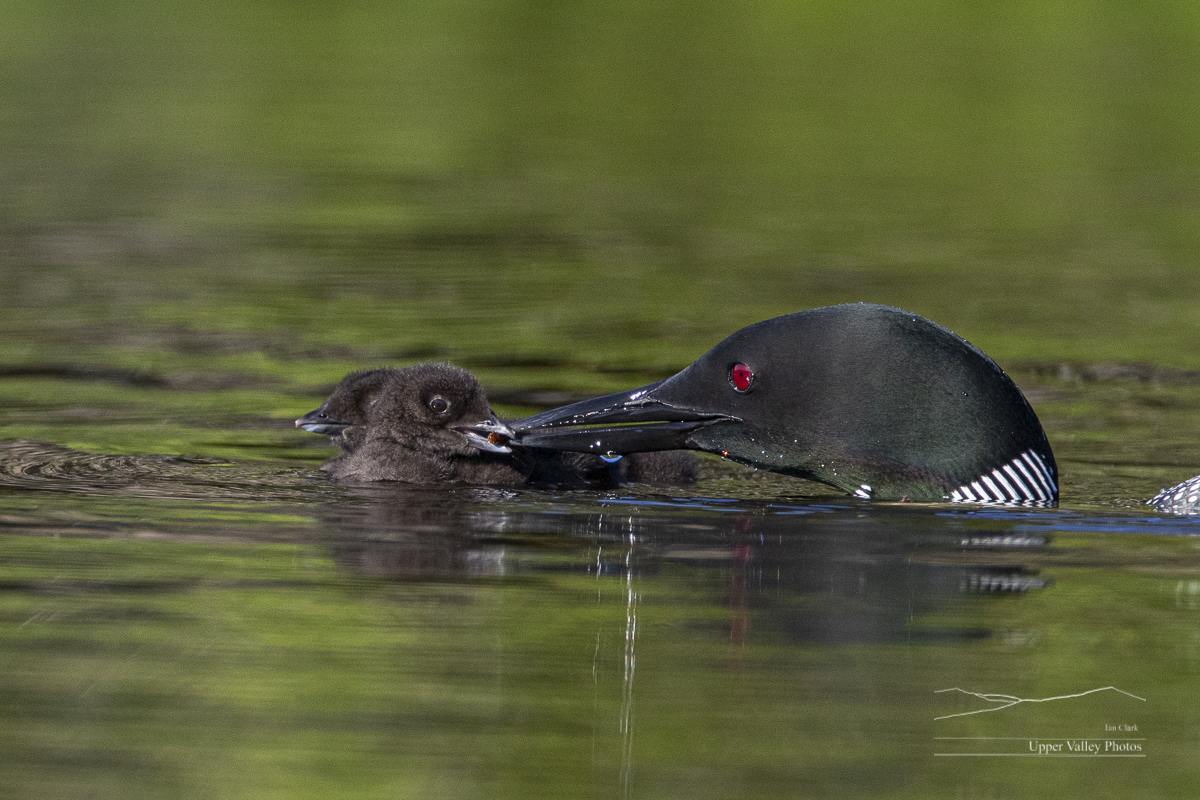
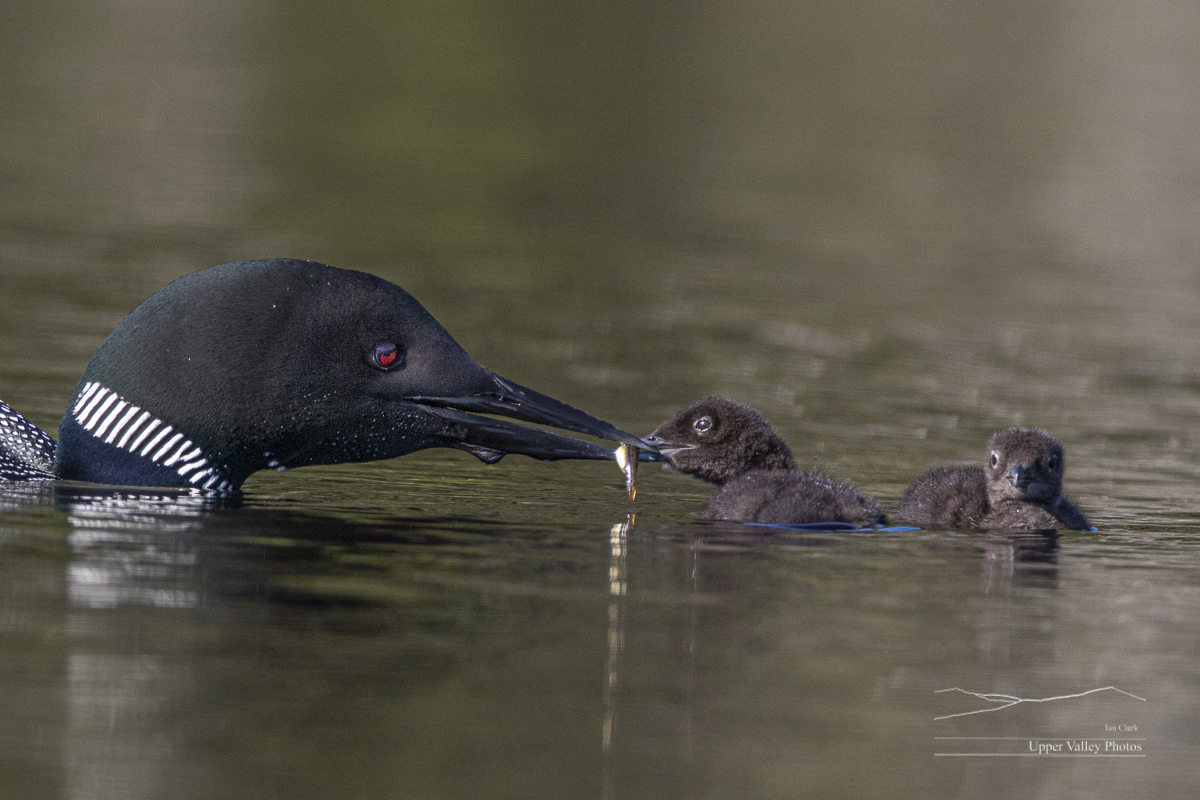

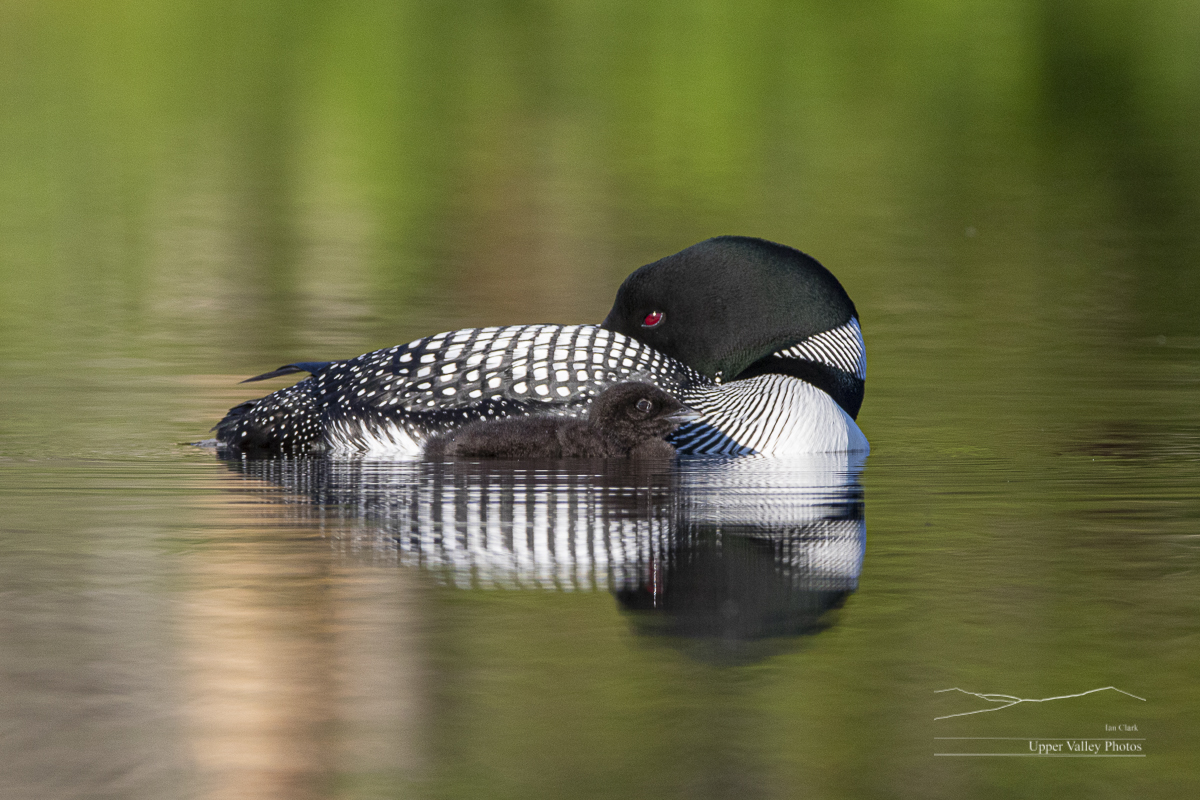
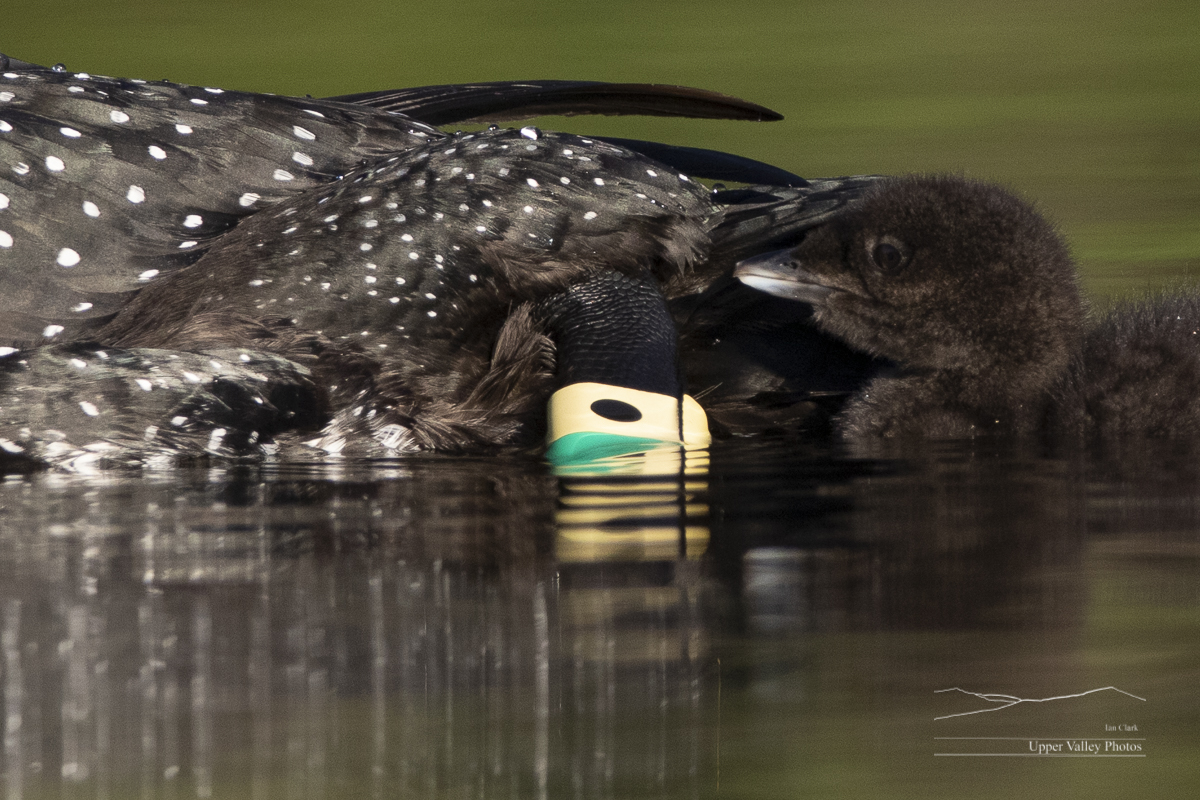
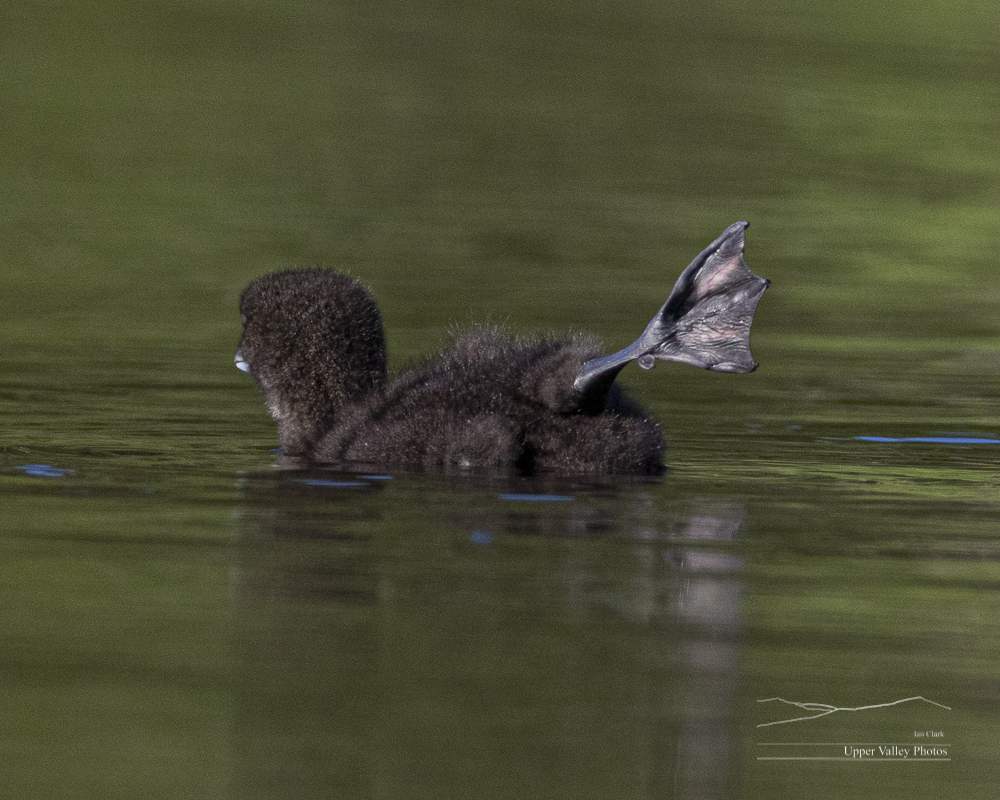
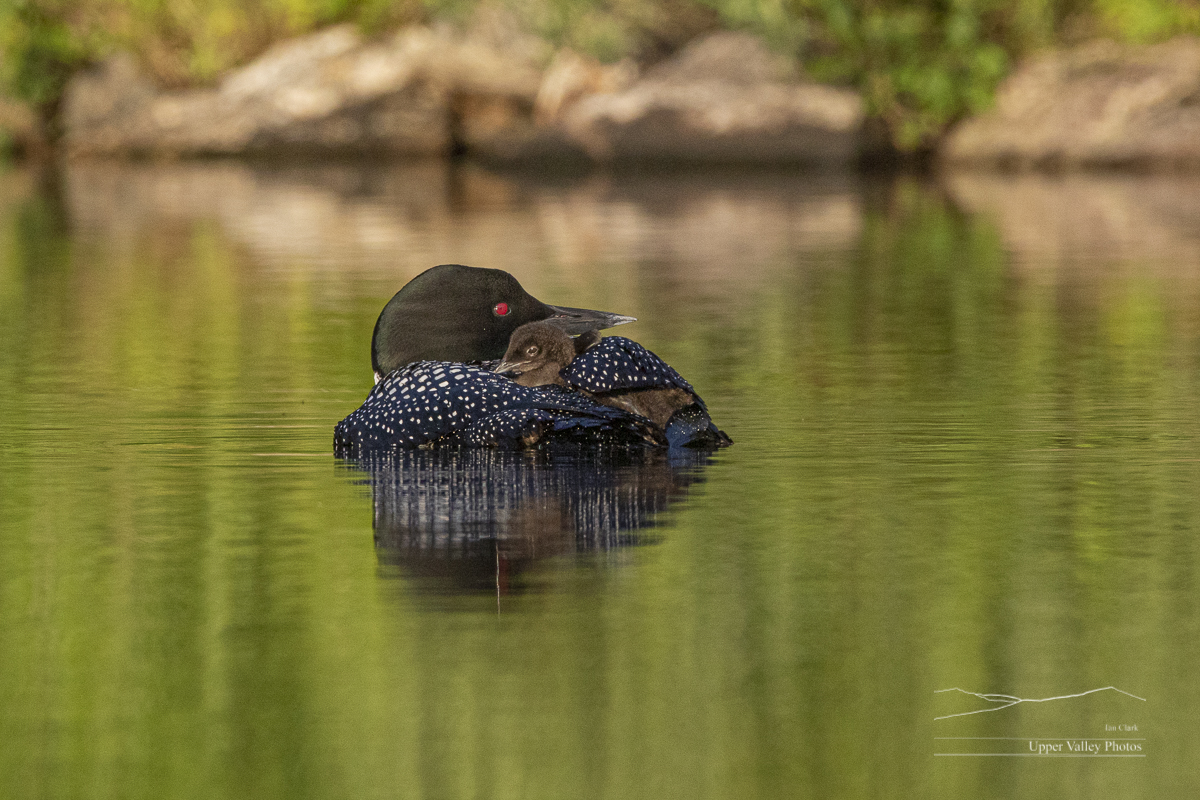


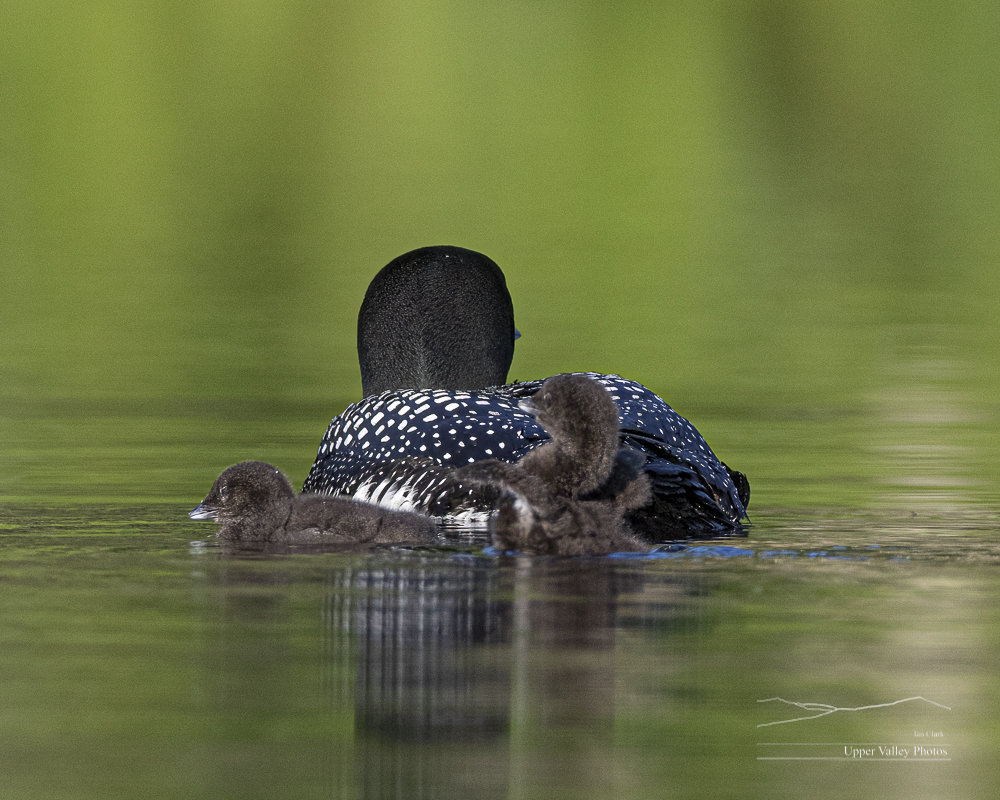
And a few more stretching shots, just because they’re fun…
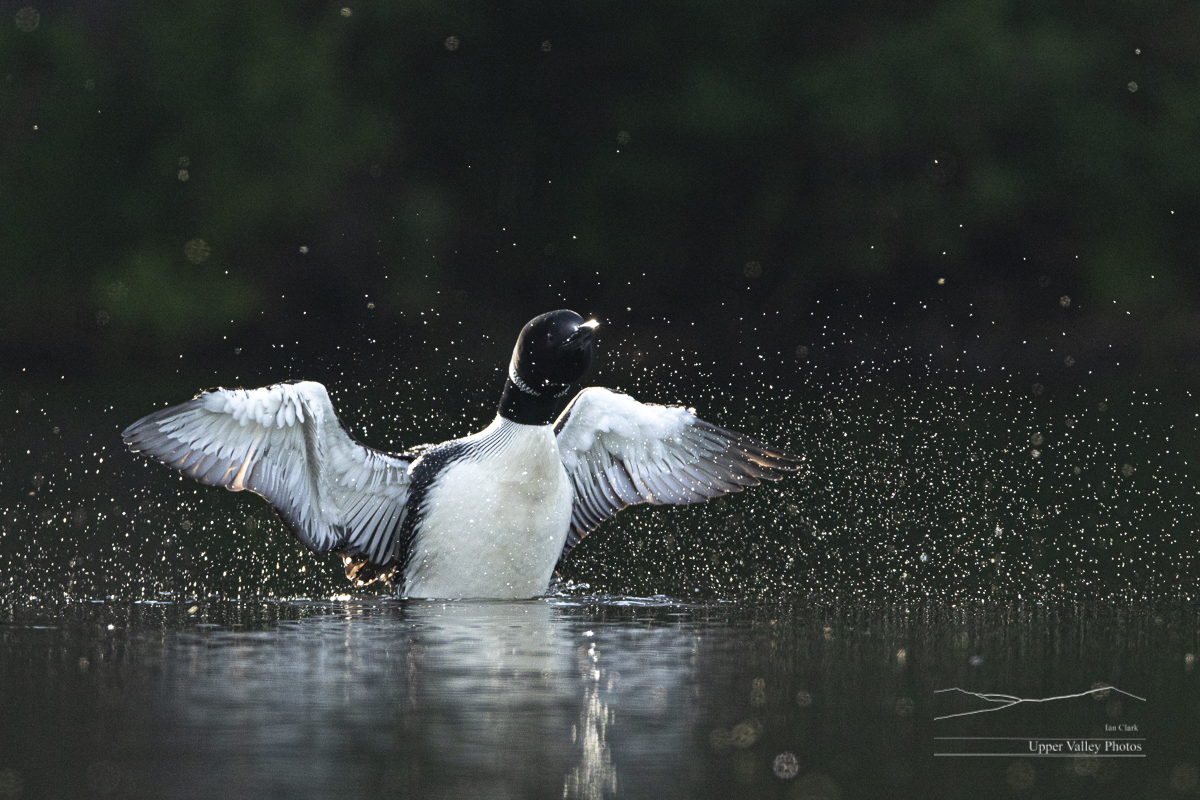

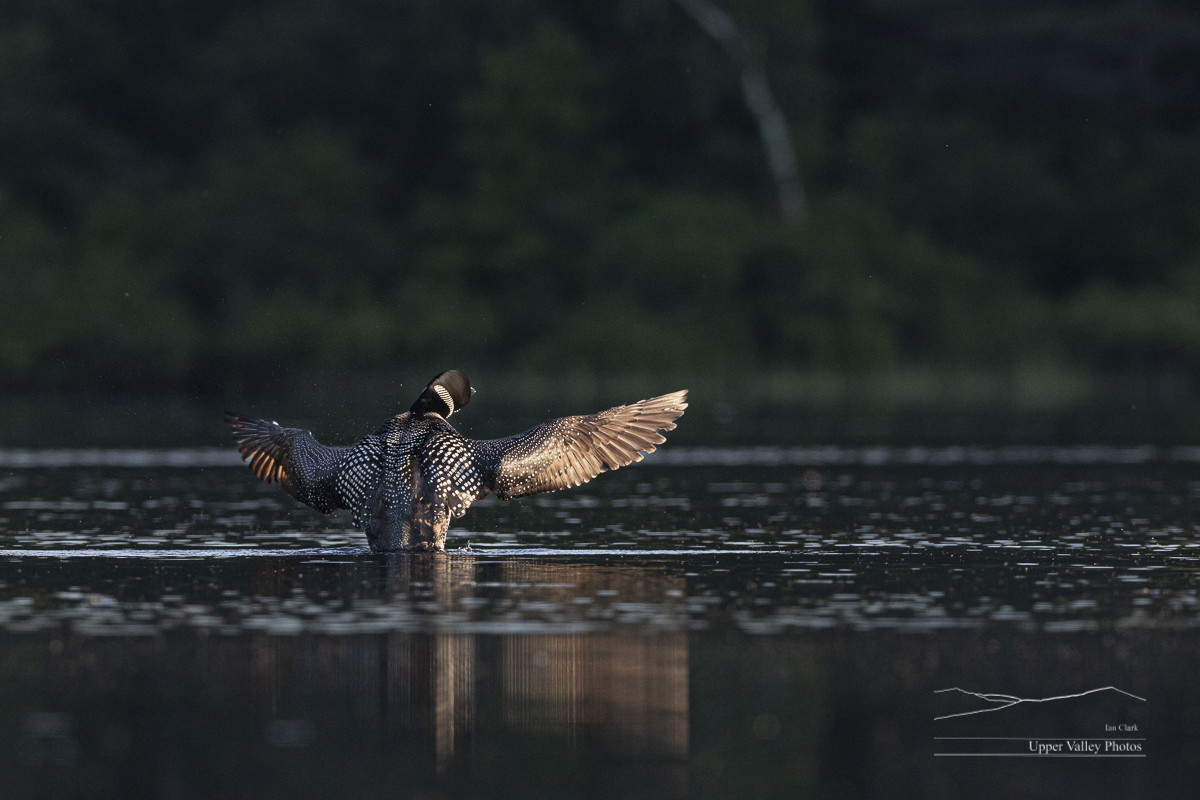
Loon Chicks Have Hatched
The strong winds over the weekend kept me home – pacing wondering how the loon chicks were doing. This morning, the wind was calm, and when I got to the pond, it was fully five degrees above having to worry about breaking ice while kayaking. I was able to check on two loon families.
First, our bluebirds are back for a second clutch. I’m not going to post daily updates for them this round, just too many things going to keep up with them.
If you’d like to see loons, take a look at the Loon Preservation Committee’s site, they host paddling trips where you visit lakes where they know there are loons with one of their biologists.
All the loon photos are taken with long telephoto lenses and cropped to let me shoot without disturbing the birds.
When I arrived on the pond, I found one adult preening and lazily foraging by itself and couldn’t see anyone on the nest. As I paddled down the pond, I found the second adult still on the nest. But the chicks should have hatched already….
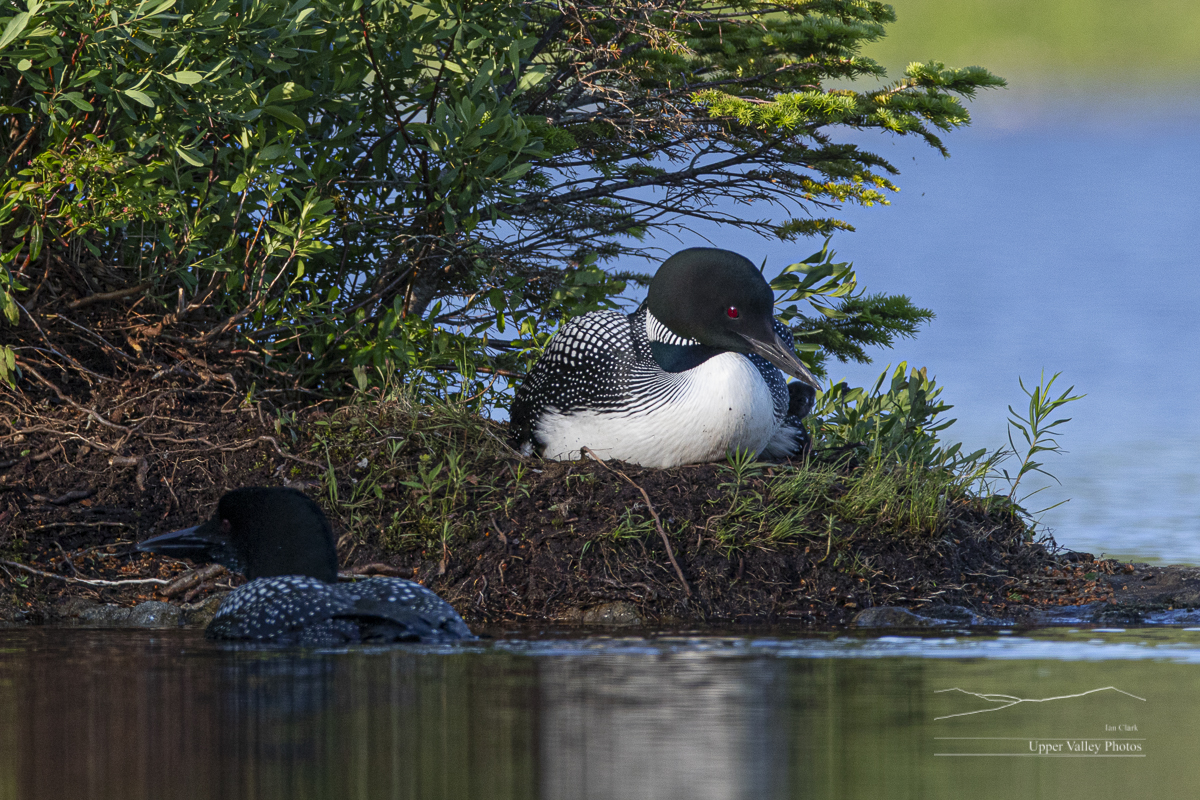
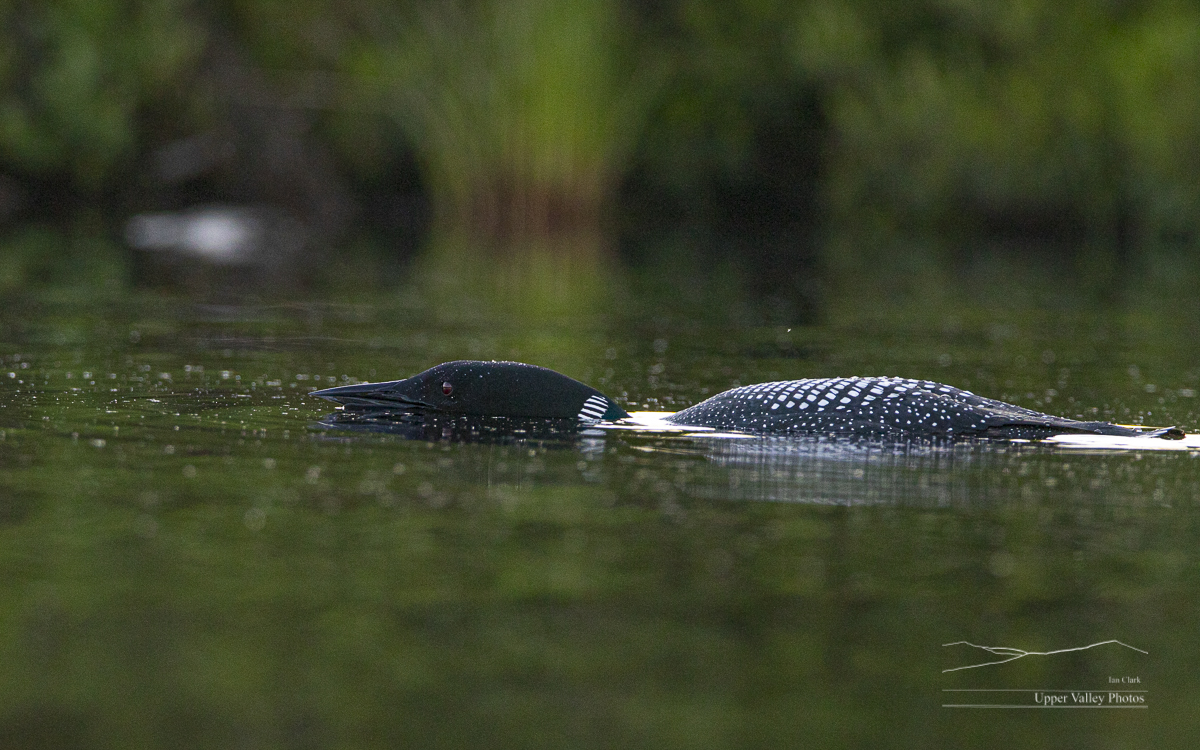
With the chicks still in the nest, the odds are that one hatched Saturday and the other Sunday. Loons will leave the nest shortly after the second chick hatches. If it is late in the day, they may spend the night on the nest before heading out. The adult on this pond waited for the sun to get almost to the nest before heading out with the chicks.
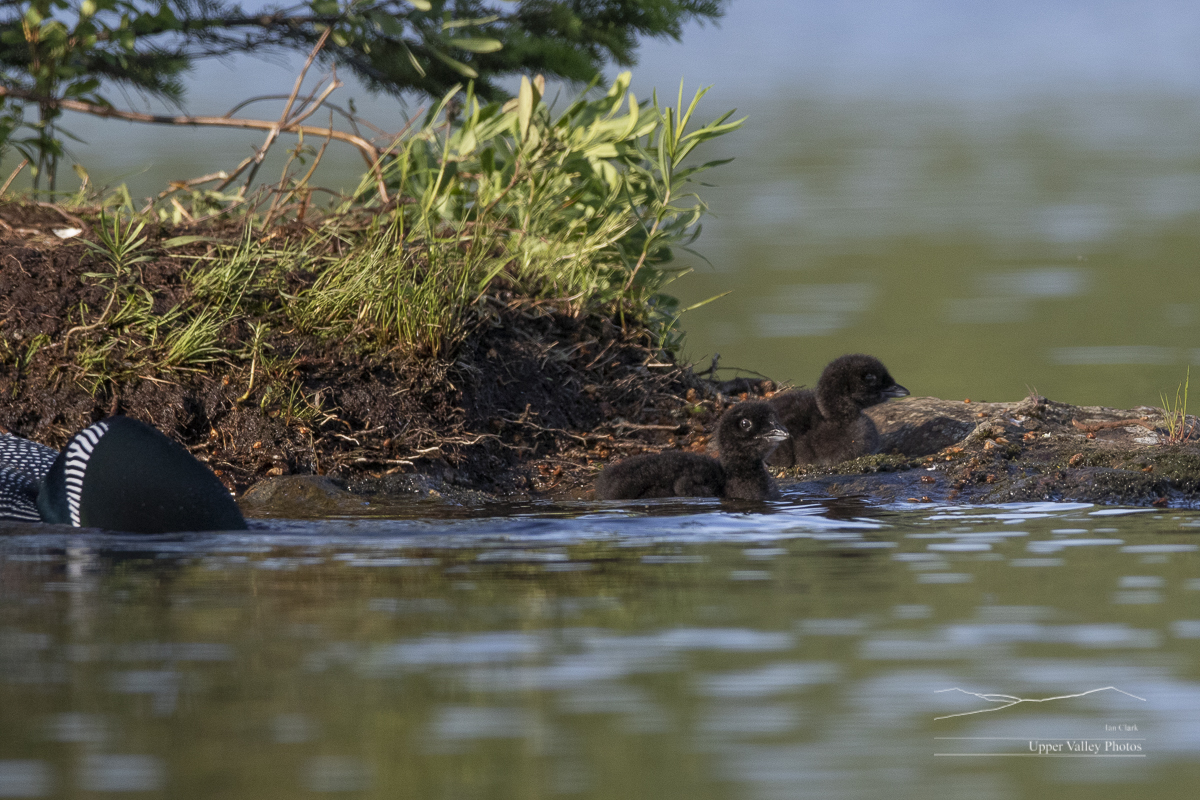
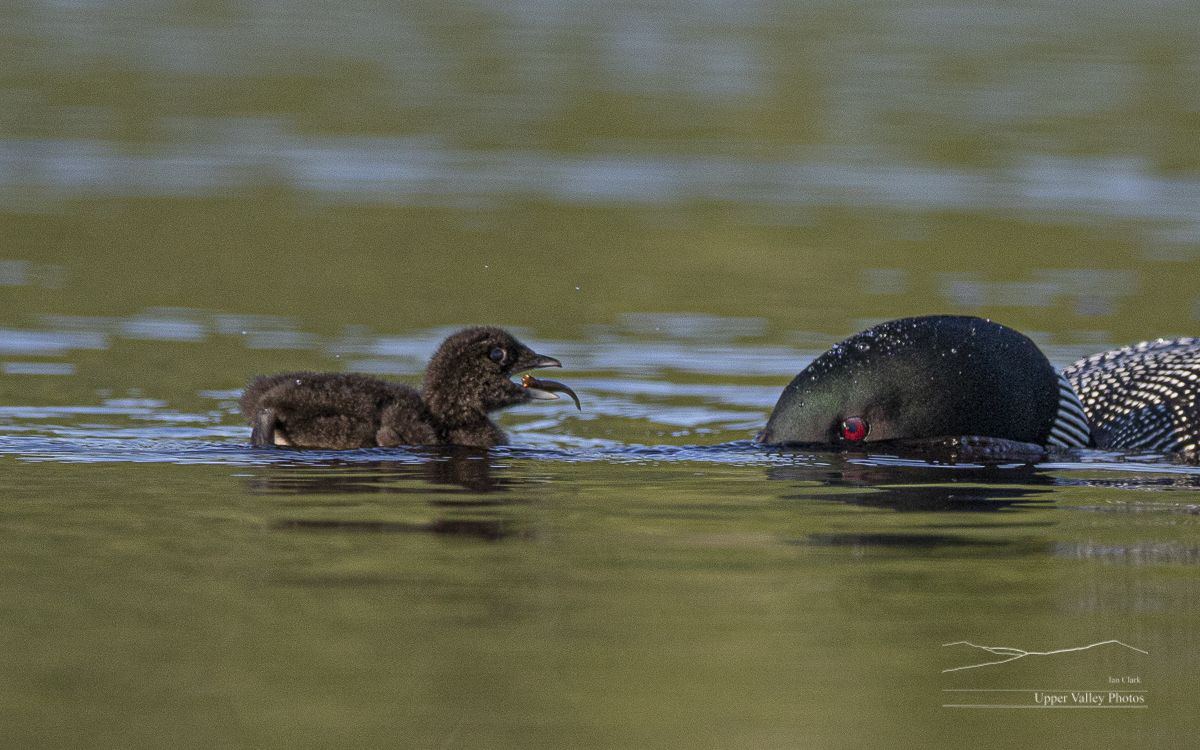
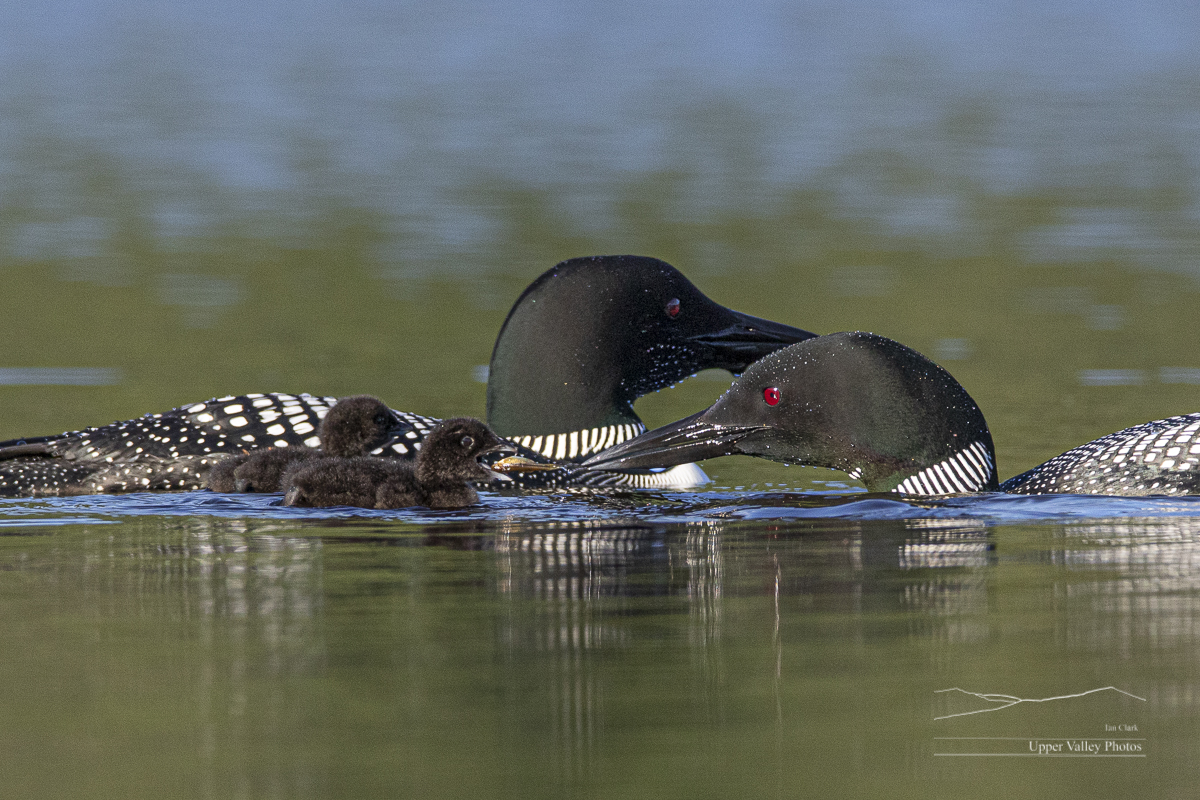
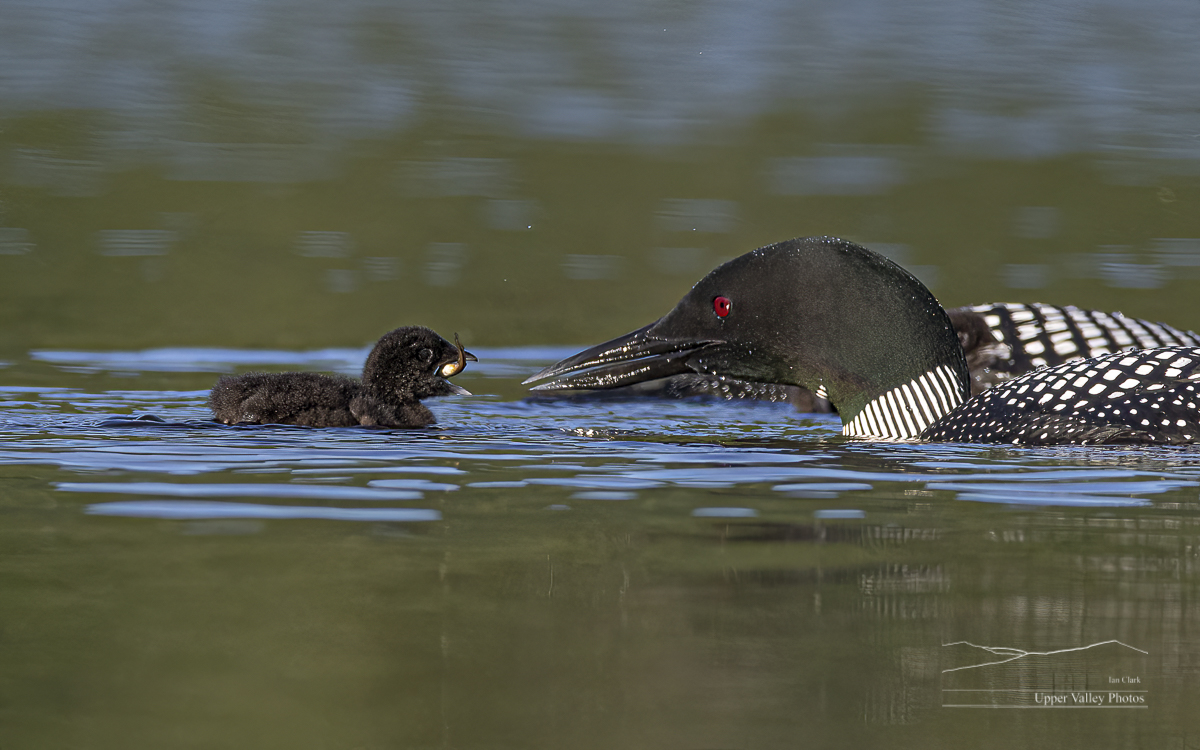
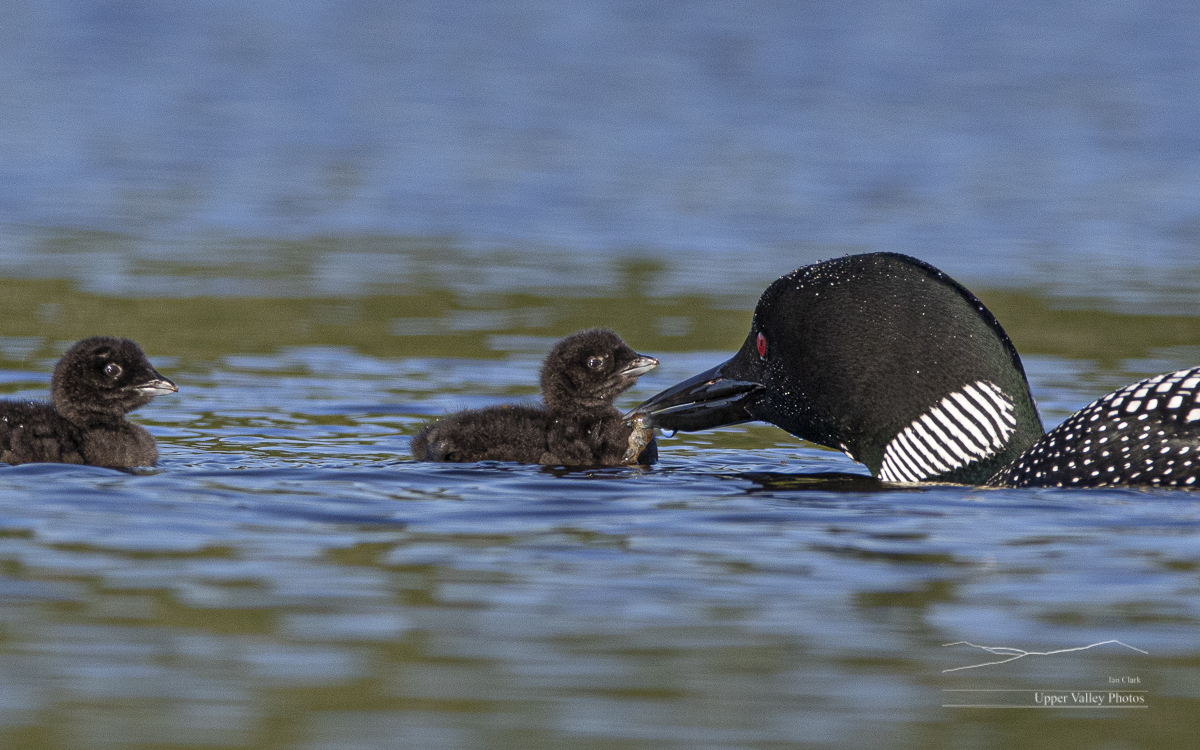

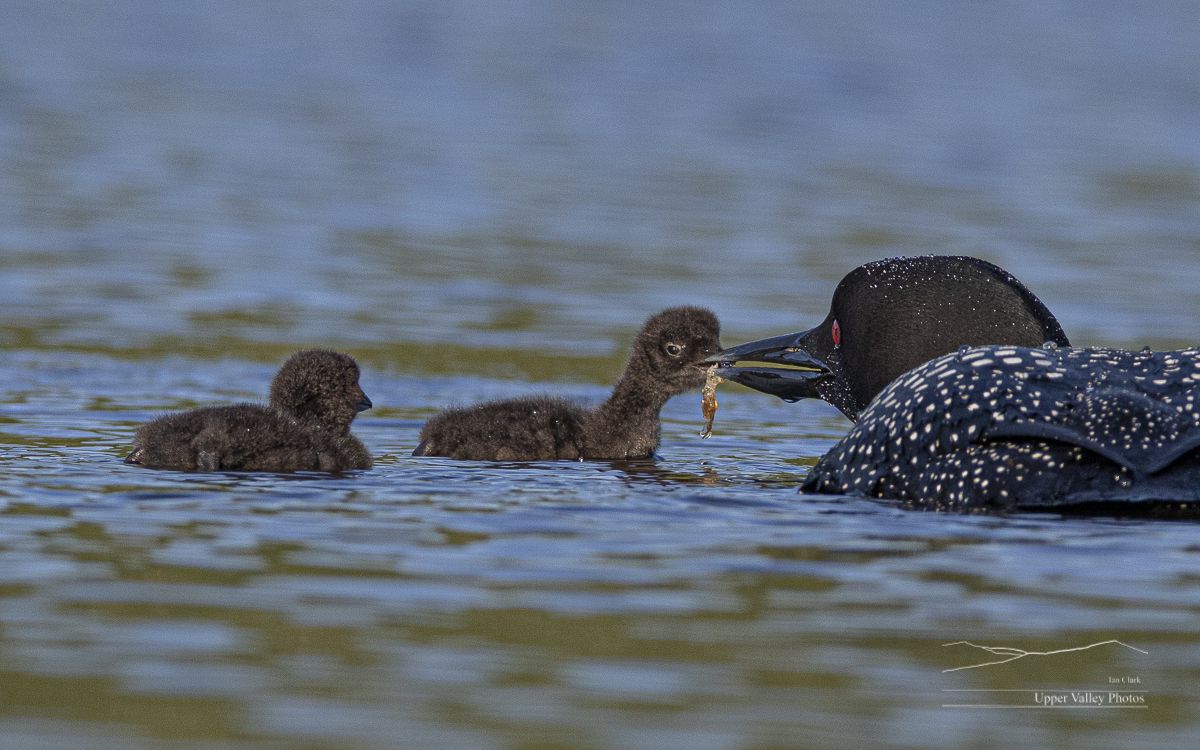
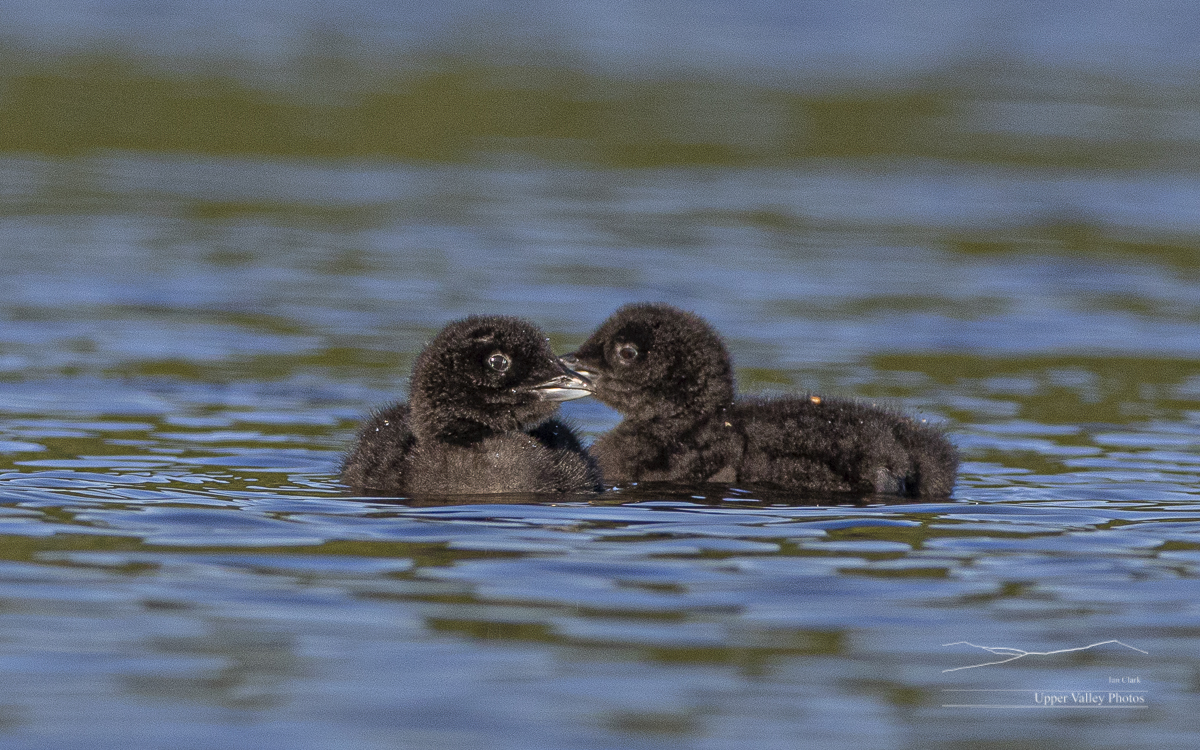
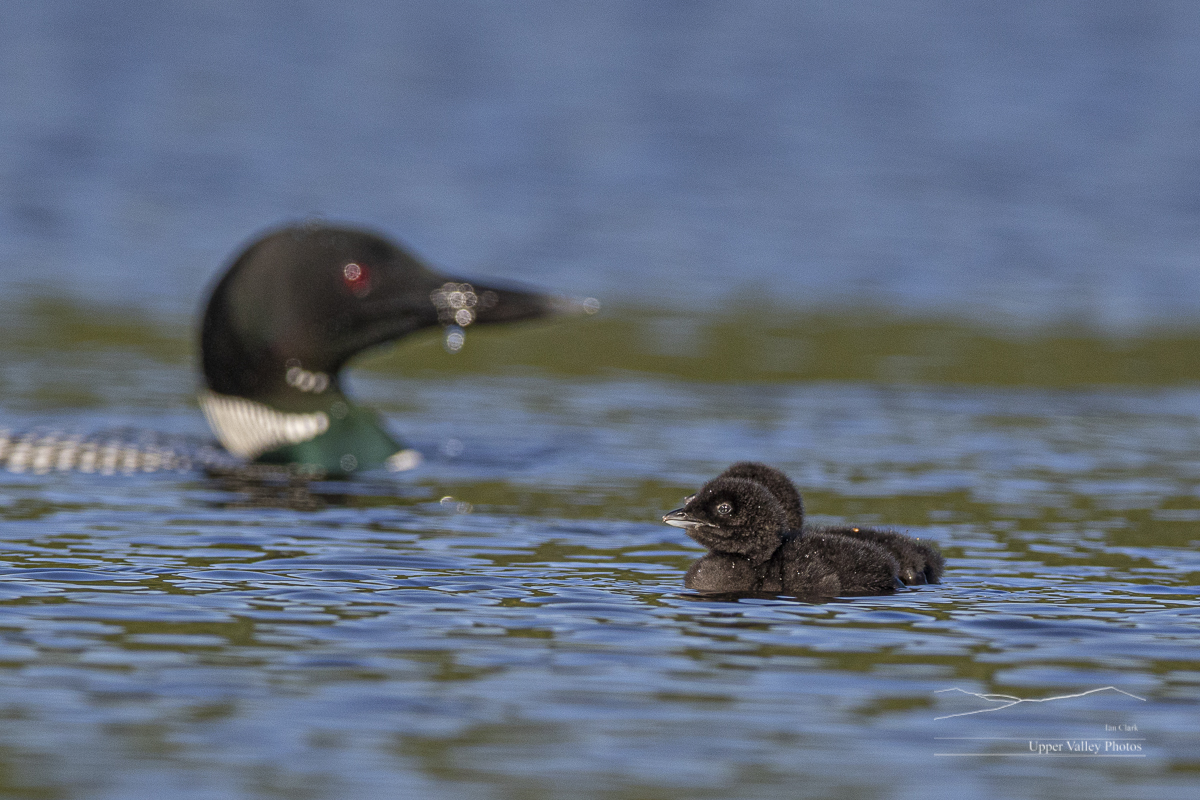

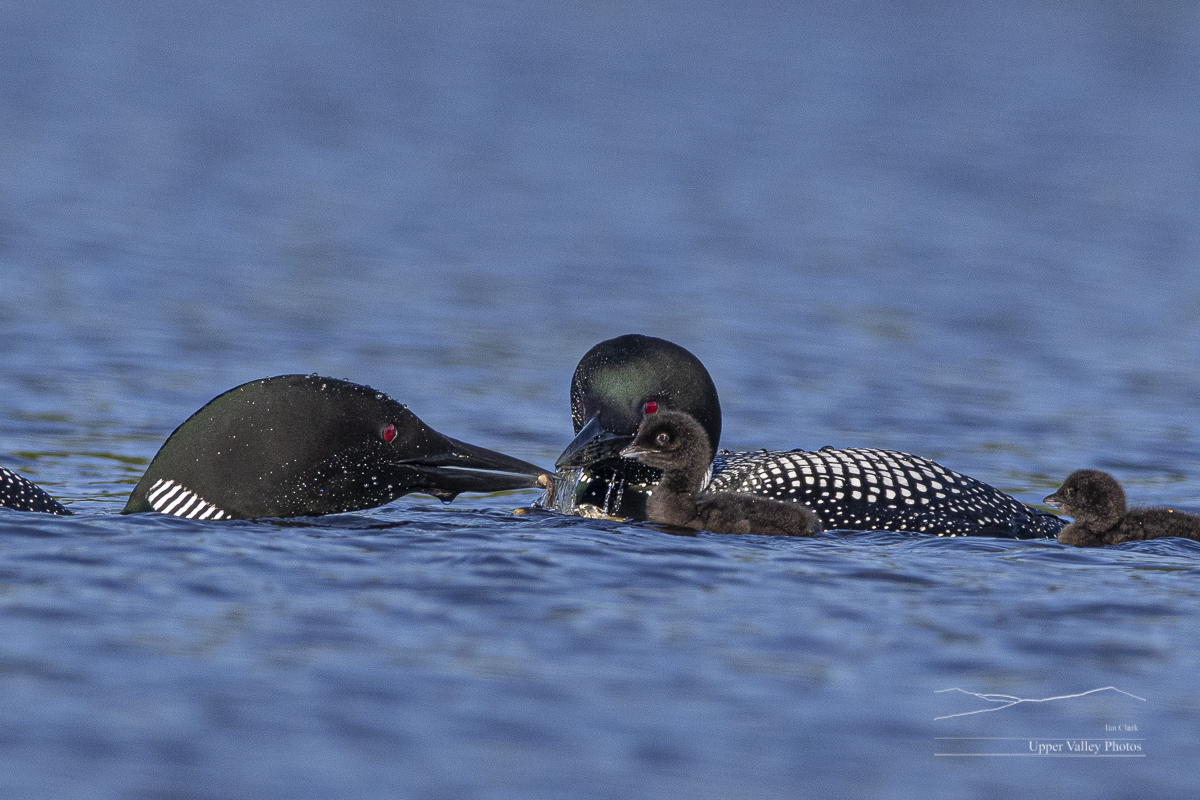
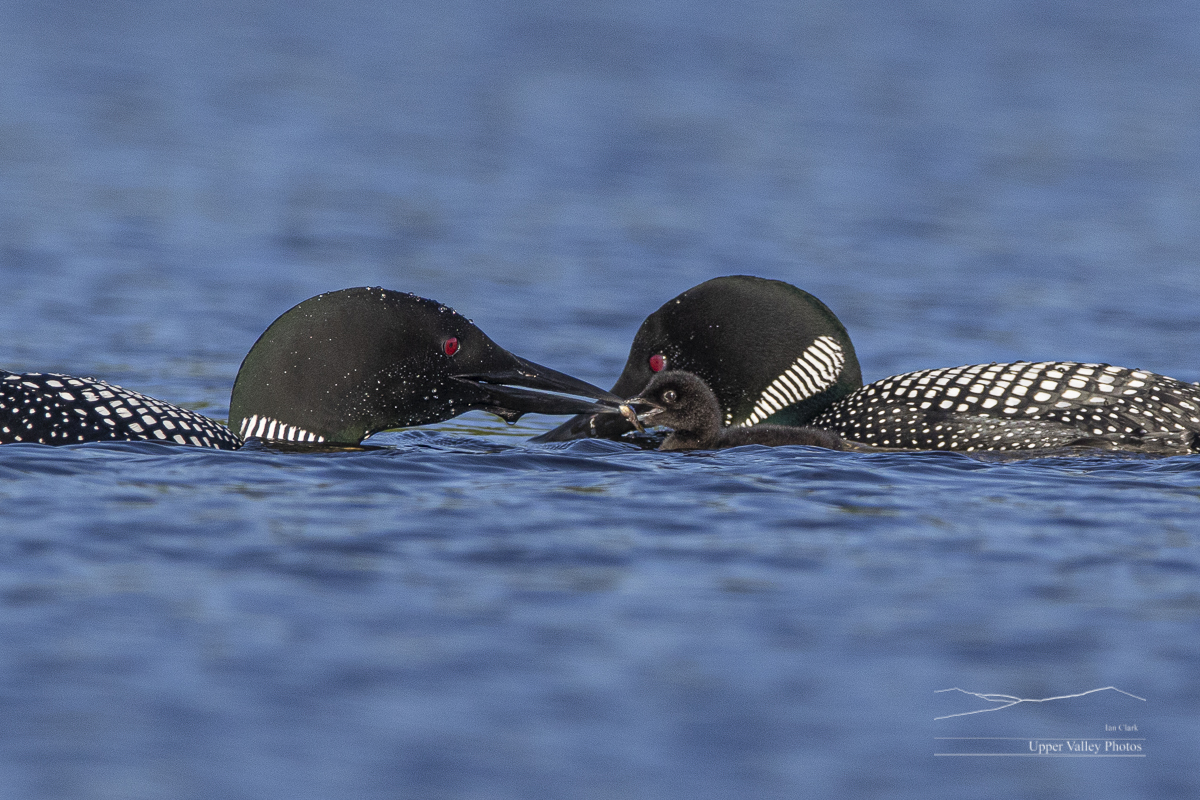
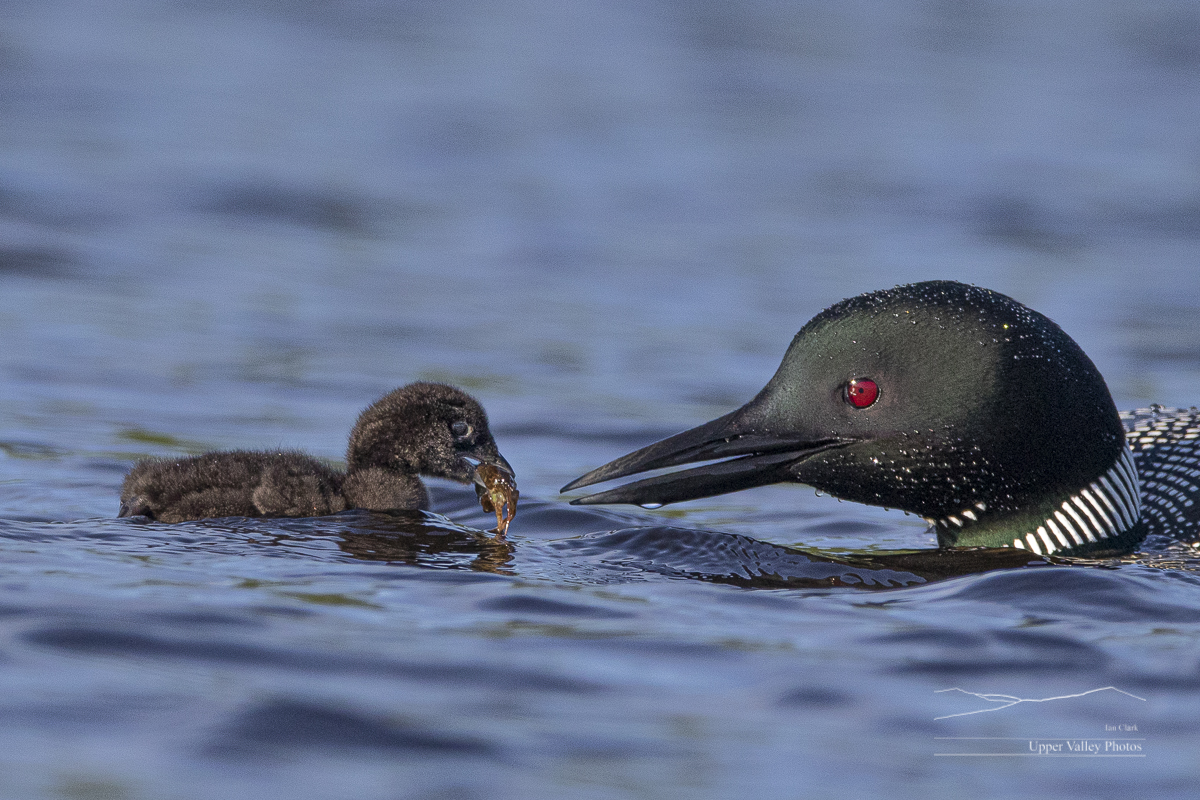
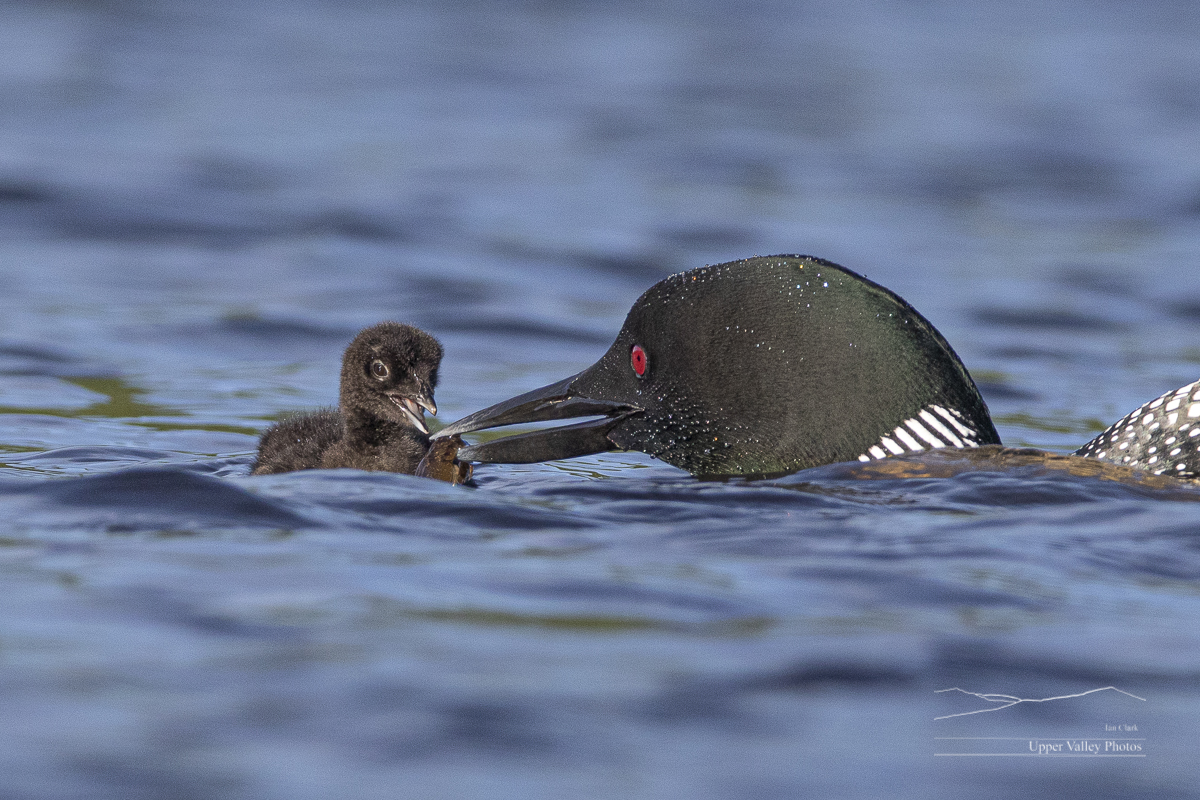

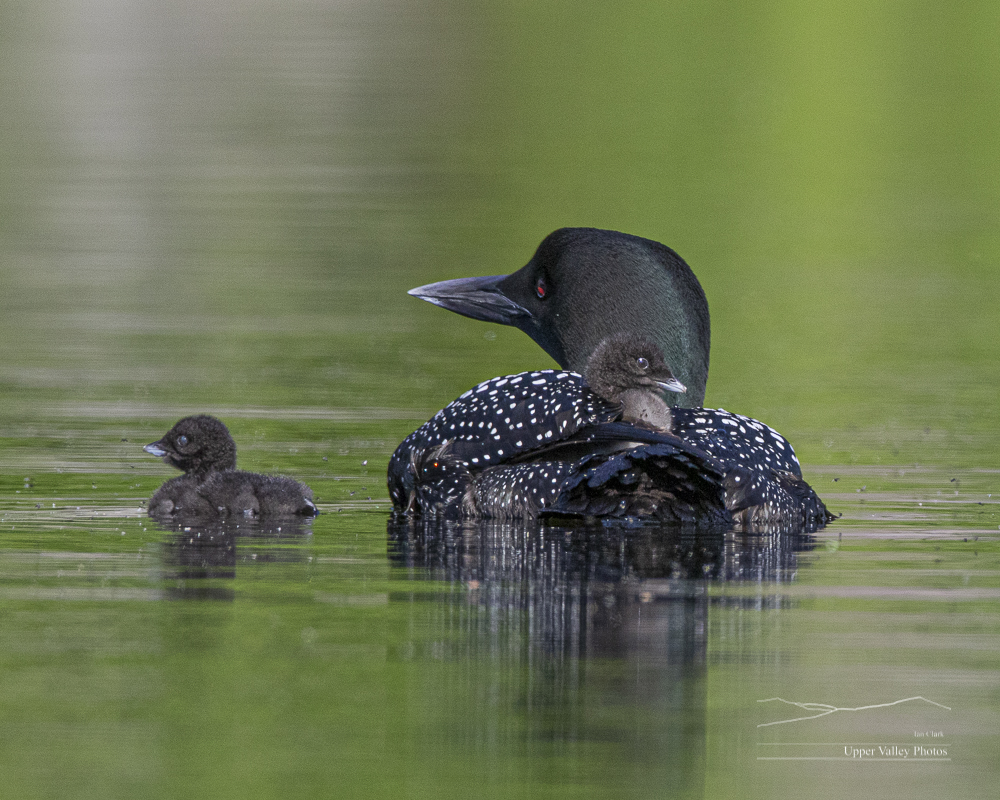

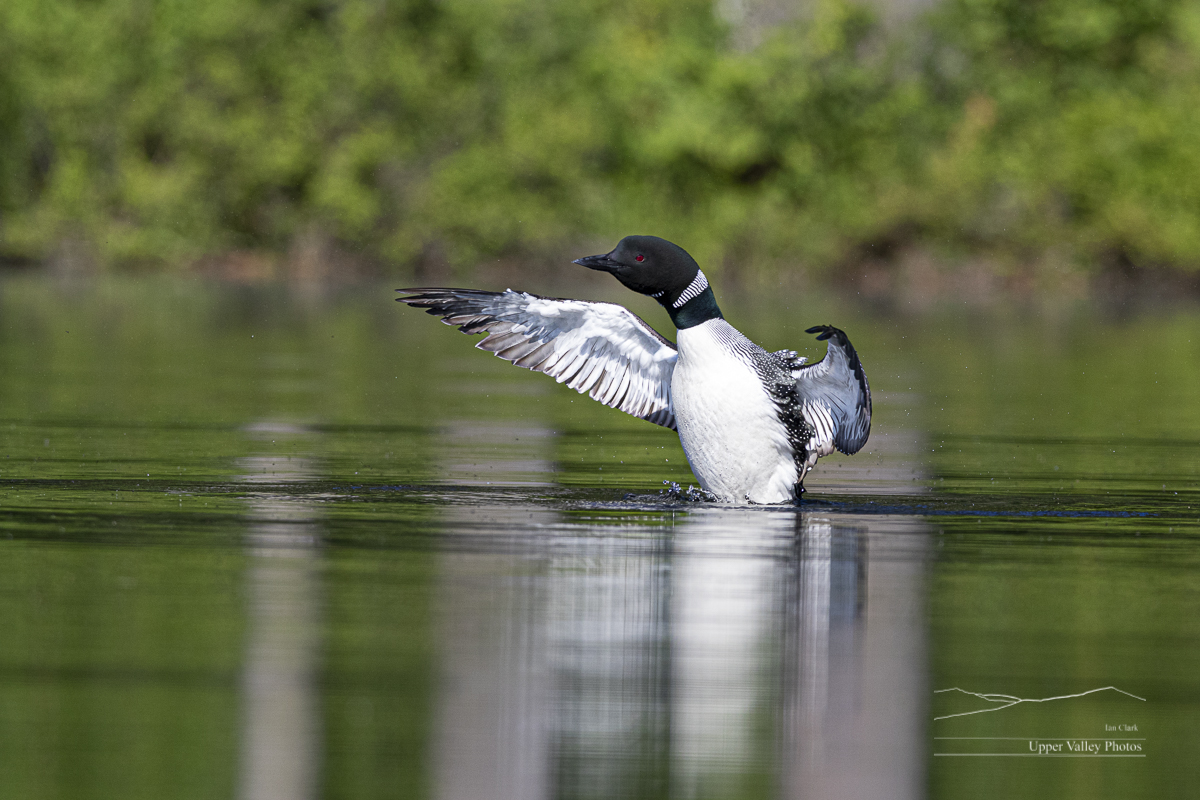
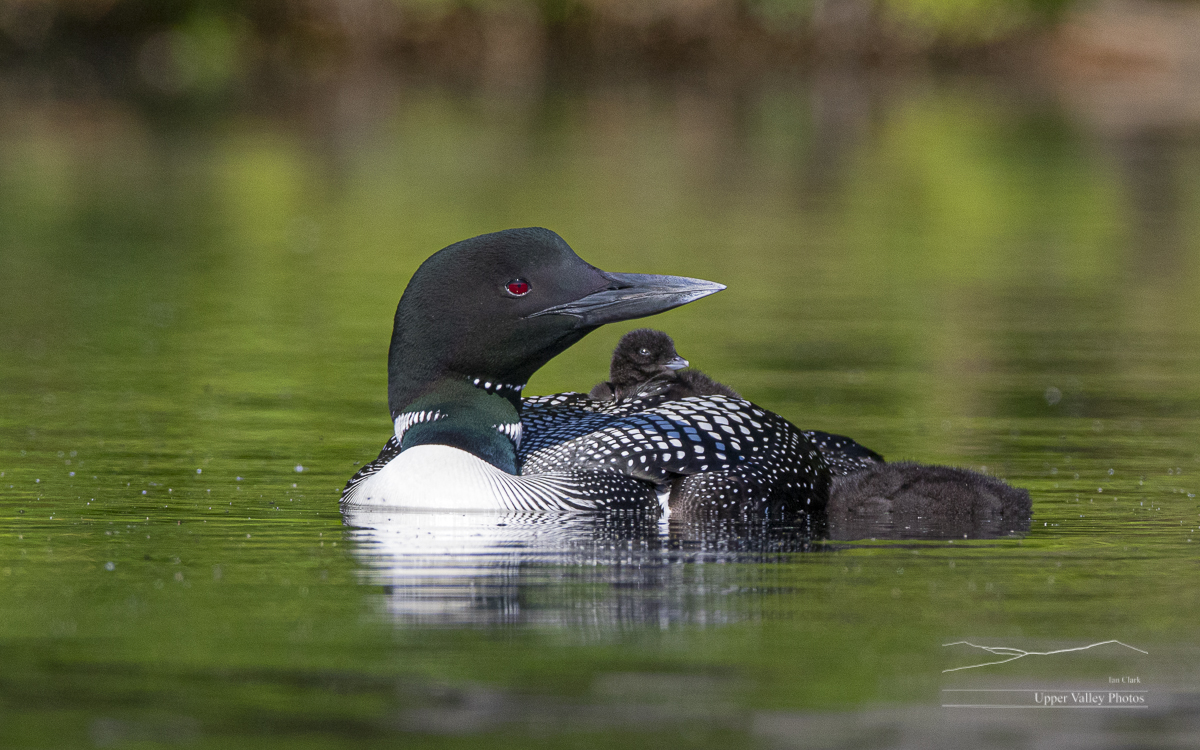
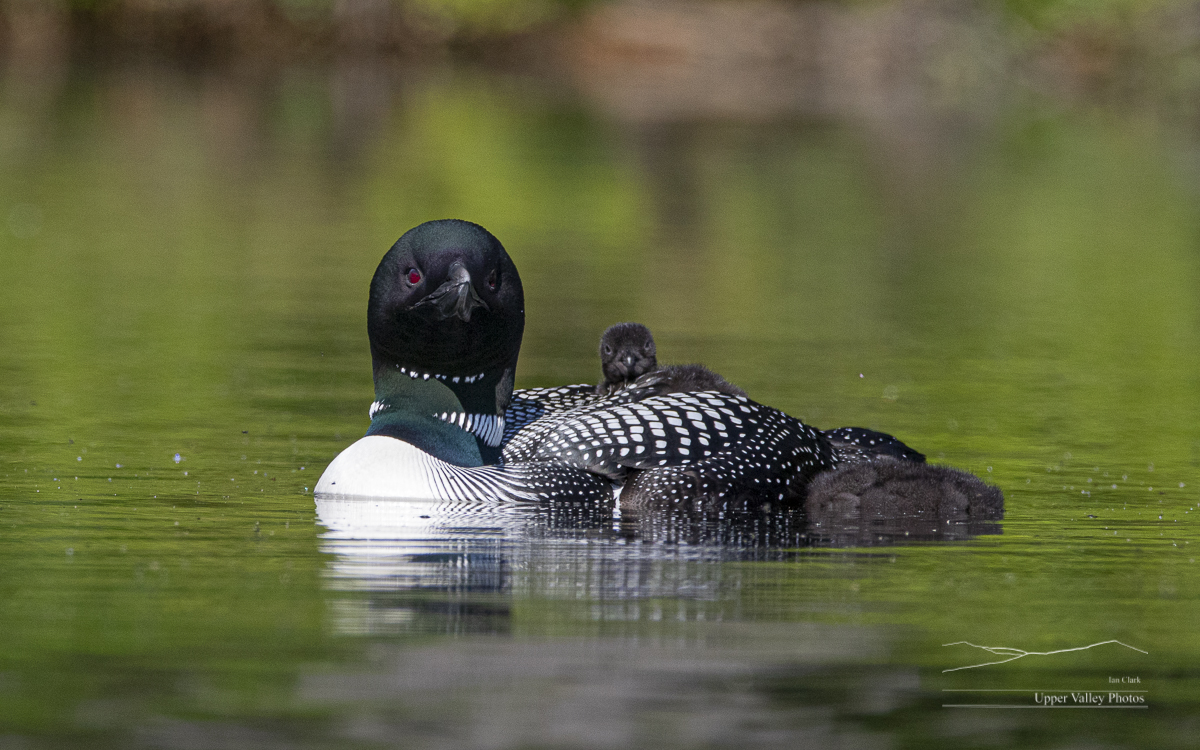
I hope to be able to follow these two families and a third through out the season. To watch them grow, sign up for updates when I add a post.
